03-06 September 2023
We headed north to the town of Jasper late morning, through intermittent rain along the way. Beginning near the town of Banff, the drive was entirely within Banff or Jasper national park, all on the Trans Canada Highway. Hard to imagine a three-hour drive on a highway in the US all within a national park. After we passed the turnoff for Lake Louise, the landscape changes dramatically with close and distant views of the Rocky Mountains. Unlike a drive along Highway 395 in California, where the eastern Sierras rise to high peaks miles from the road, the Canadian Rocky Mountains rise close from the road. You readily see sedimentary layers at 45-degree angles. Often you see stratified layers of rock interspersed with a layer covered in fir trees. The drive took us through an area of ice fields (glaciers). And the lakes and rivers are a startling blue-green color; the glacial silt in the water reflects light to create the distinctive colors.
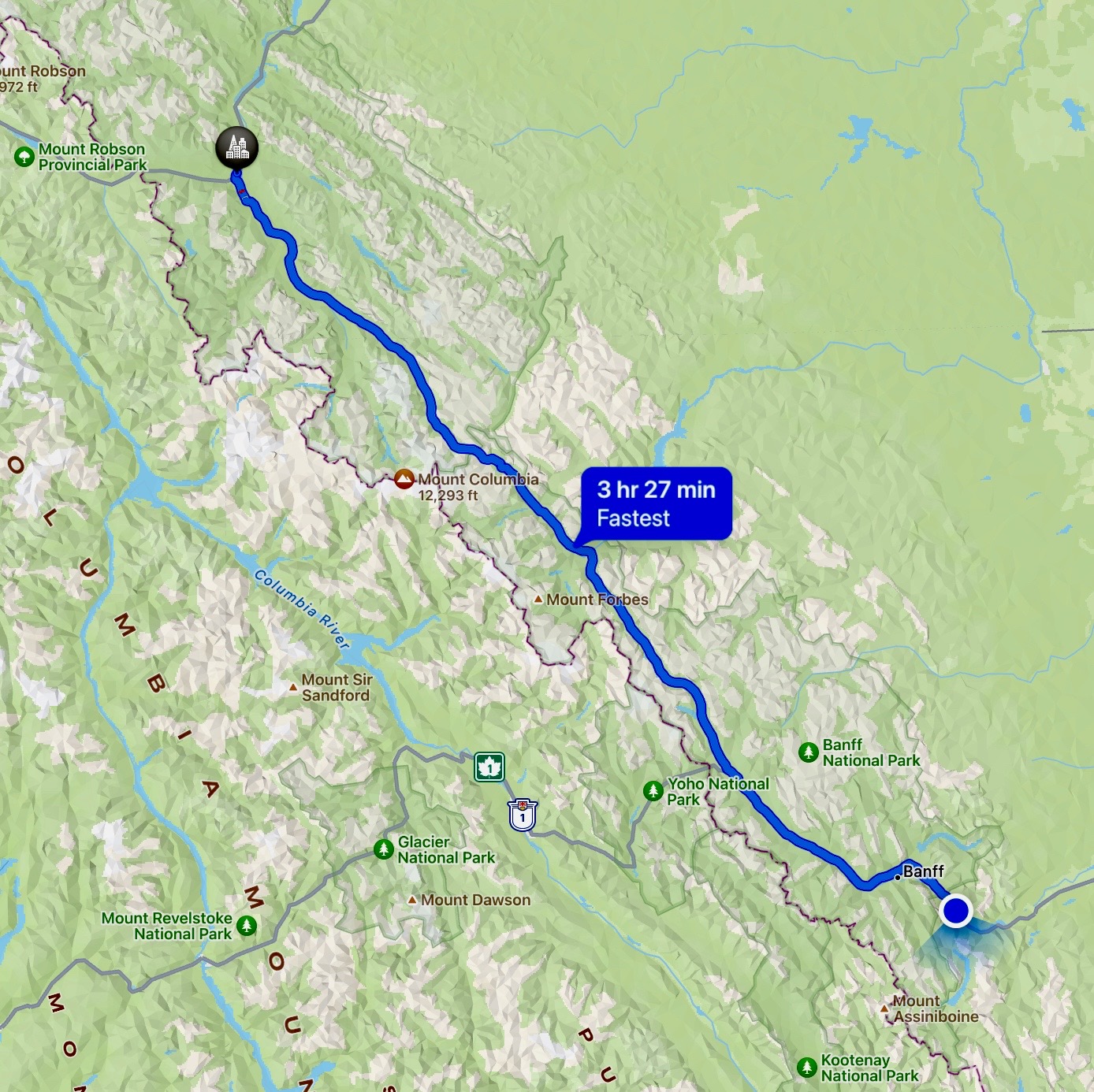
En route from Canmore to Jasper
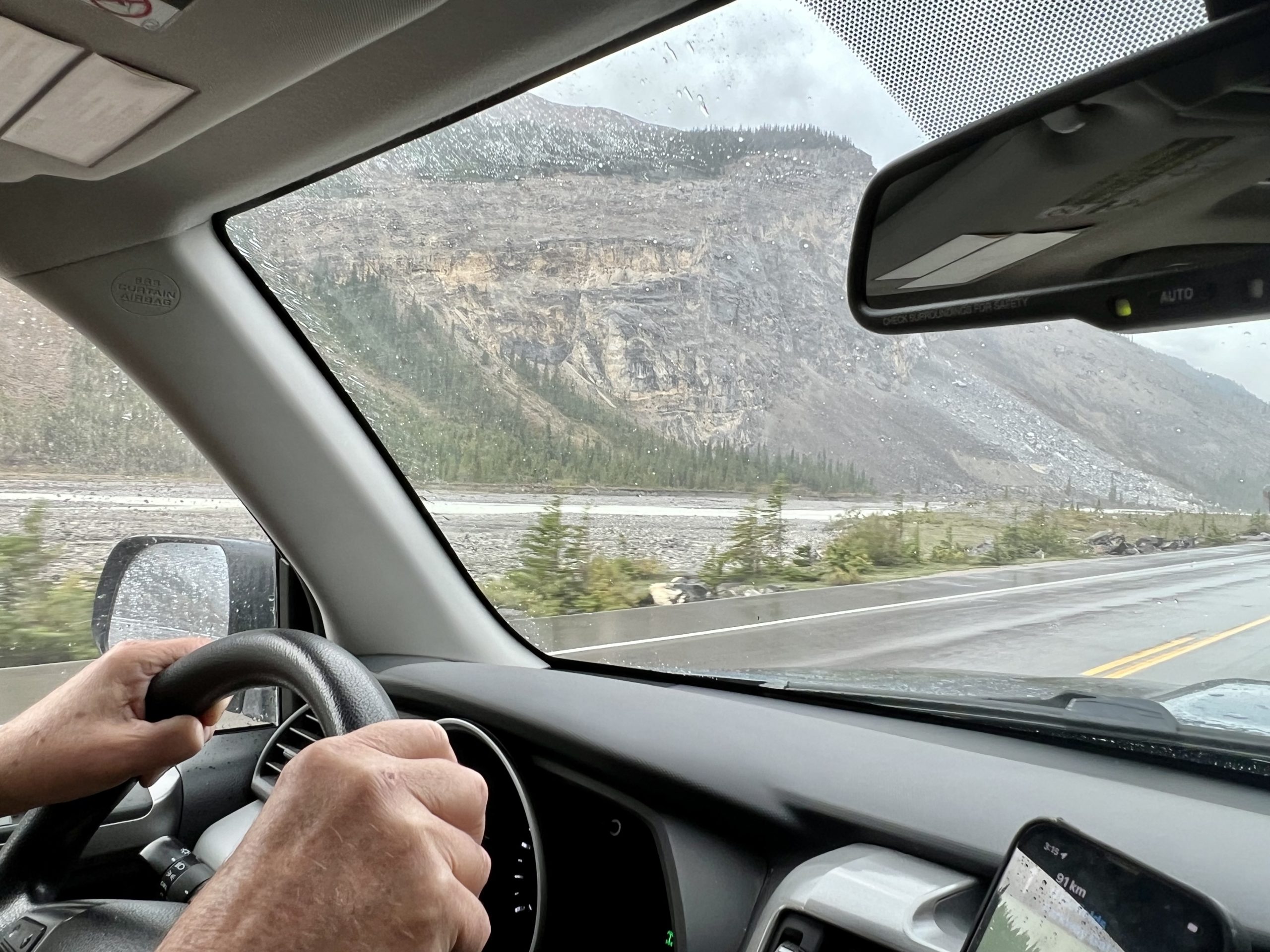
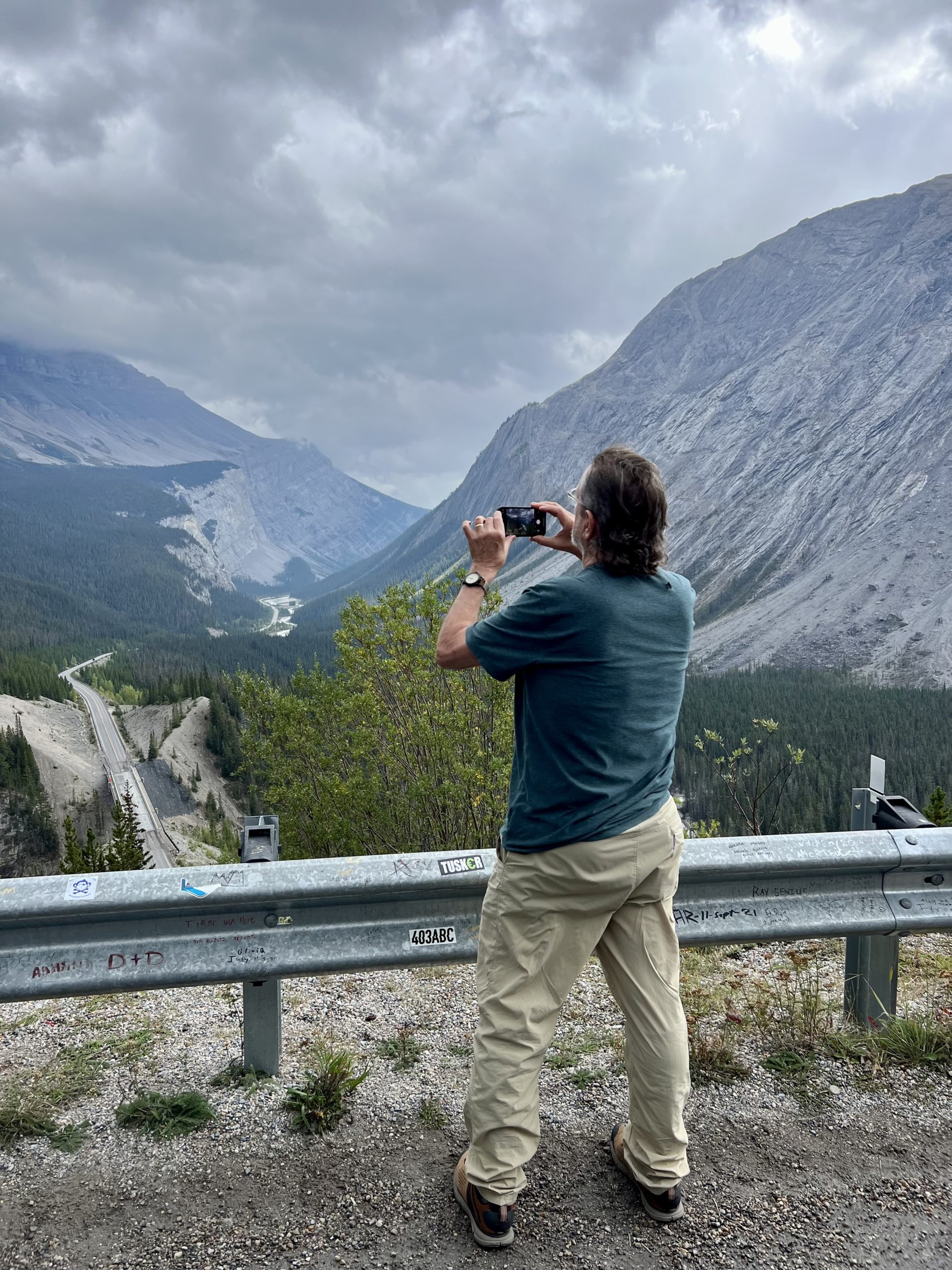
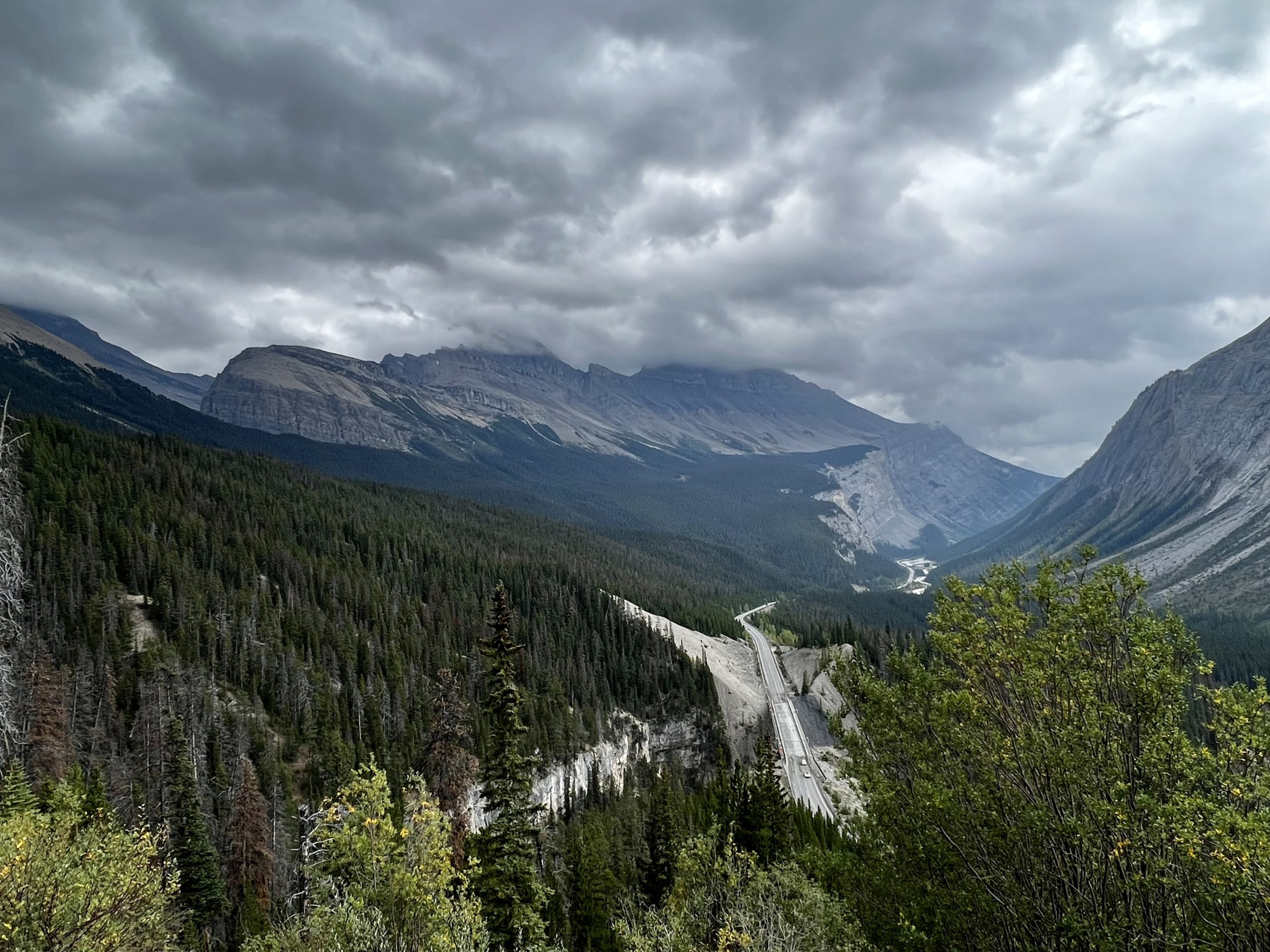
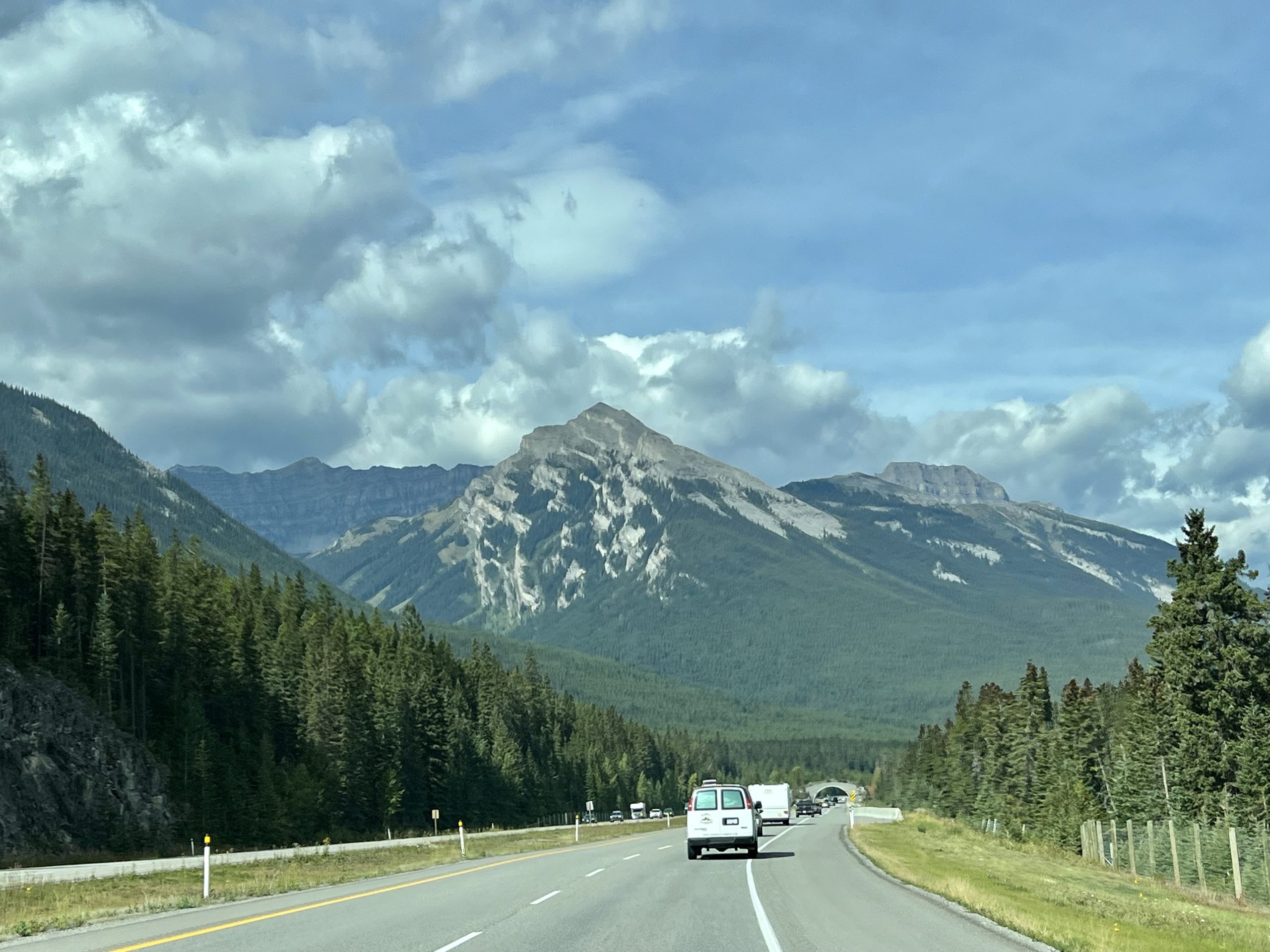
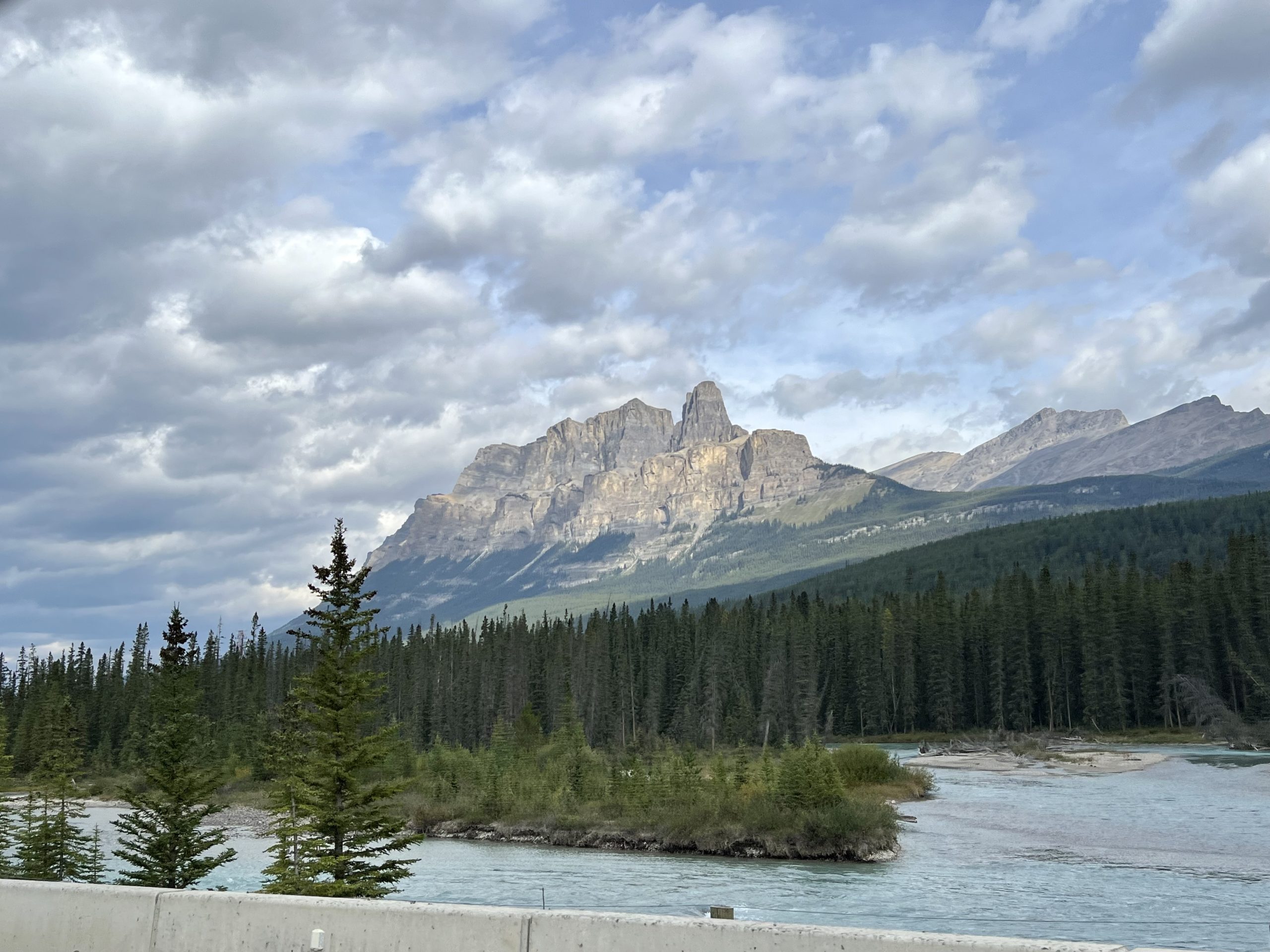

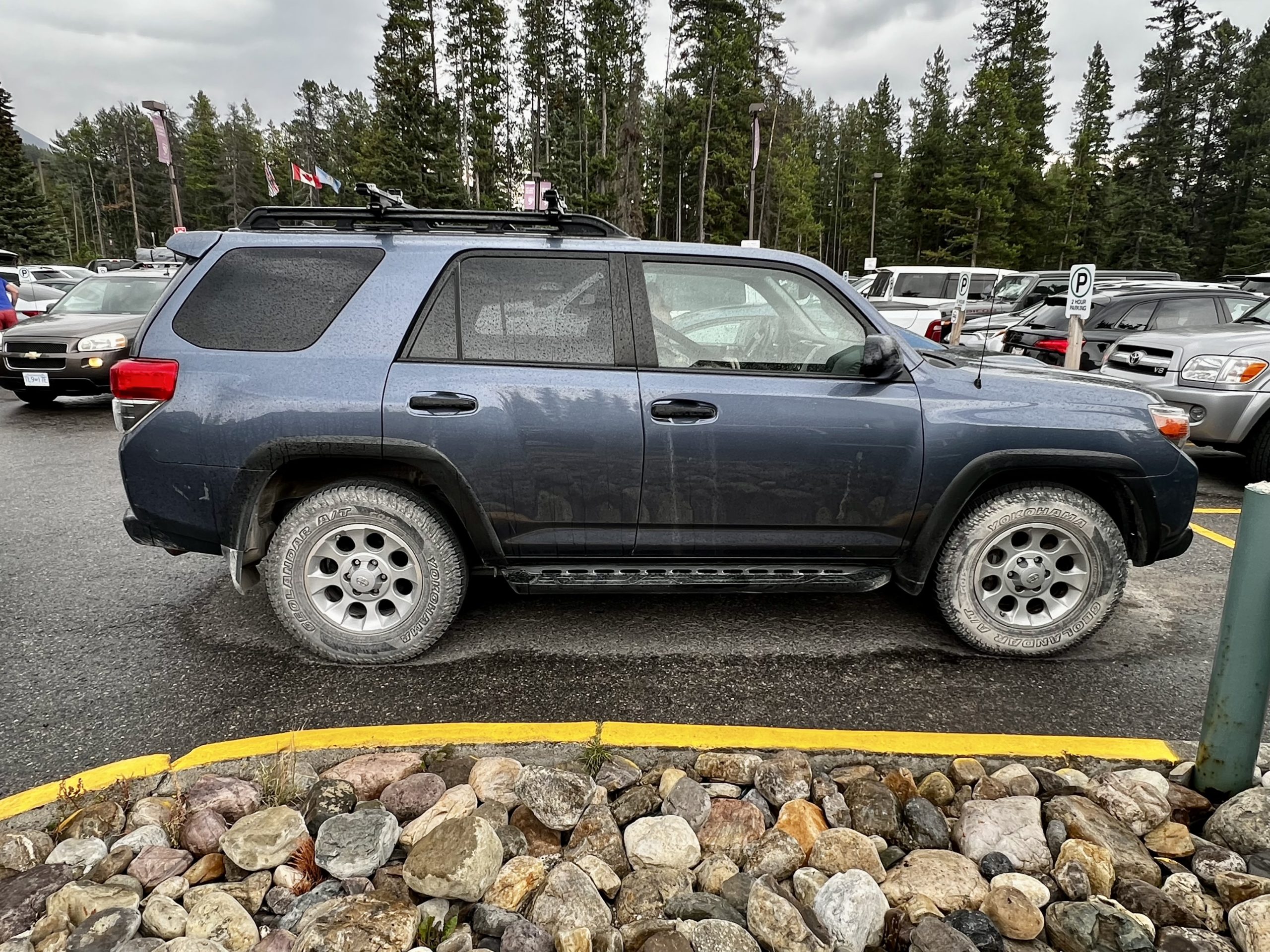
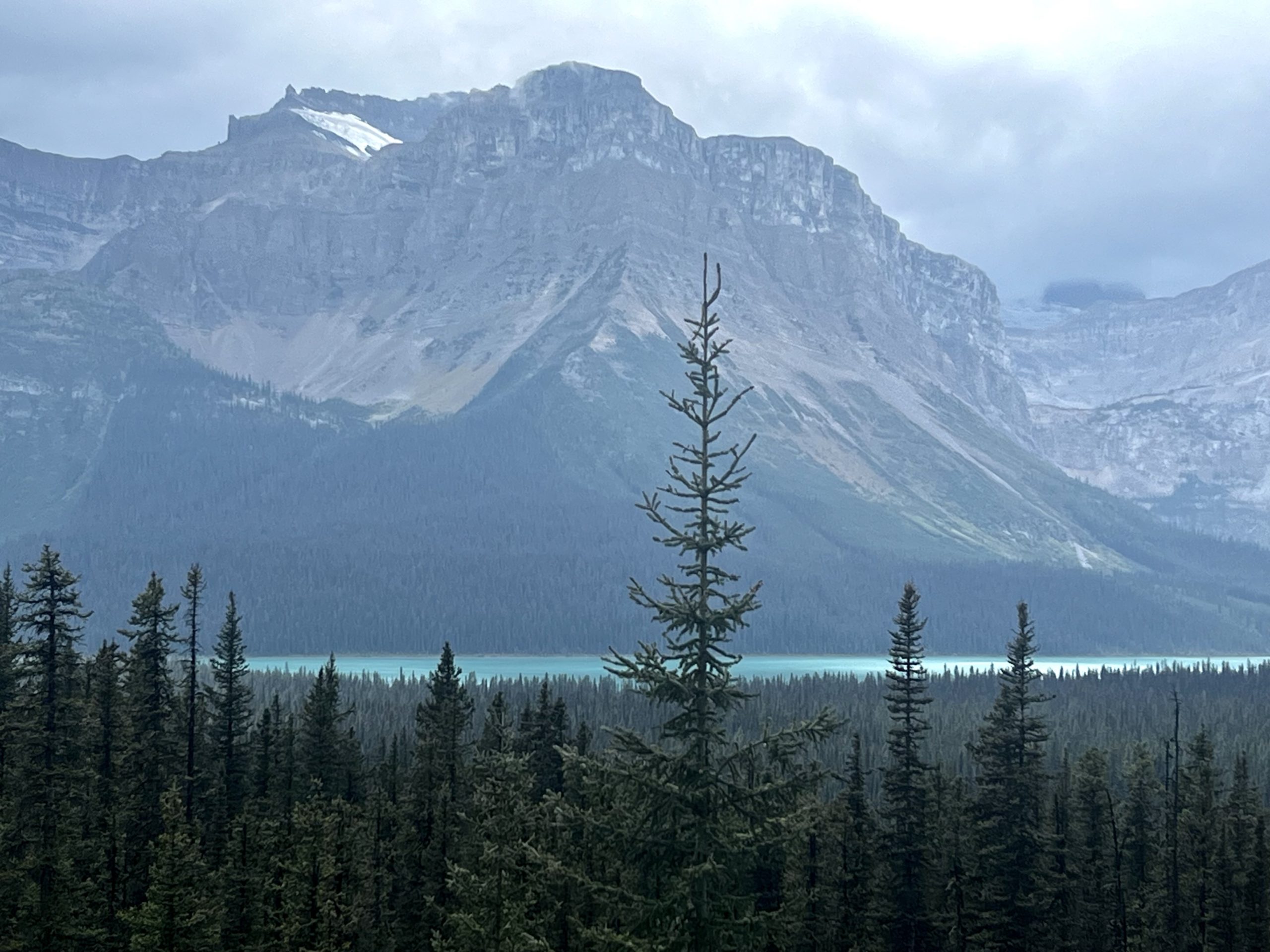
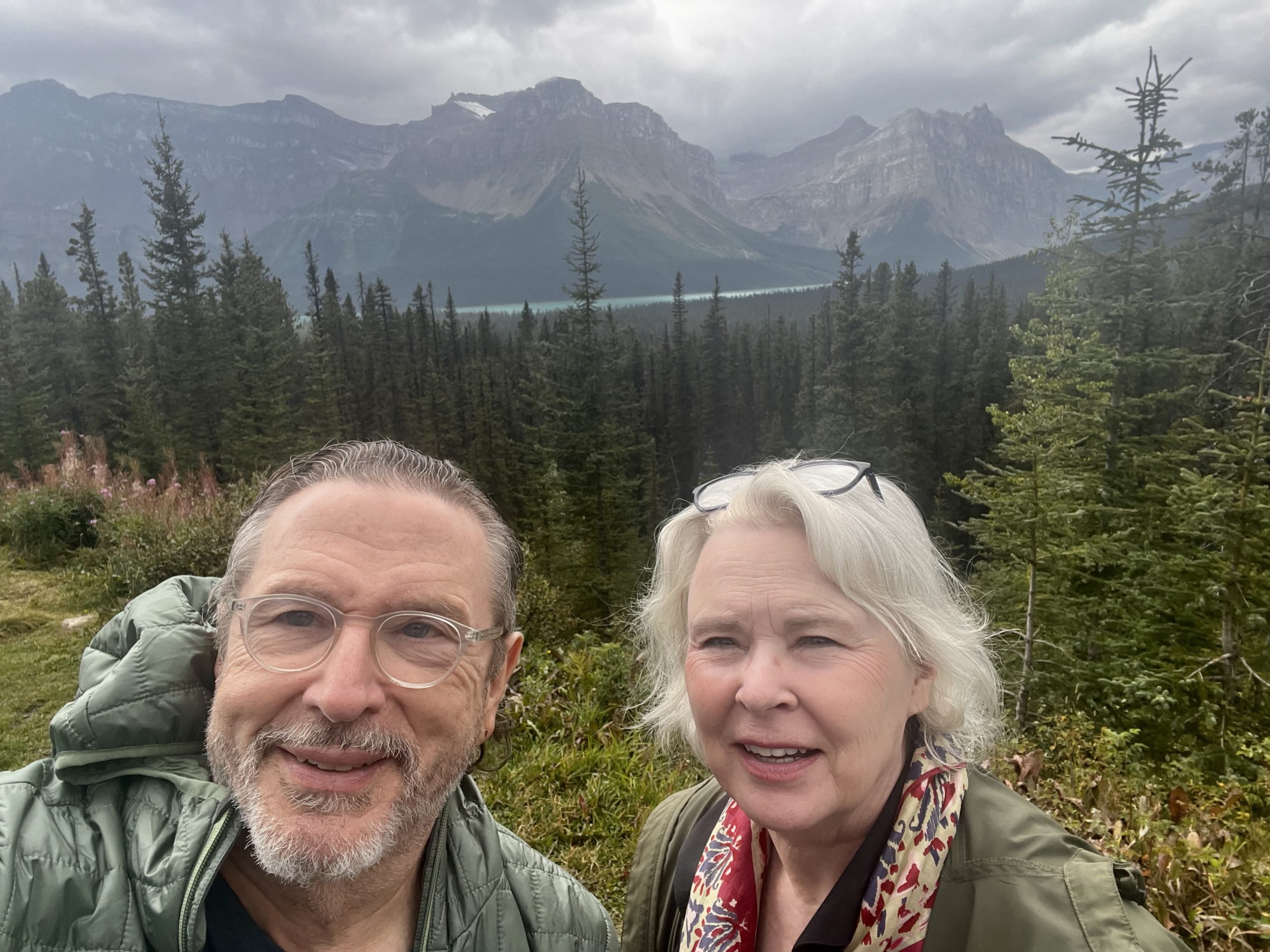
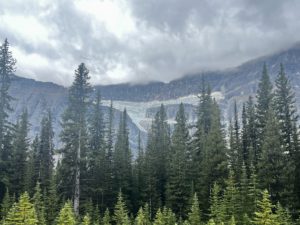
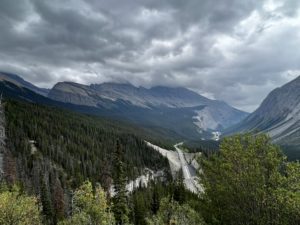
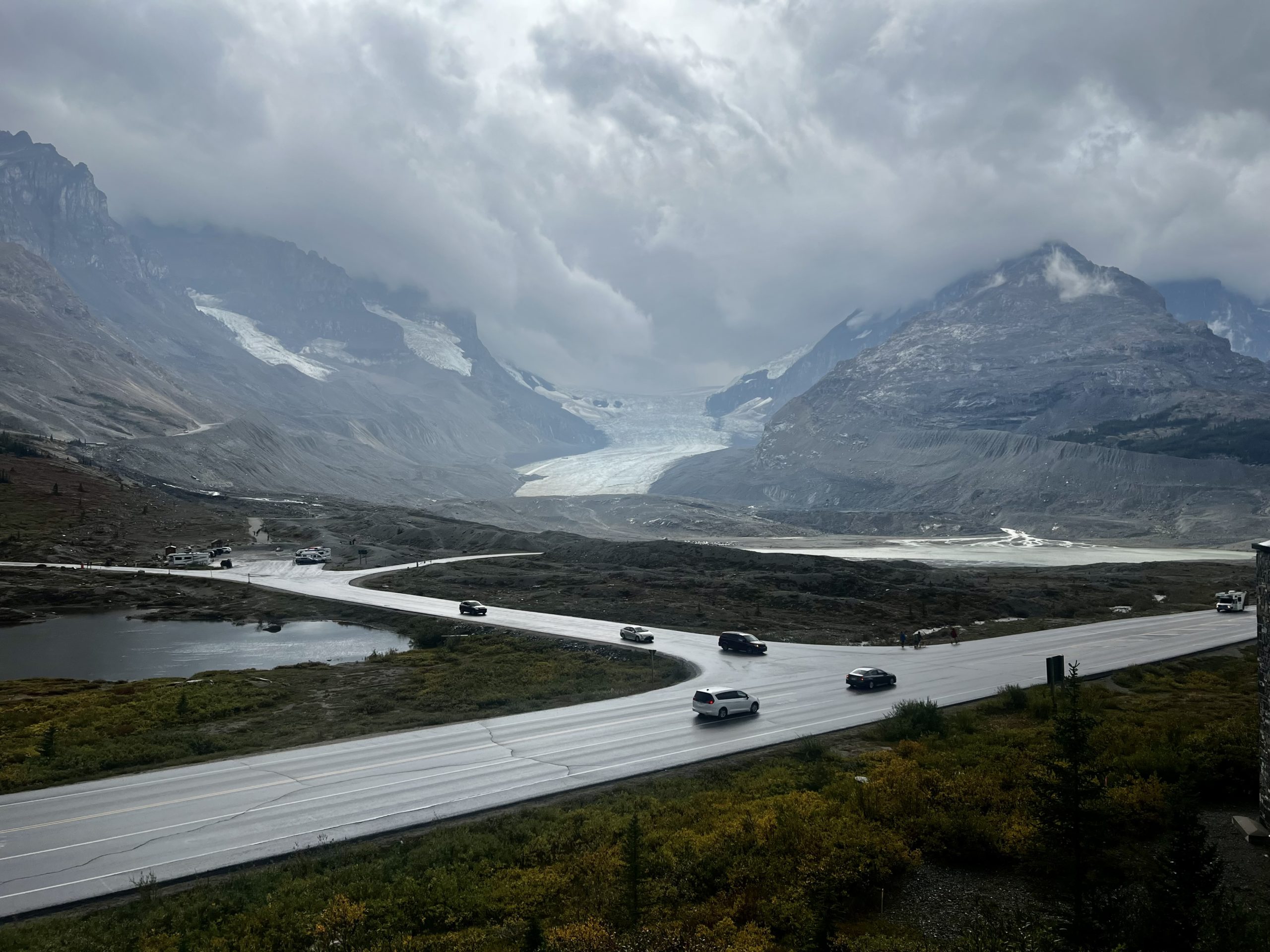
Lodging in Jasper
Newly constructed. Just outside of the main retail area. Owned by a large conglomerate—Pursuit—that owns most of the hotels in town as well as ski/snow boarding areas. The town is filled with large motor lodges, packed closely together. Often without enough parking for guests, which seems like an odd contradiction.
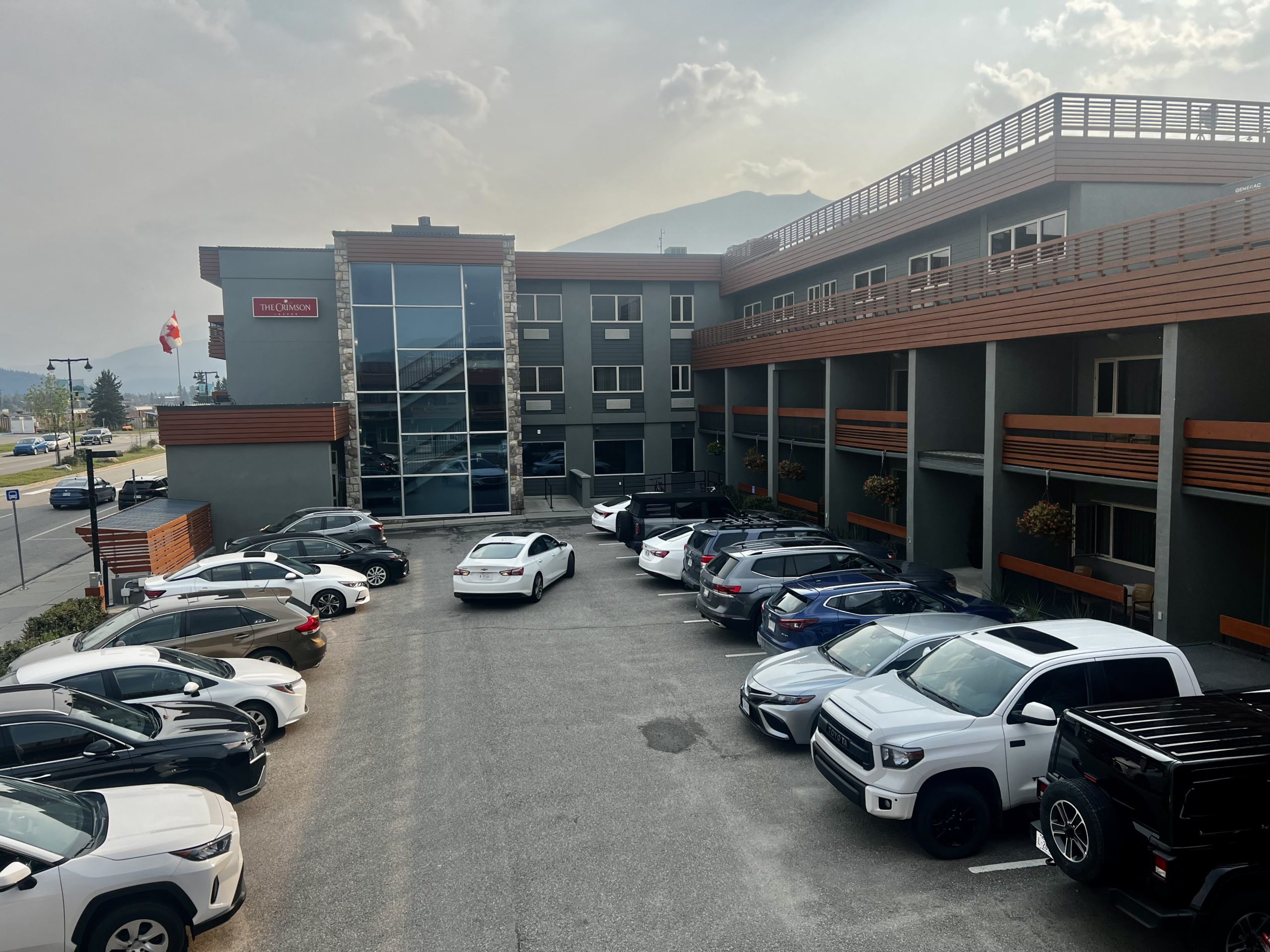

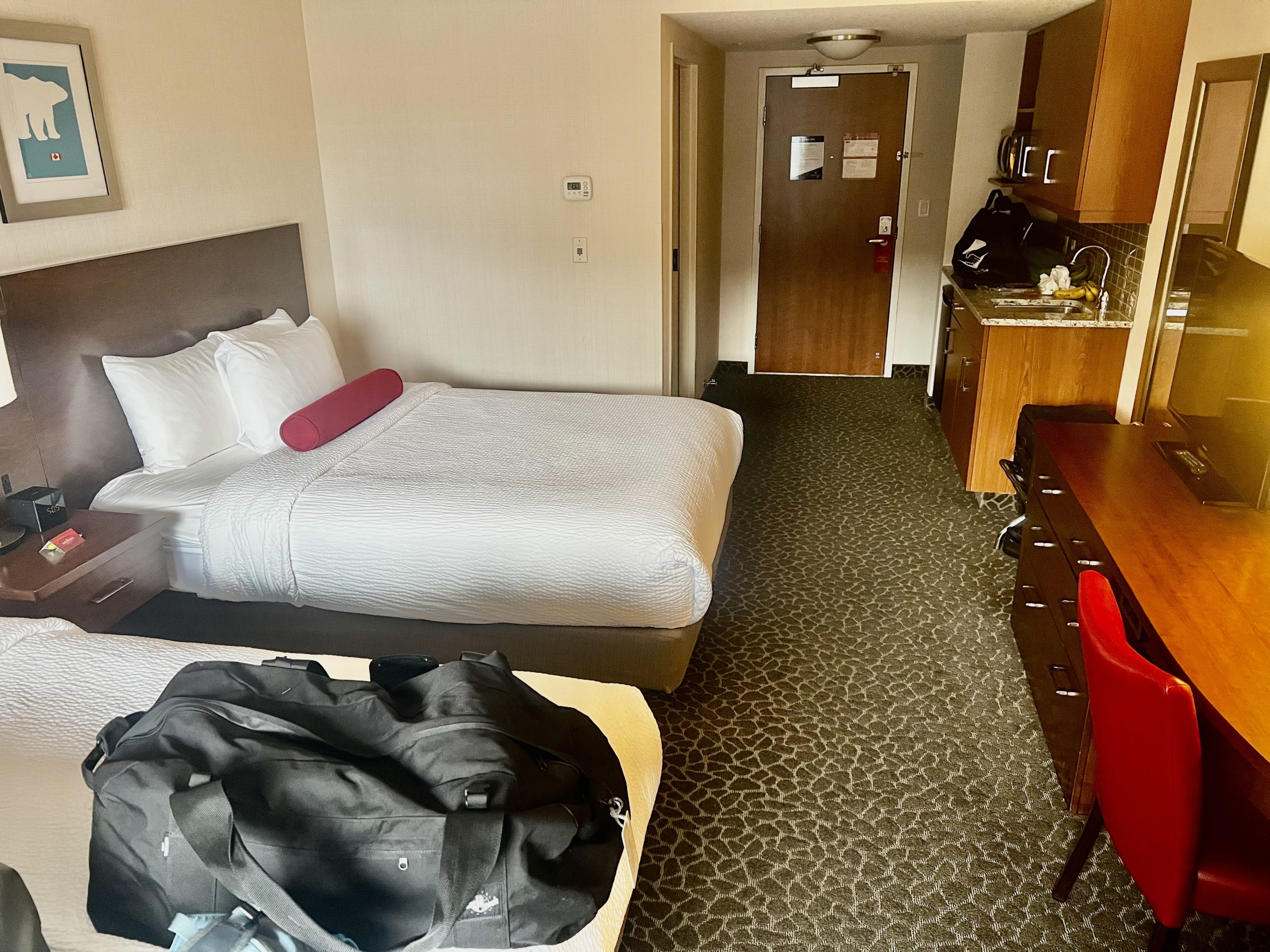
Strolling Jasper
We arrived in Jasper late in the day with enough time to settle in, take a stroll, and have dinner. We found Jasper, population 4,500, much lower key than either Canmore or Banff—sort of a laid back Queenstown in New Zealand, except smaller. If you want to buy ANY outdoor apparel or equipment, you need not to go anywhere else. There are many shops packed with gear from Patagonia, North Face, Columbia, Marmot, and other brands.
The town of Jasper is in the national park, elevation 3,500 feet. (Bonnie has been feeling the altitude: micro nosebleeds and heavy breathing on uphill slopes.) The average price of a home here is near one million Canadian dollars. The land is owned by the federal government. You cannot purchase a home here until after you have lived in Jasper for five years.
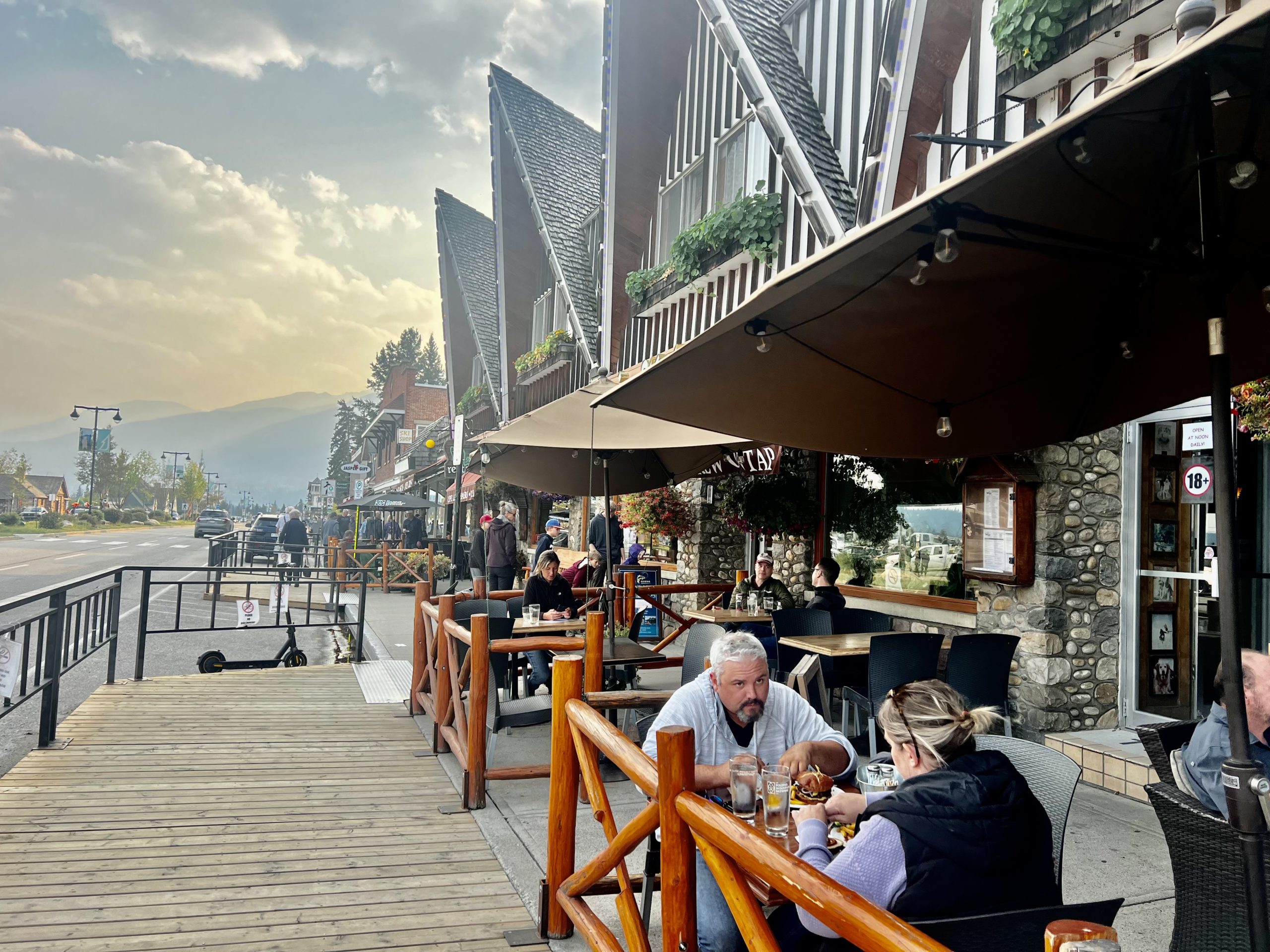
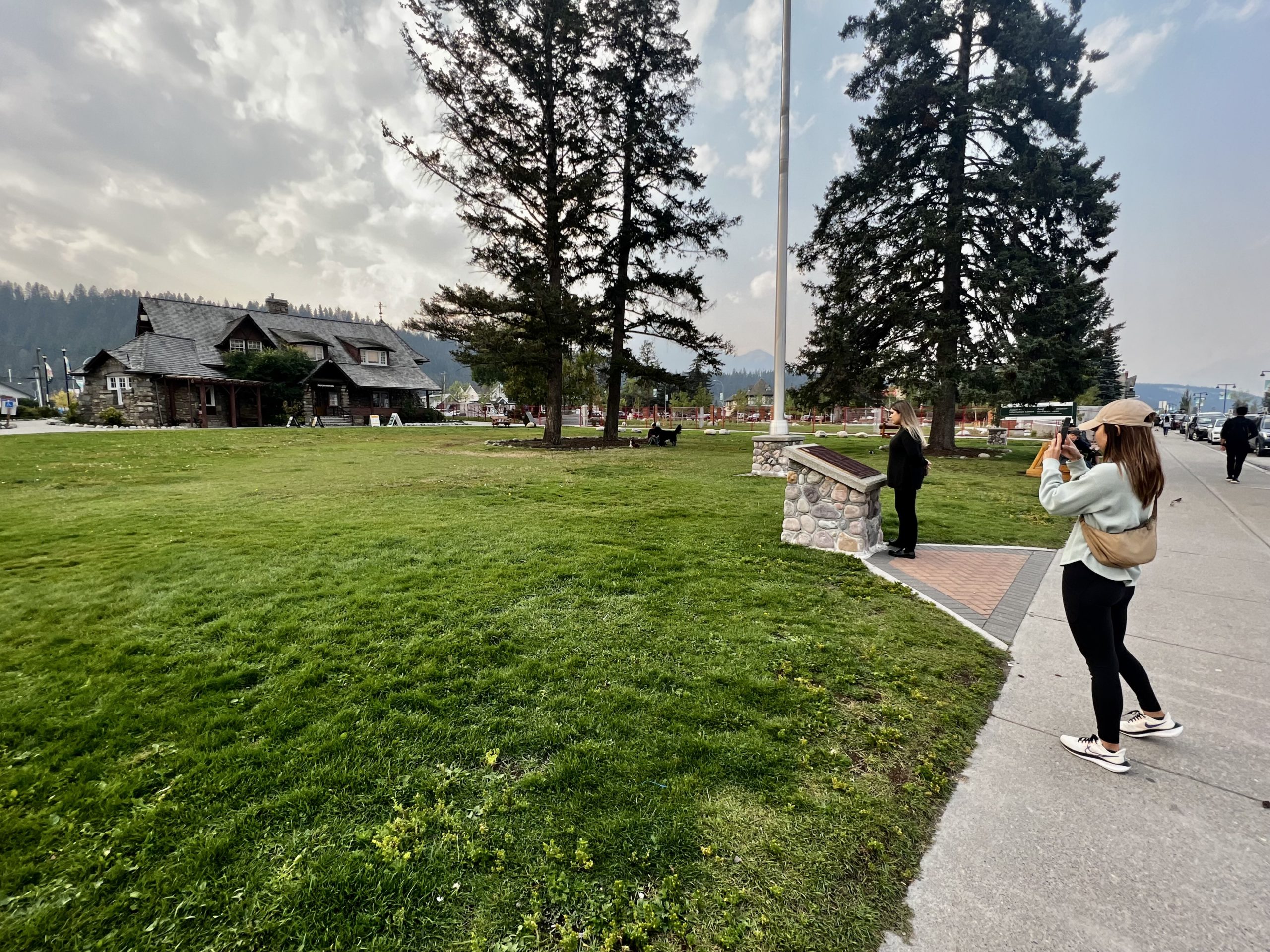
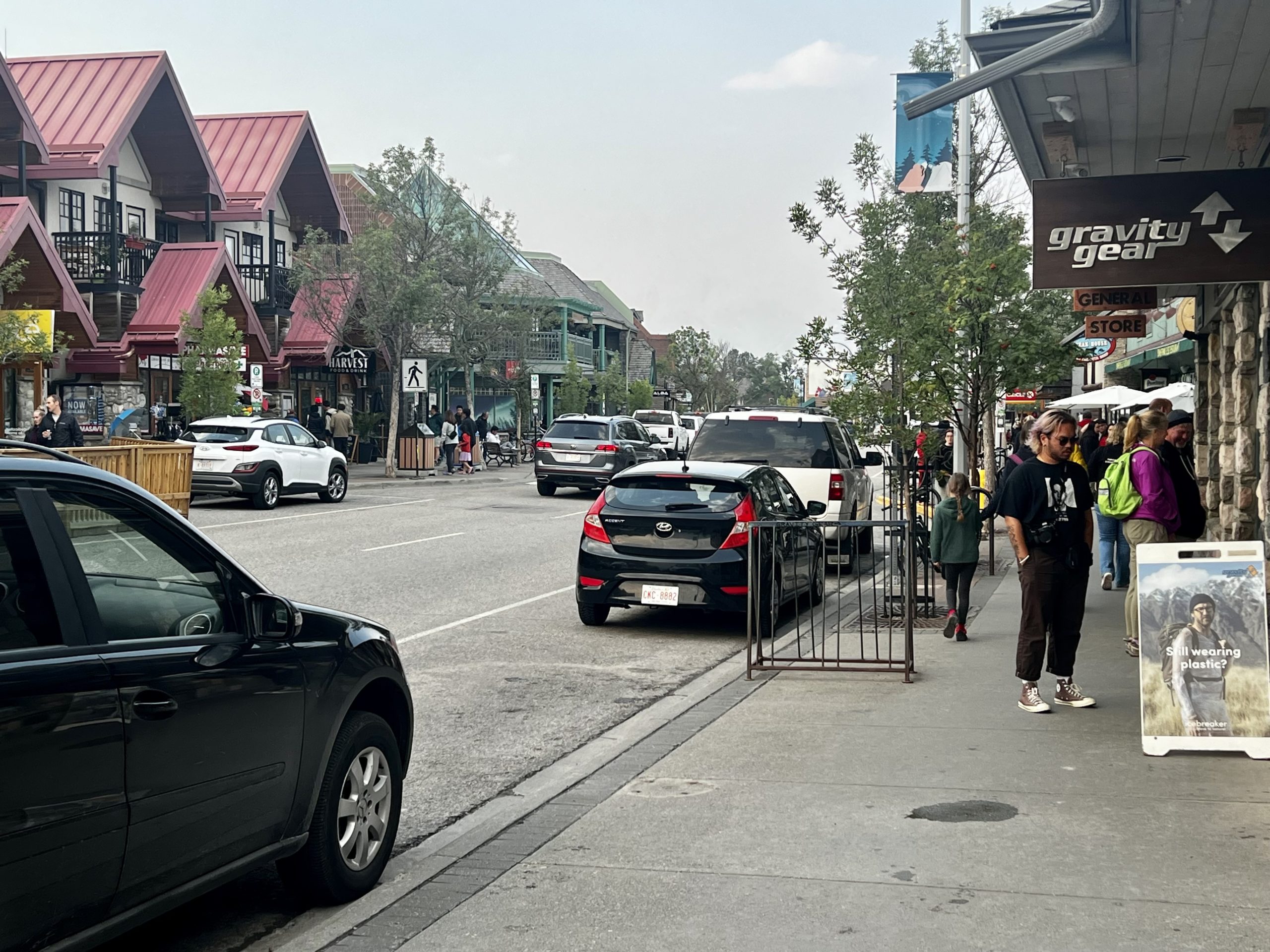
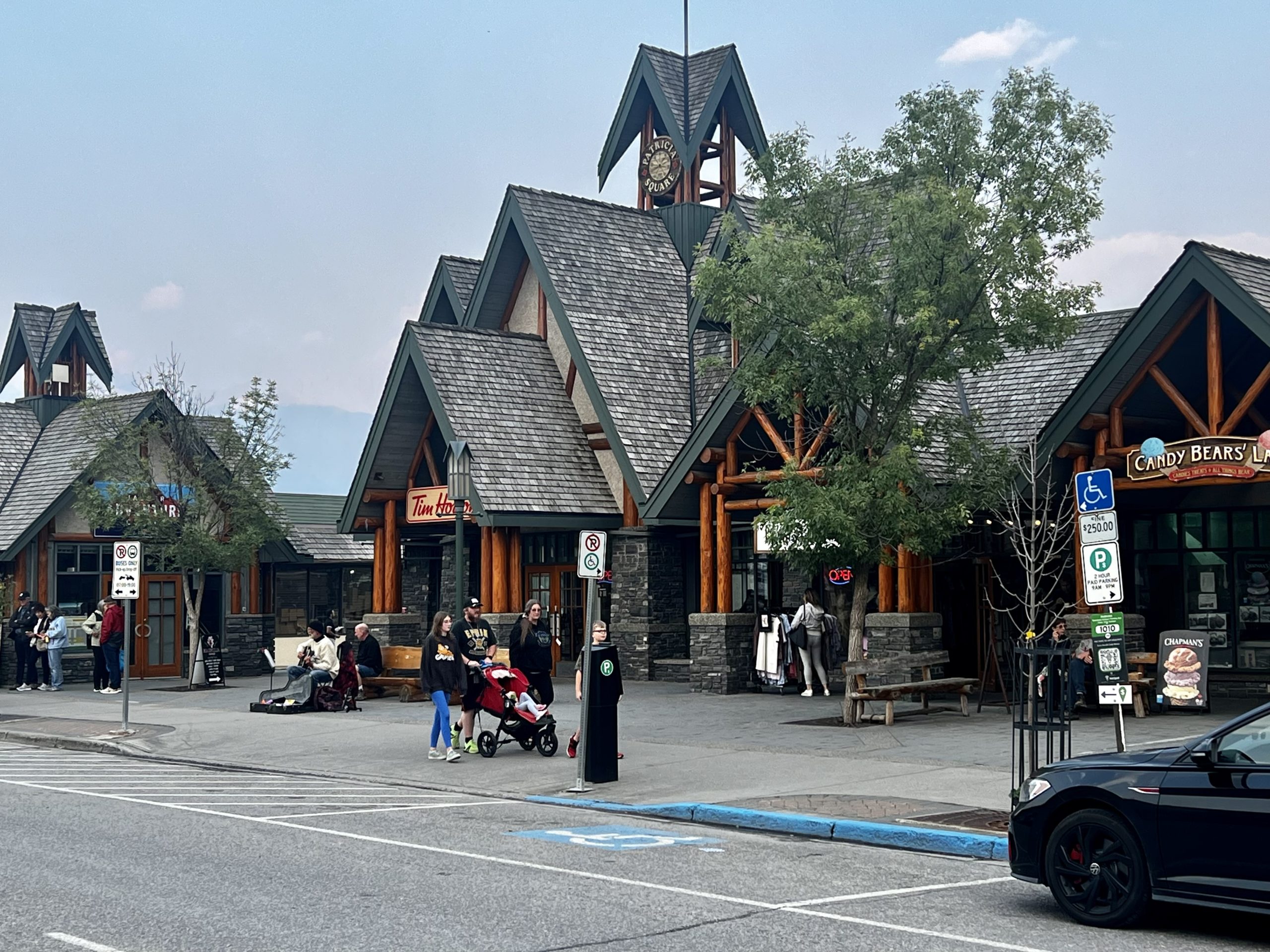
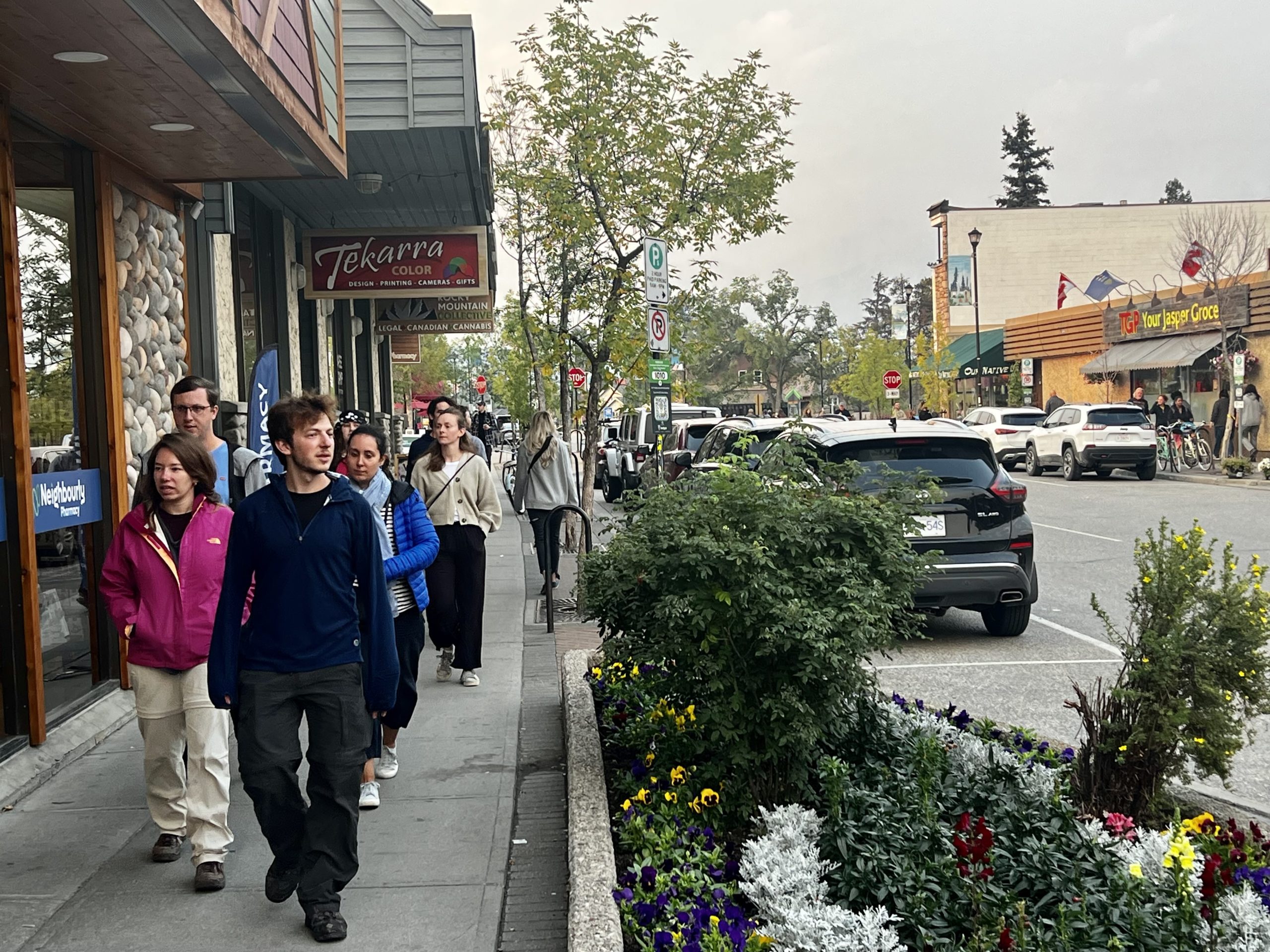
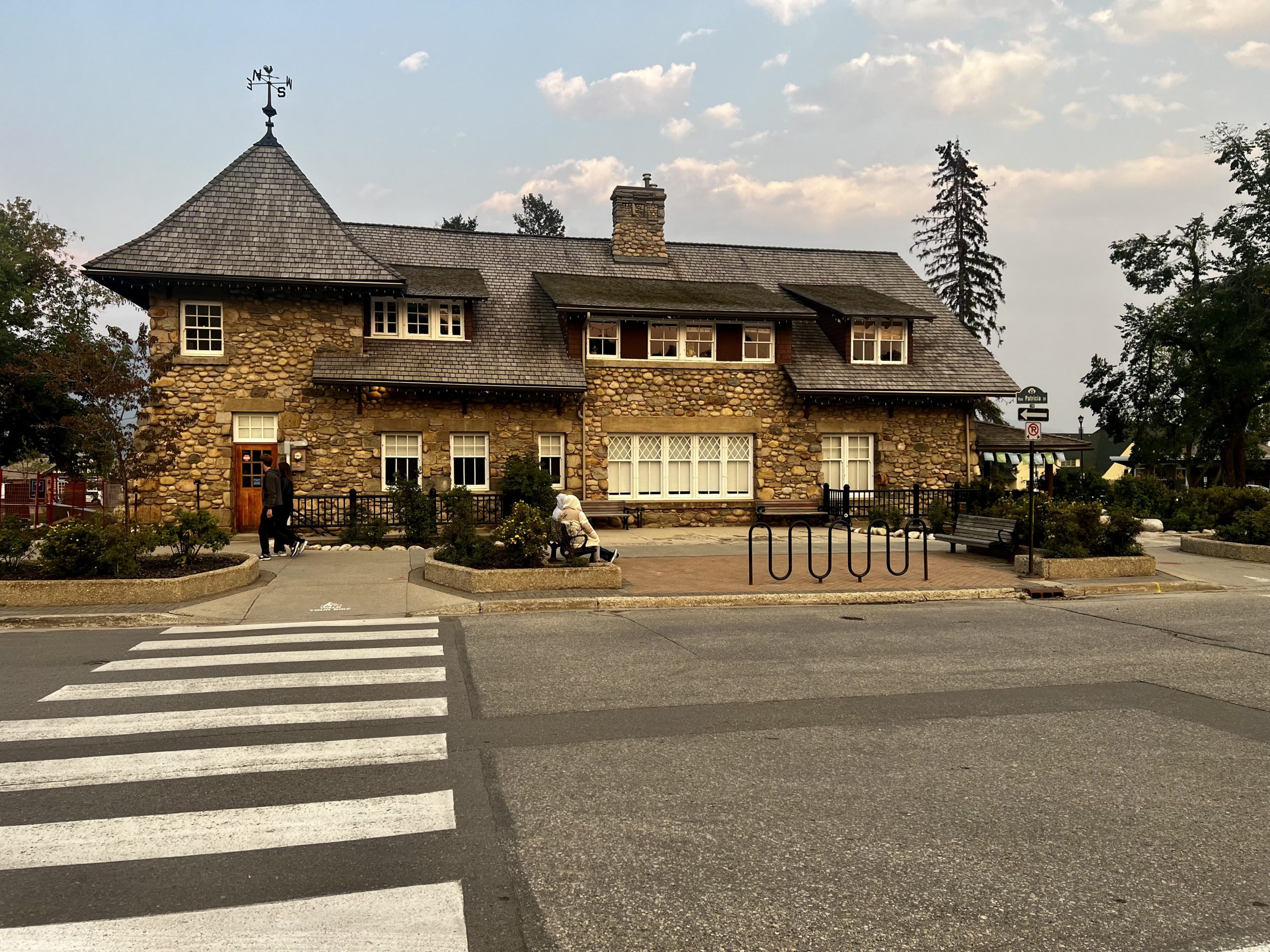
Railroads
Railroads are ever-present in the Rocky Mountains. Perhaps they are especially noticeable because the main highway parallels the railroad tracks and each town has a station, convenient to the downtown. In Banff, the railroad divides the older part of town from the newly developed tourist hotels that line the main street for blocks. The railroad crossings are quite far apart, so the two separate parts of town are quite different. The trains appear to carry mainly freight, often double-stacked containers as in the photograph. When our neighbors David and Neil visited Banff, they took the train from Vancouver, which sounds like a lovely way to arrive. The early tourists all arrived by train.
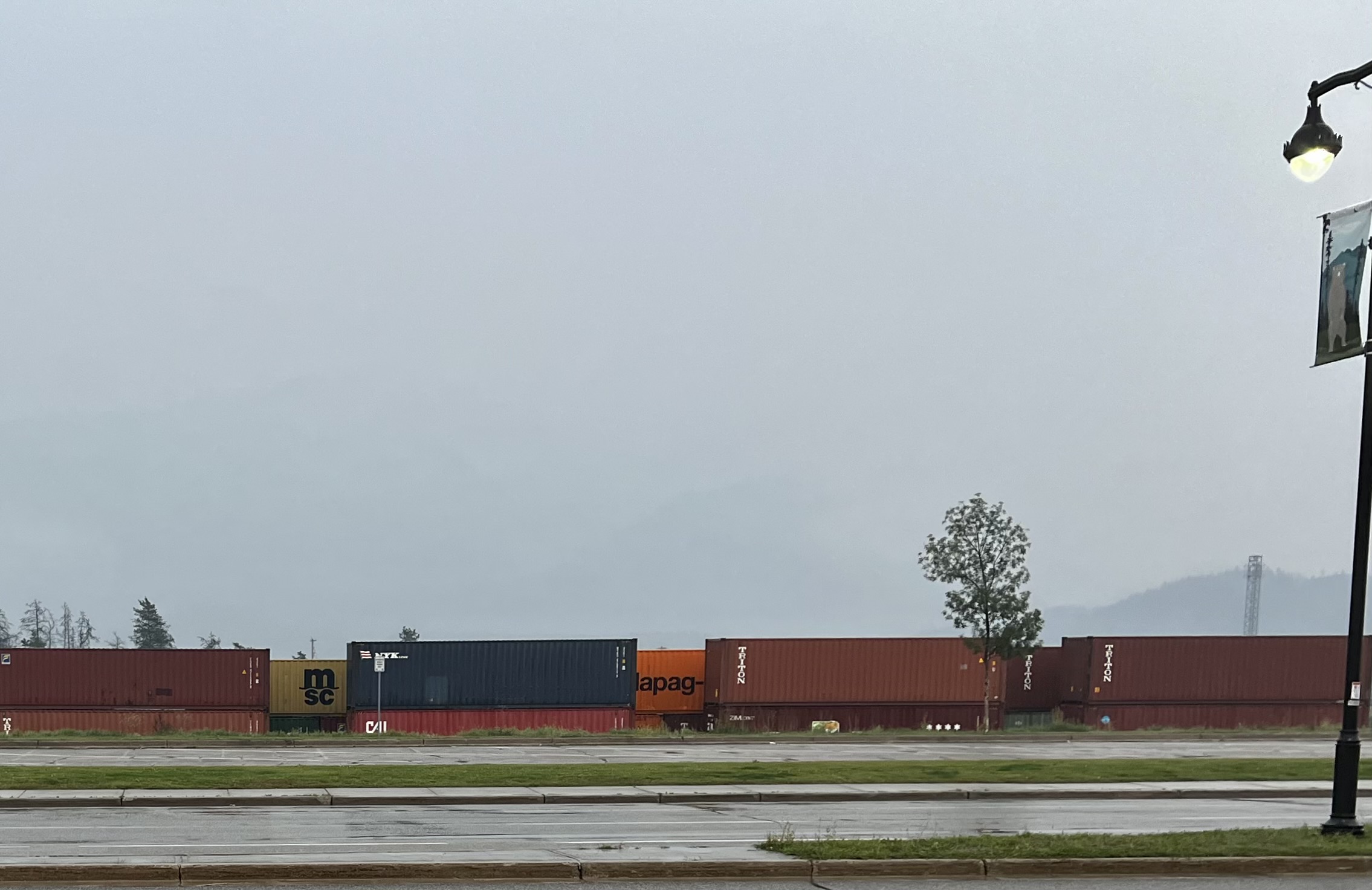
Eats
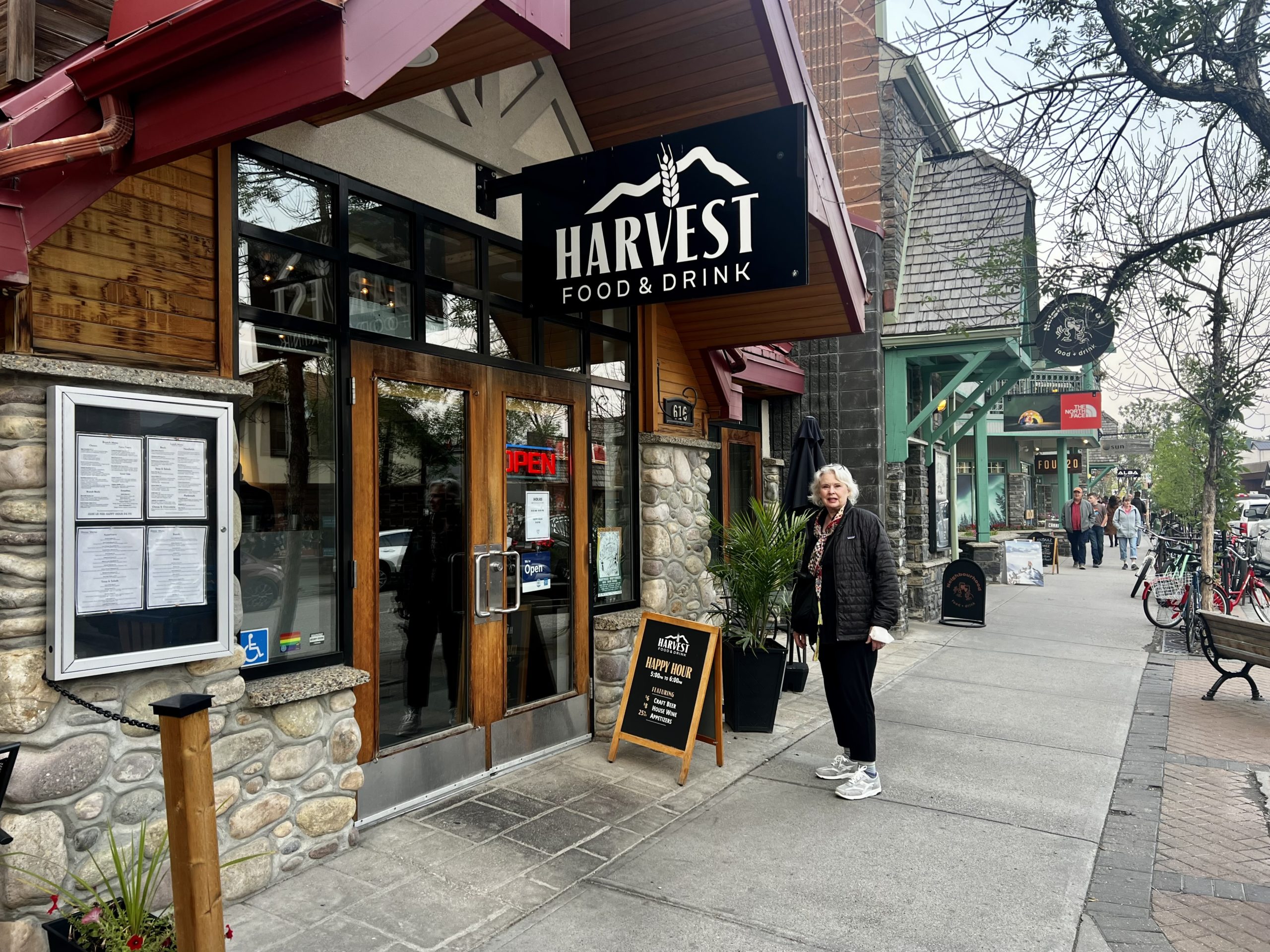
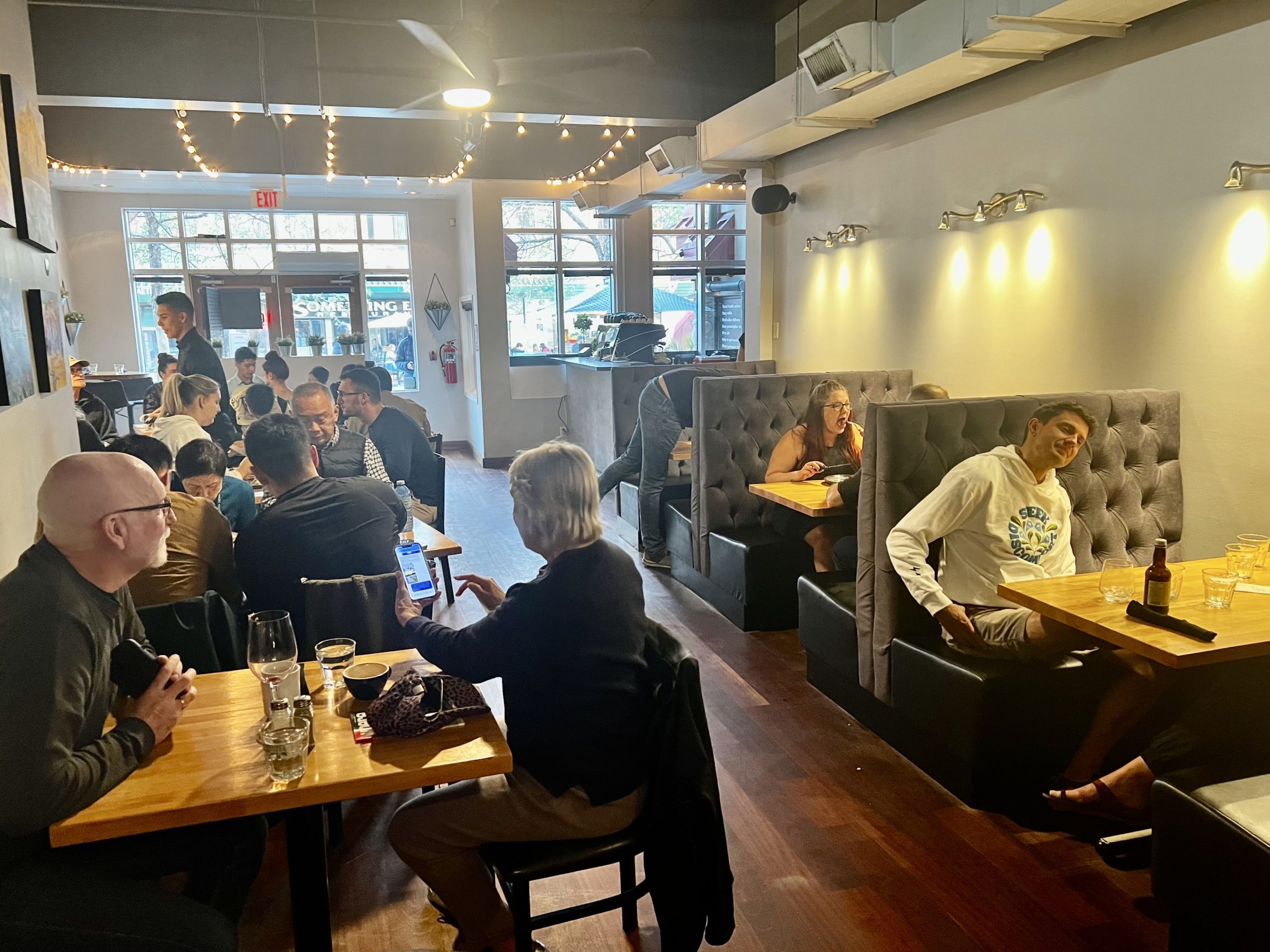
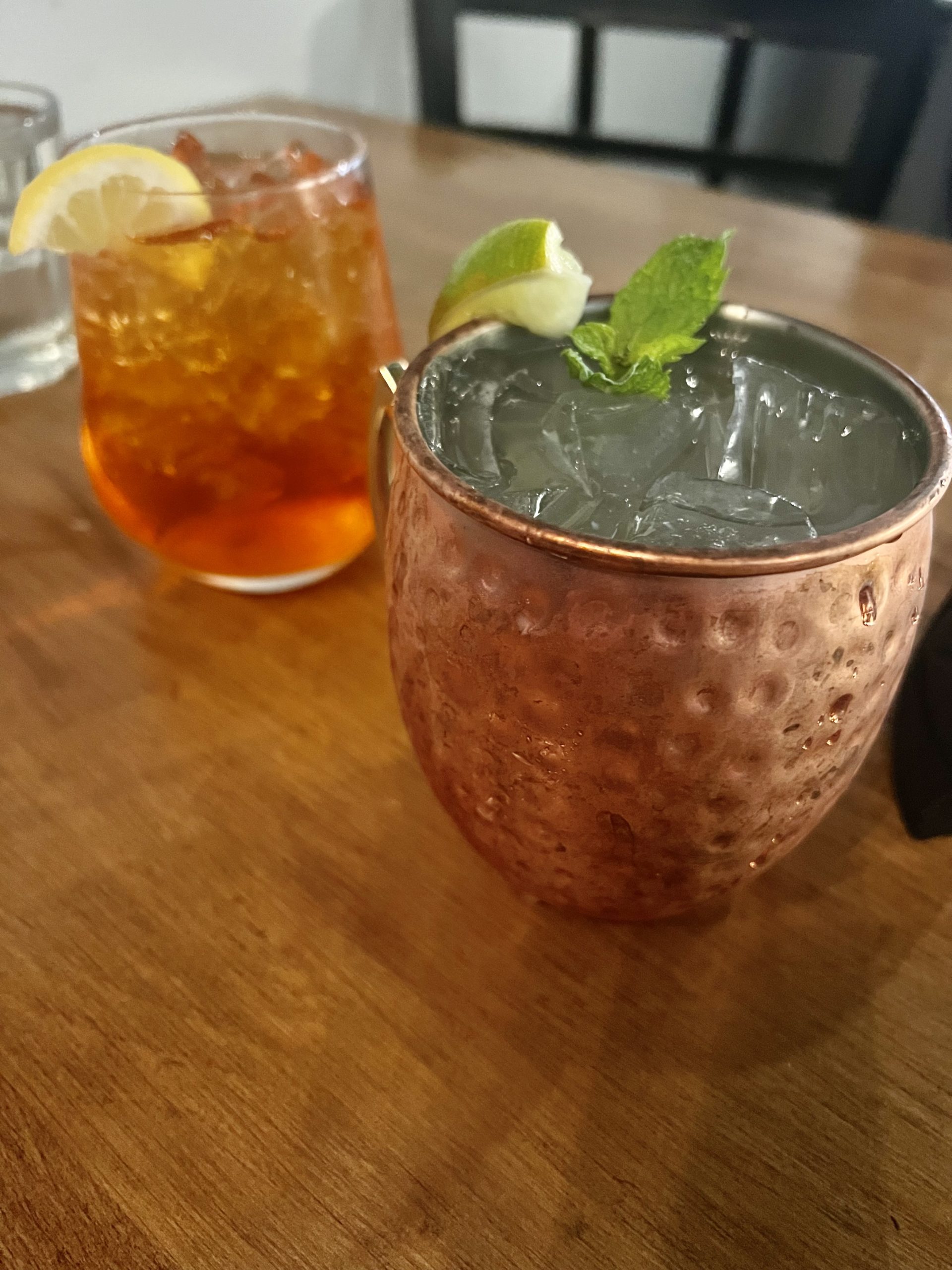
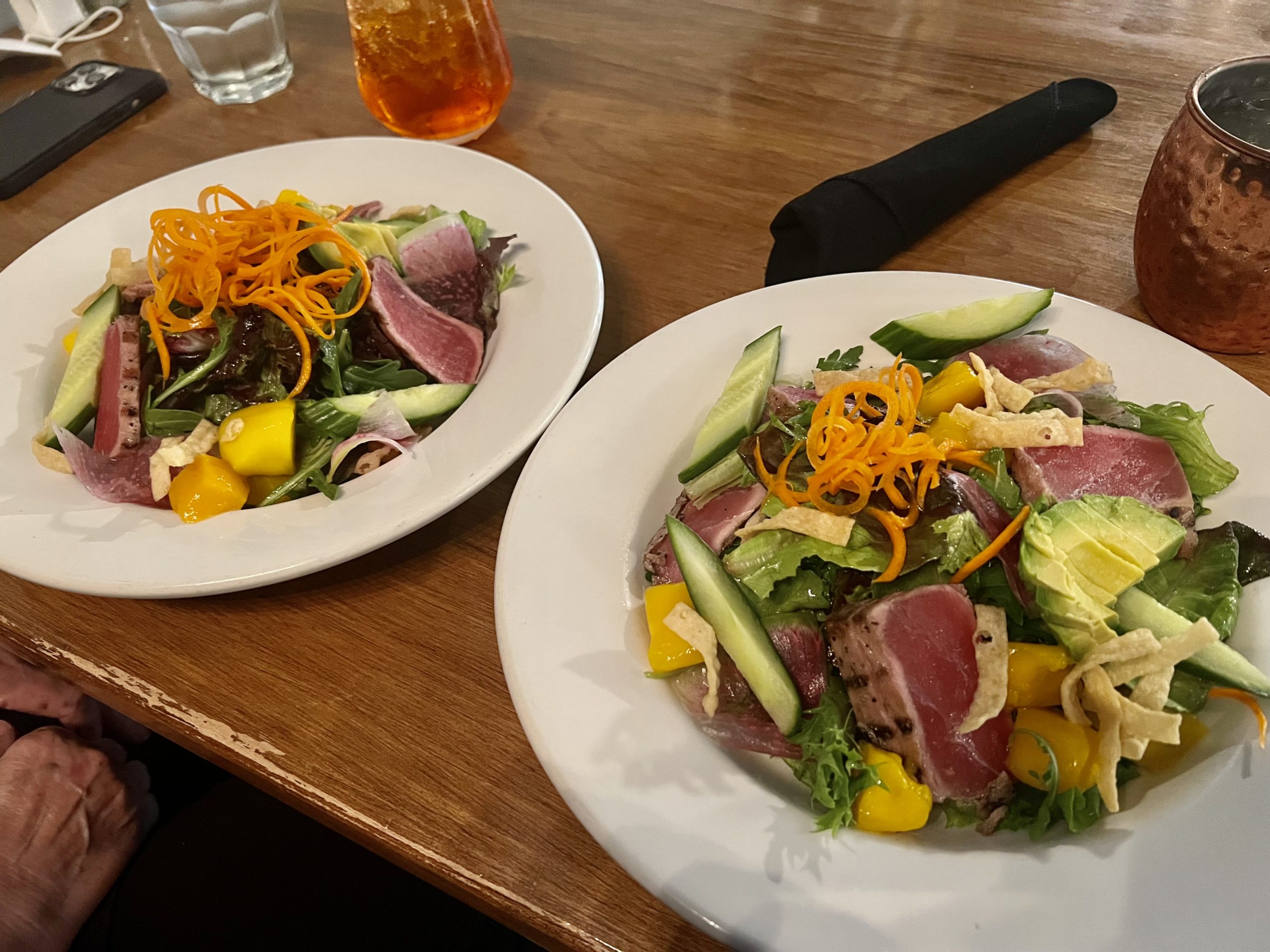
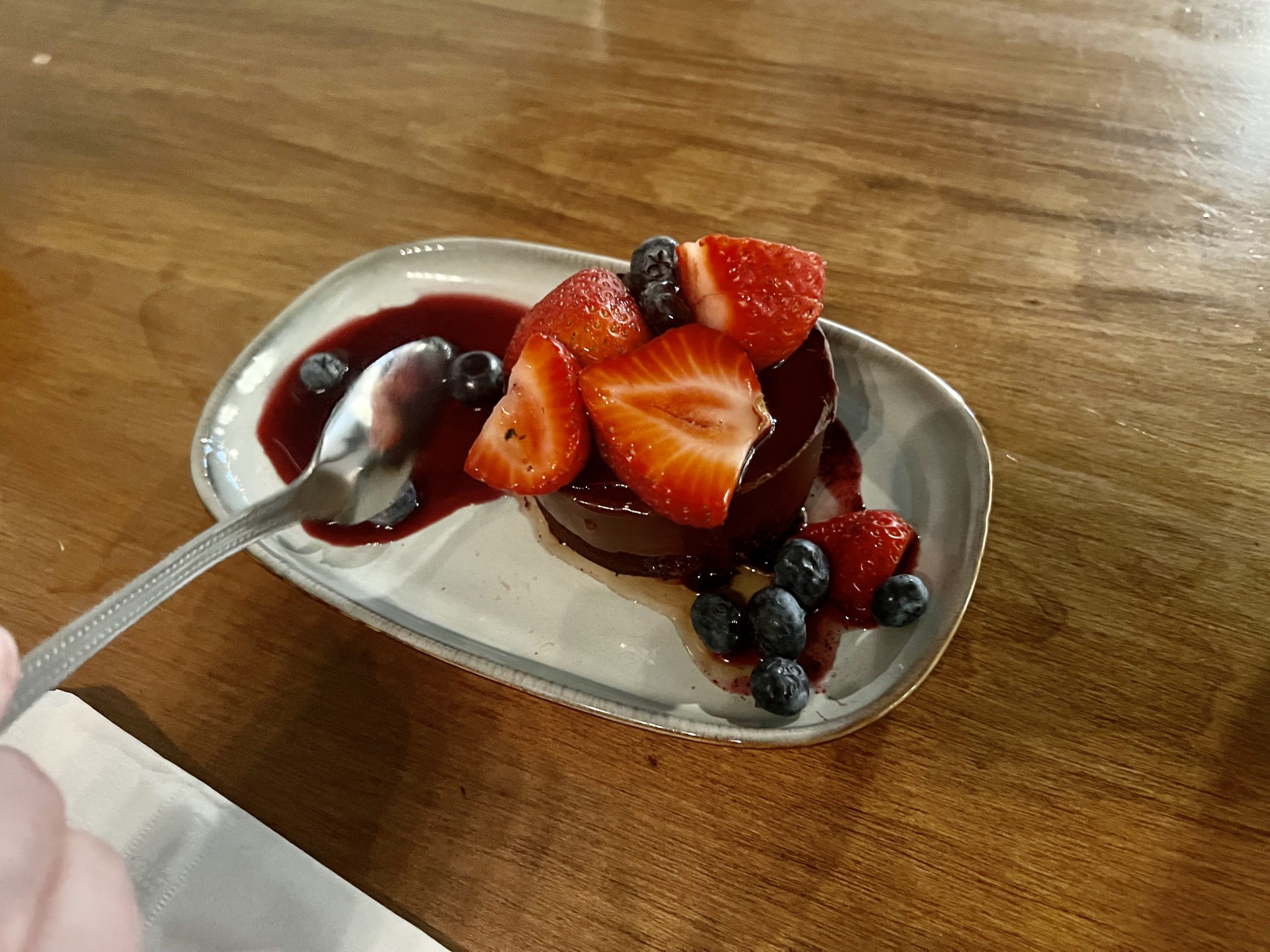
04 September 2023
Jasper Park Lodge
Woke up to helicopters in the air fighting a forest fire nearby. The sky was gray in the morning but slightly less so in the evening. We took a drive to yet another Fairmont hotel, the Fairmont Jasper Park Lodge, that is quite nice. Low key. The lodge is built on the site of housing used by workers who built the railroad in the late 1800s. The 720-acre property is comprised of large single-story buildings, log cabins devoted to common uses, a lodge building that seems to have been built or heavily renovated in the 1960s, with a more recent upgrade a few years ago. The spaces work very well. And of course, there is a spa. They have a golf course that was rated the best in Canada, and lots of other outdoor activities, including horseback riding, canoeing, and golf. The lowest nightly room rates is $600 Canadian. A steal compared to the Fairmont in Banff.
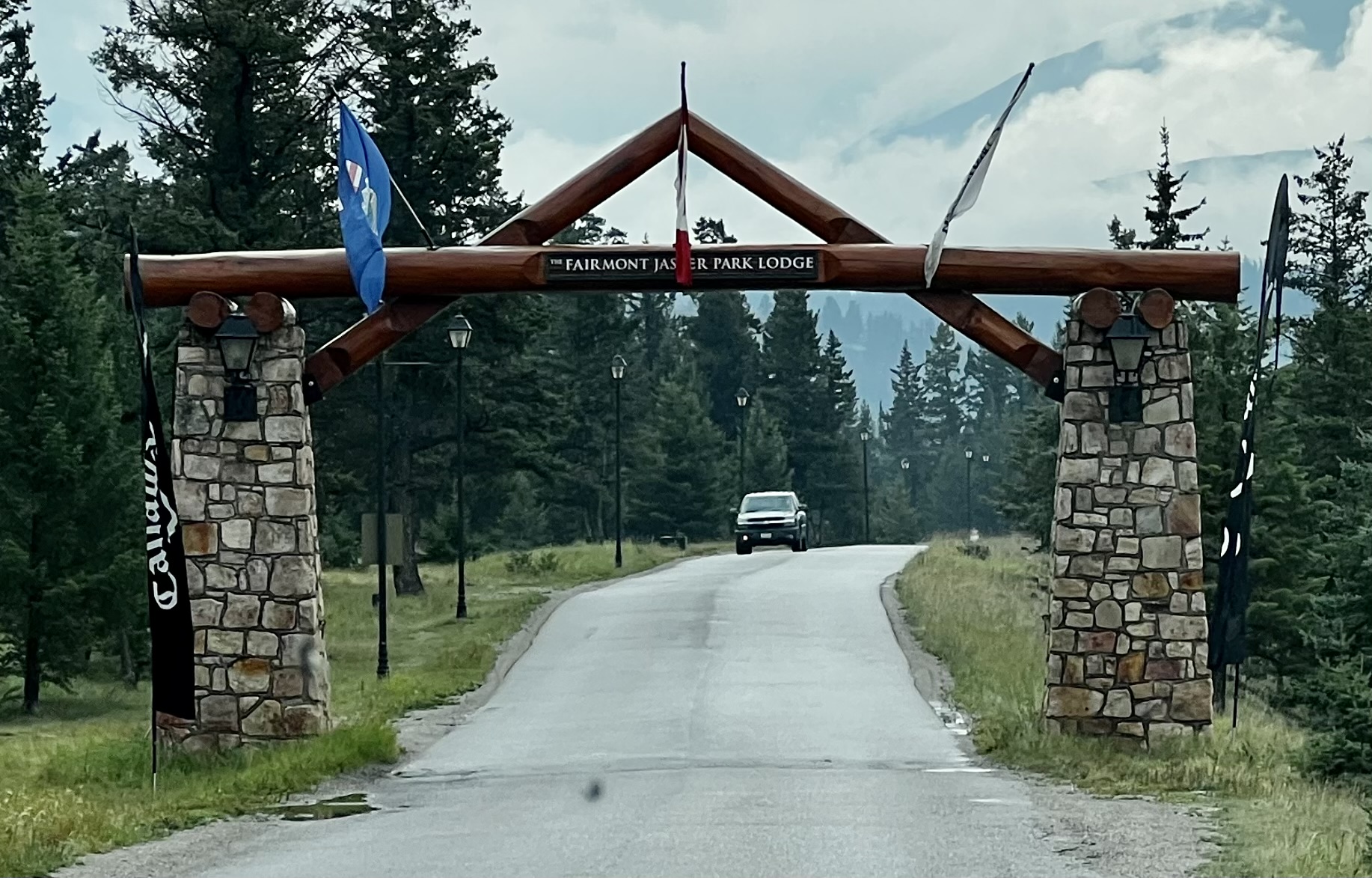
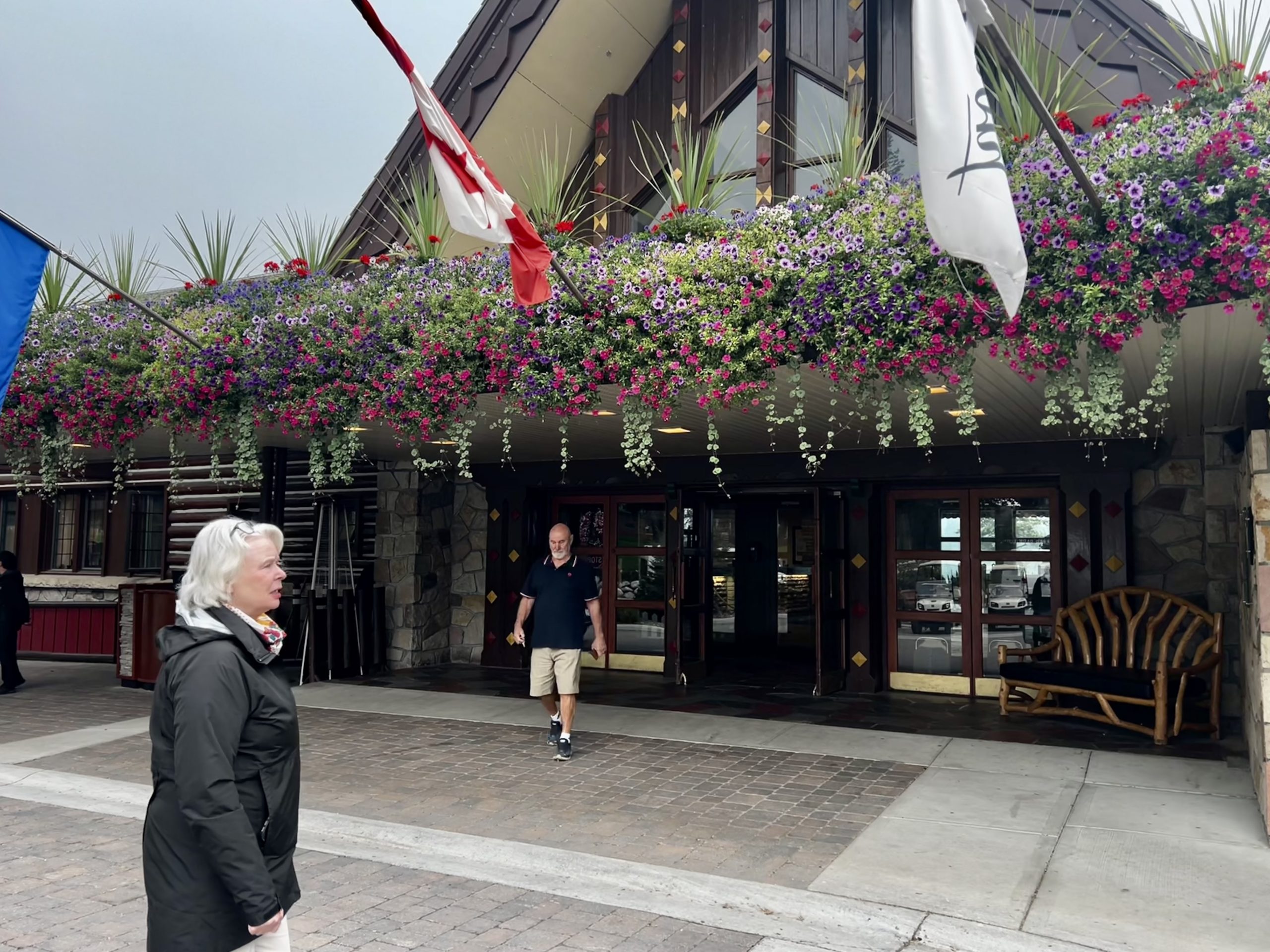
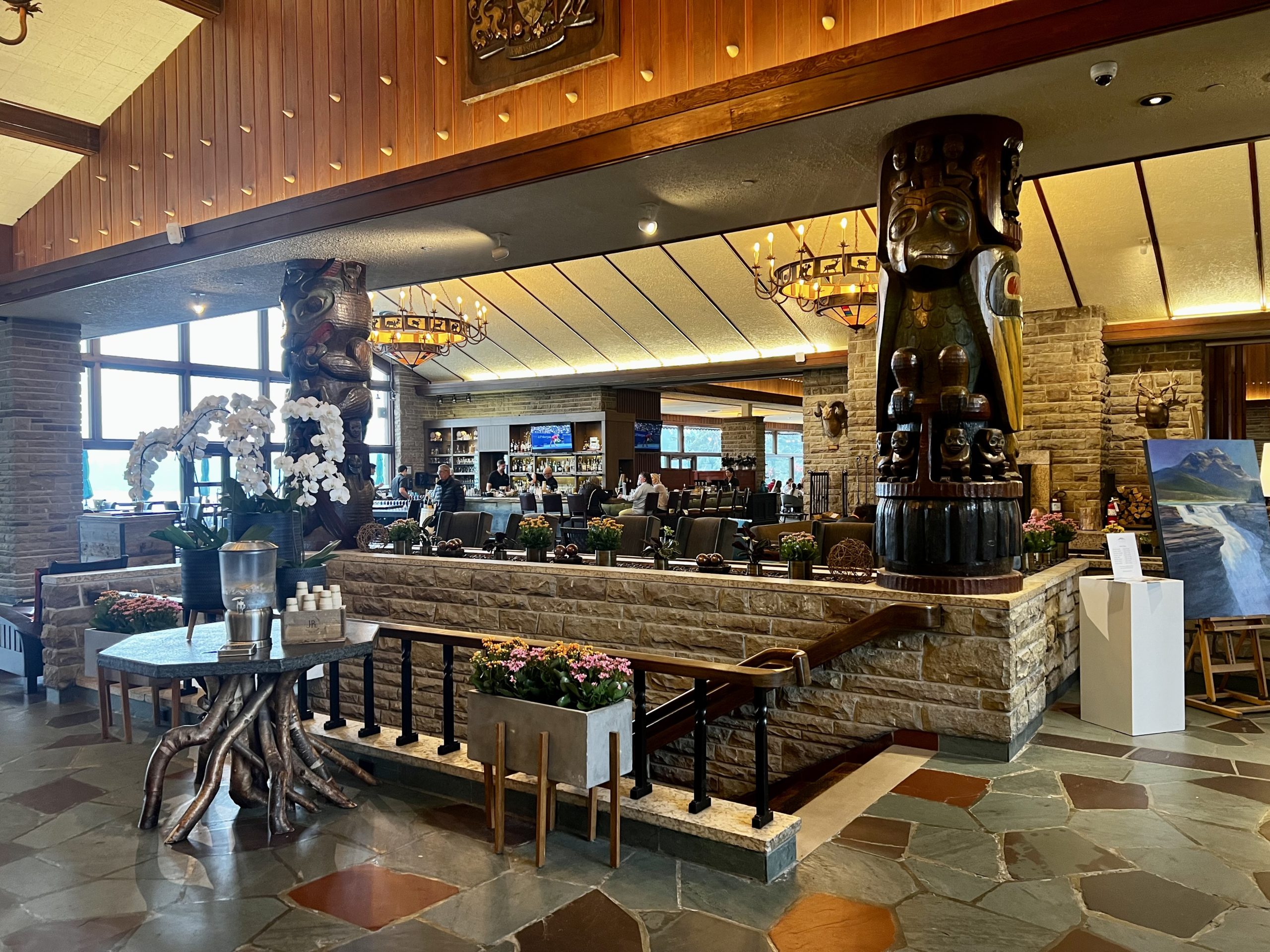
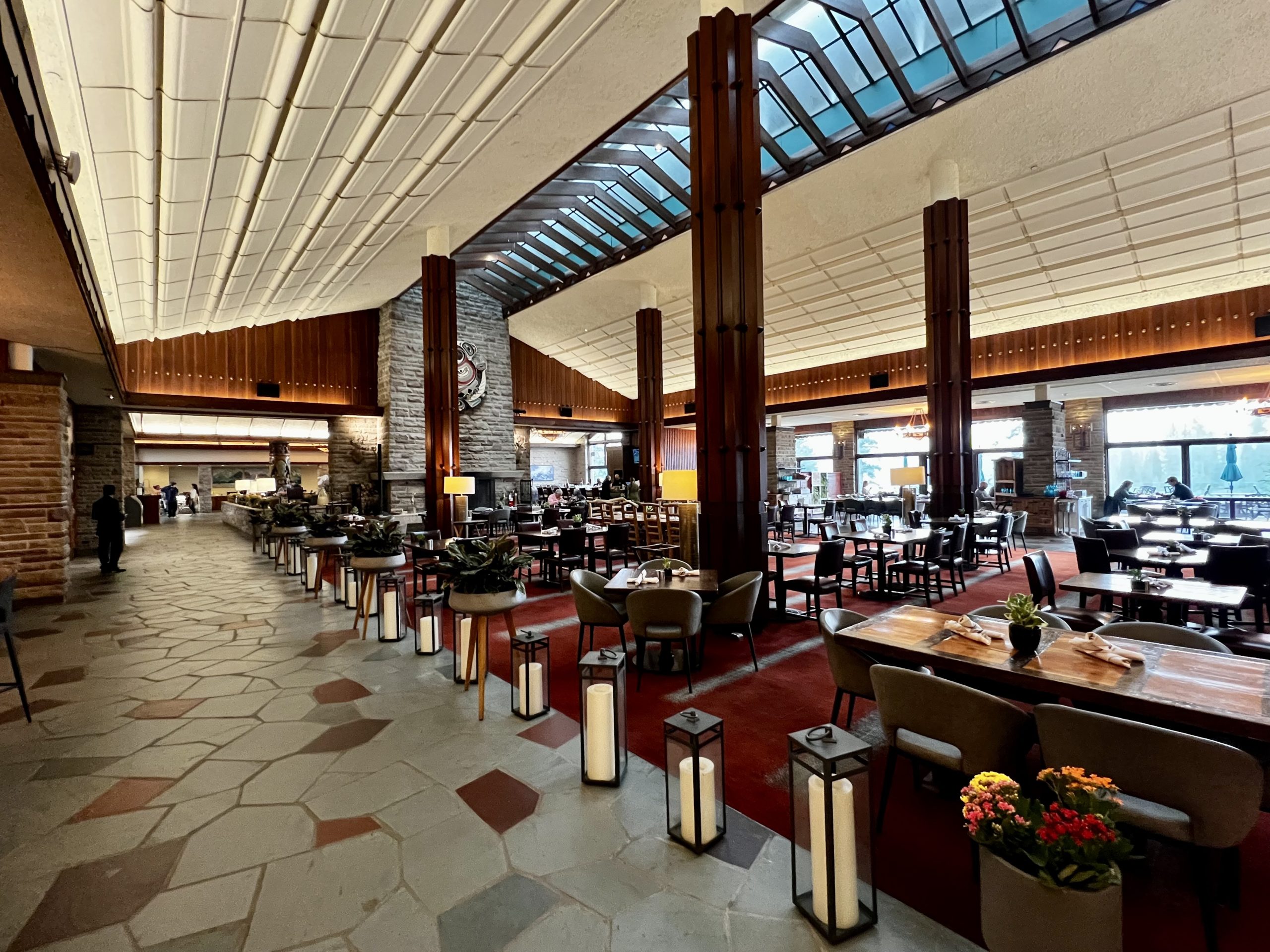
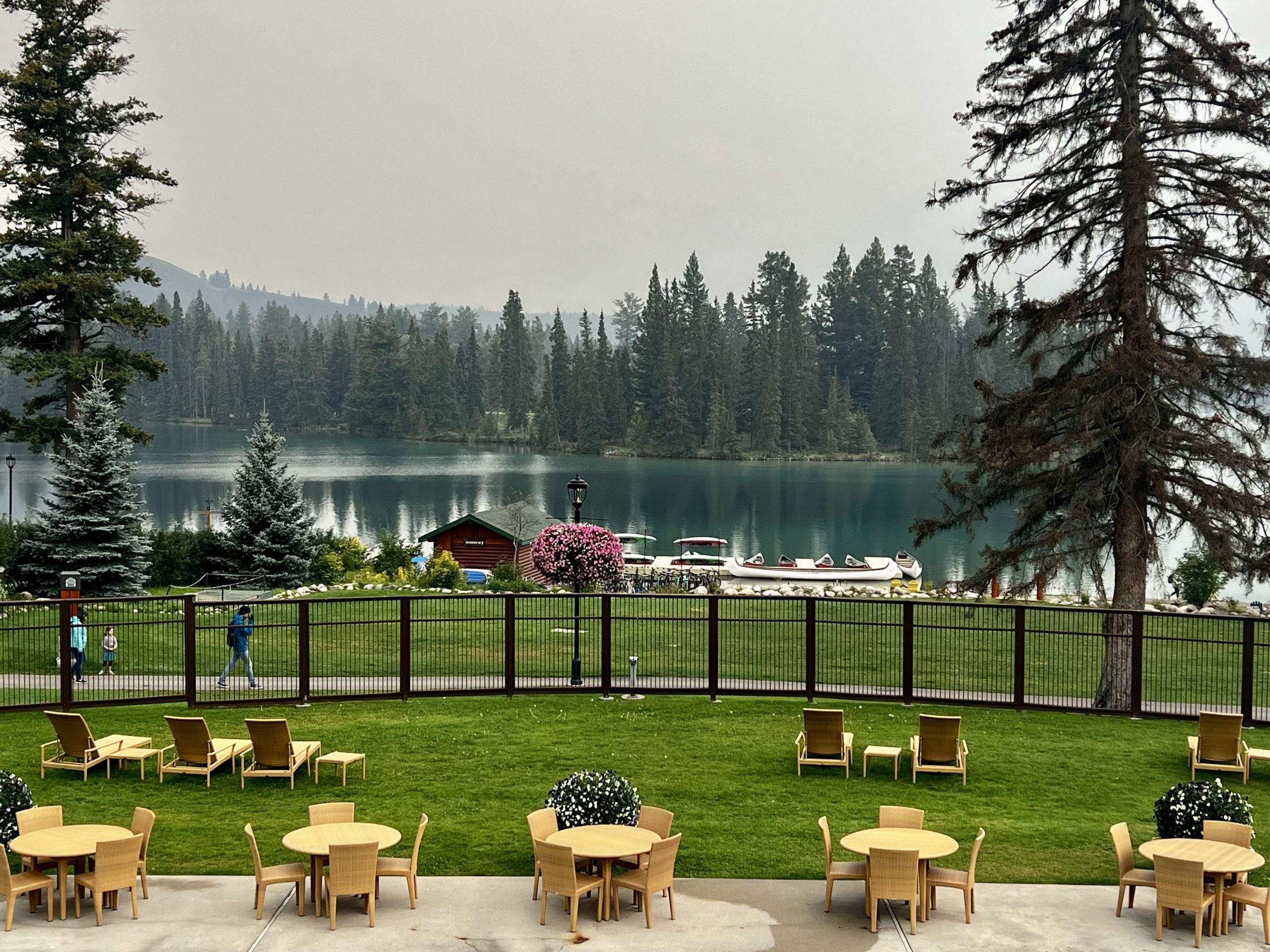
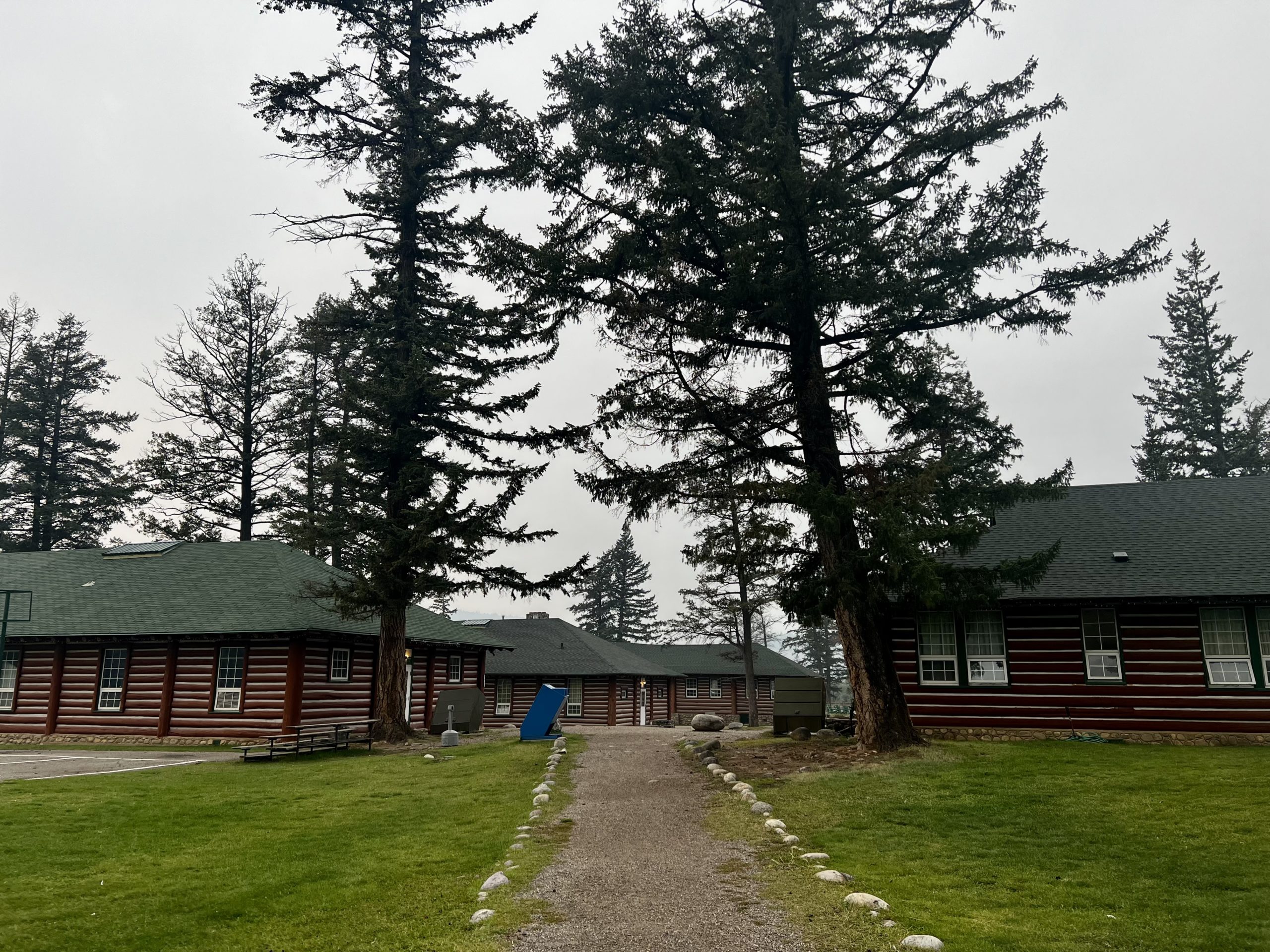
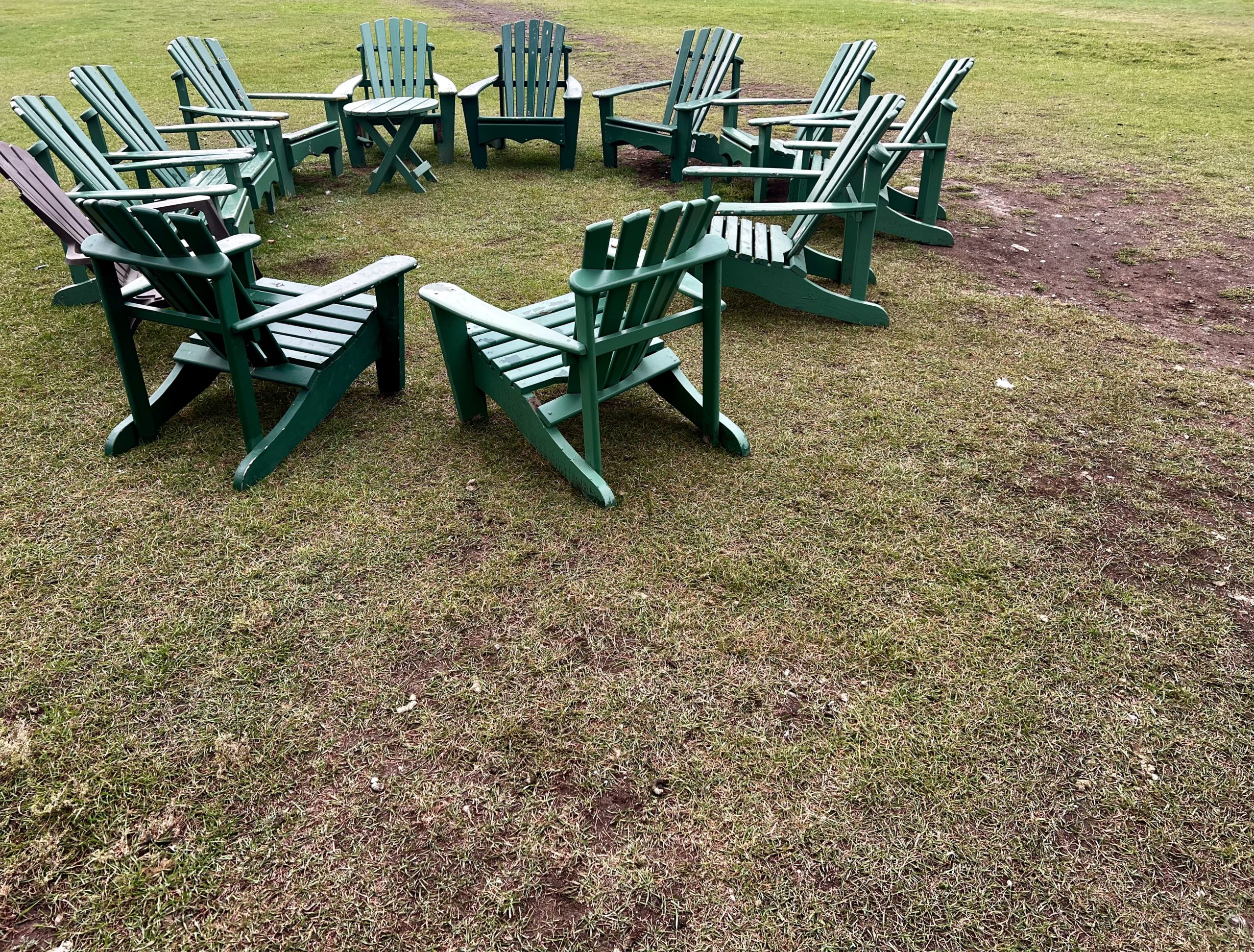

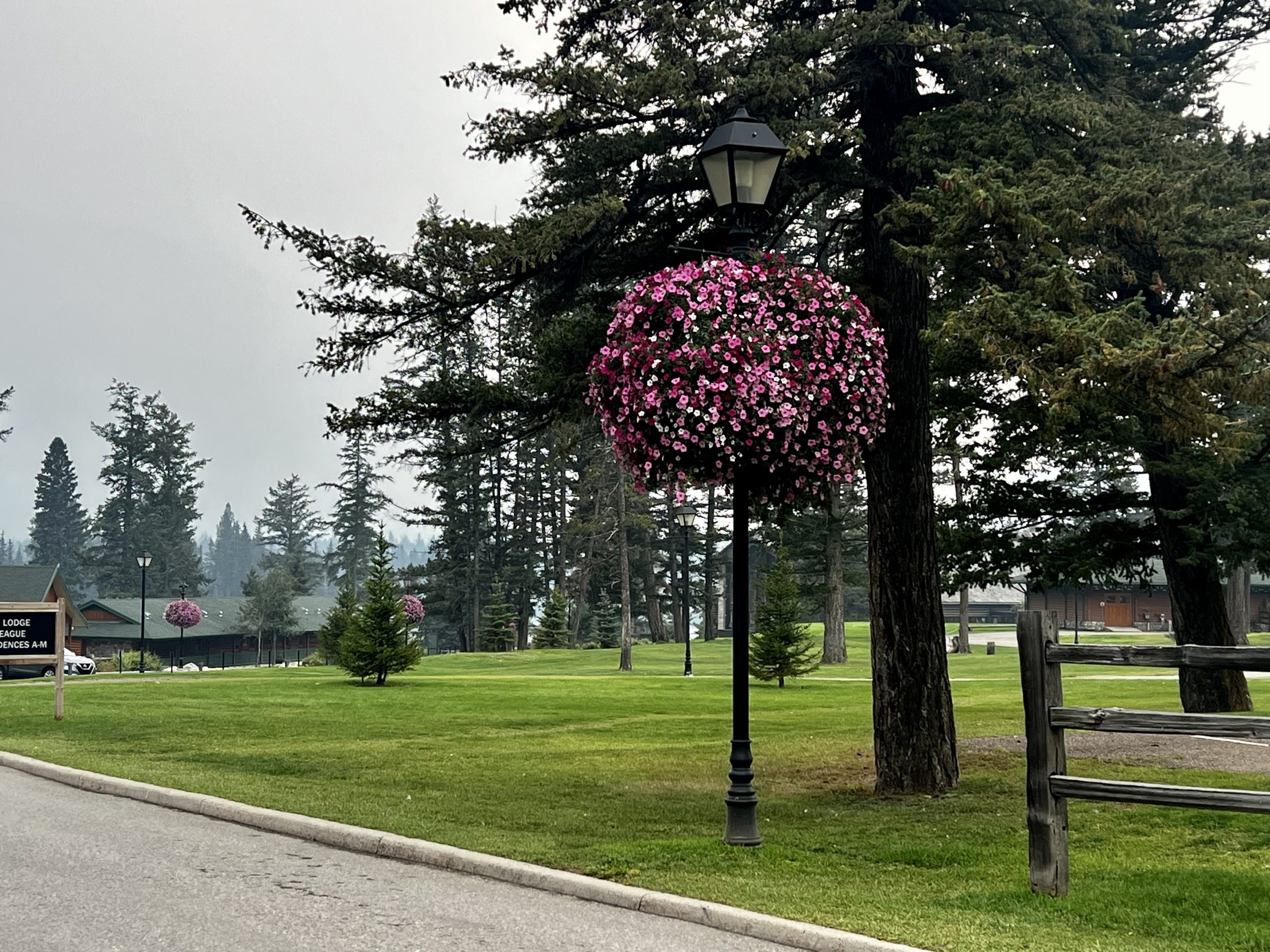
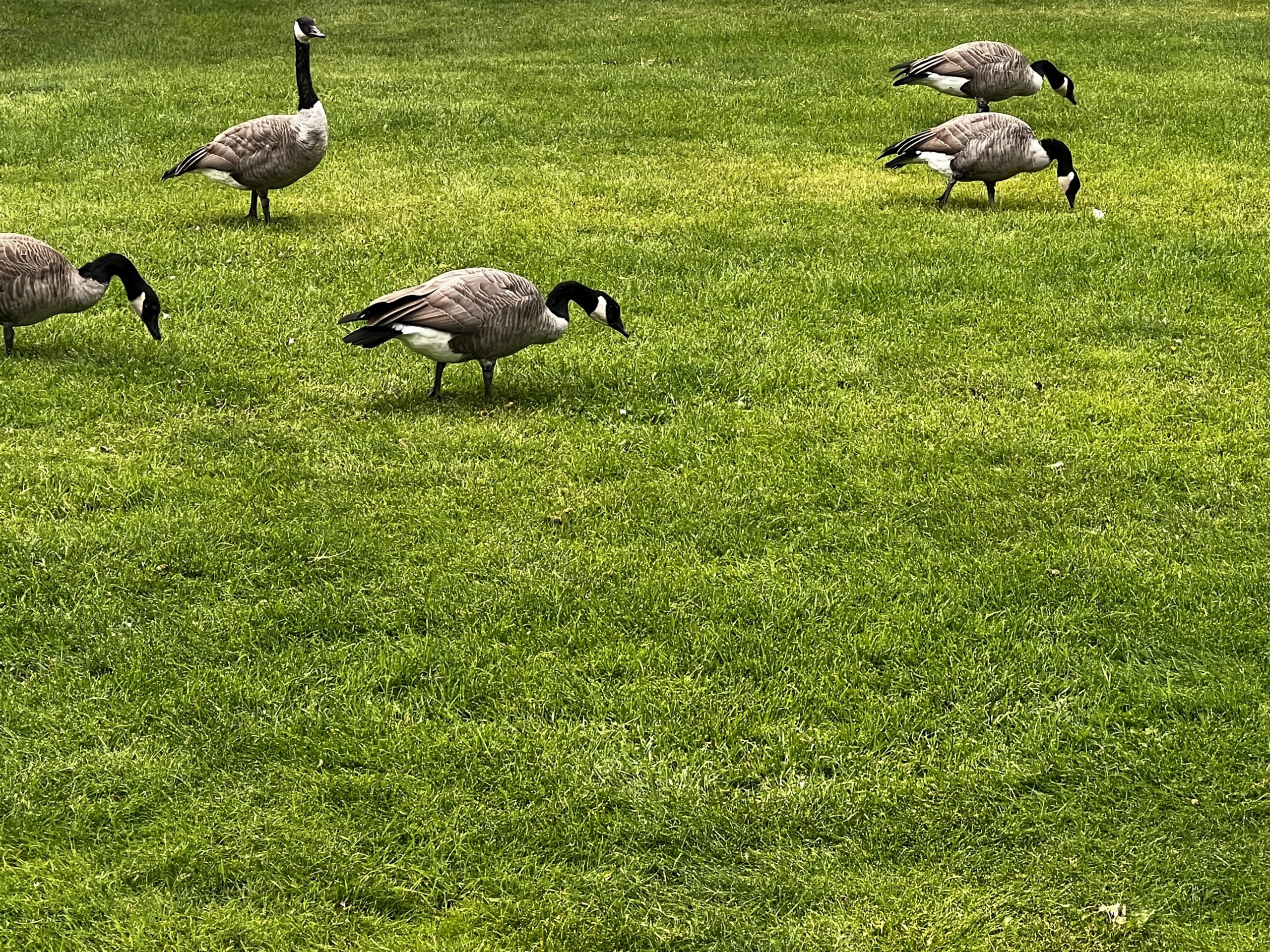
Jasper National Park
Alberta’s largest national park covering 4,200 square miles. The railroad established in 1911 immediately drew tourists to Jasper to enjoy the outdoors. The national park was officially established in 1930 and was declared a UNESCO world heritage site in 1984. No hunting is allowed. You cannot even remove spent elk antlers because they provide nutrition to a variety of animals. Average low temperatures in January are about 20 degrees Fahrenheit, while in the summer months the highs are in the 50s. There are three ecological zones in the park from the meadow to subalpine (trees) to alpine (no trees). Roads are limited. It takes several weeks of backpacking to reach the remote north areas of the park.
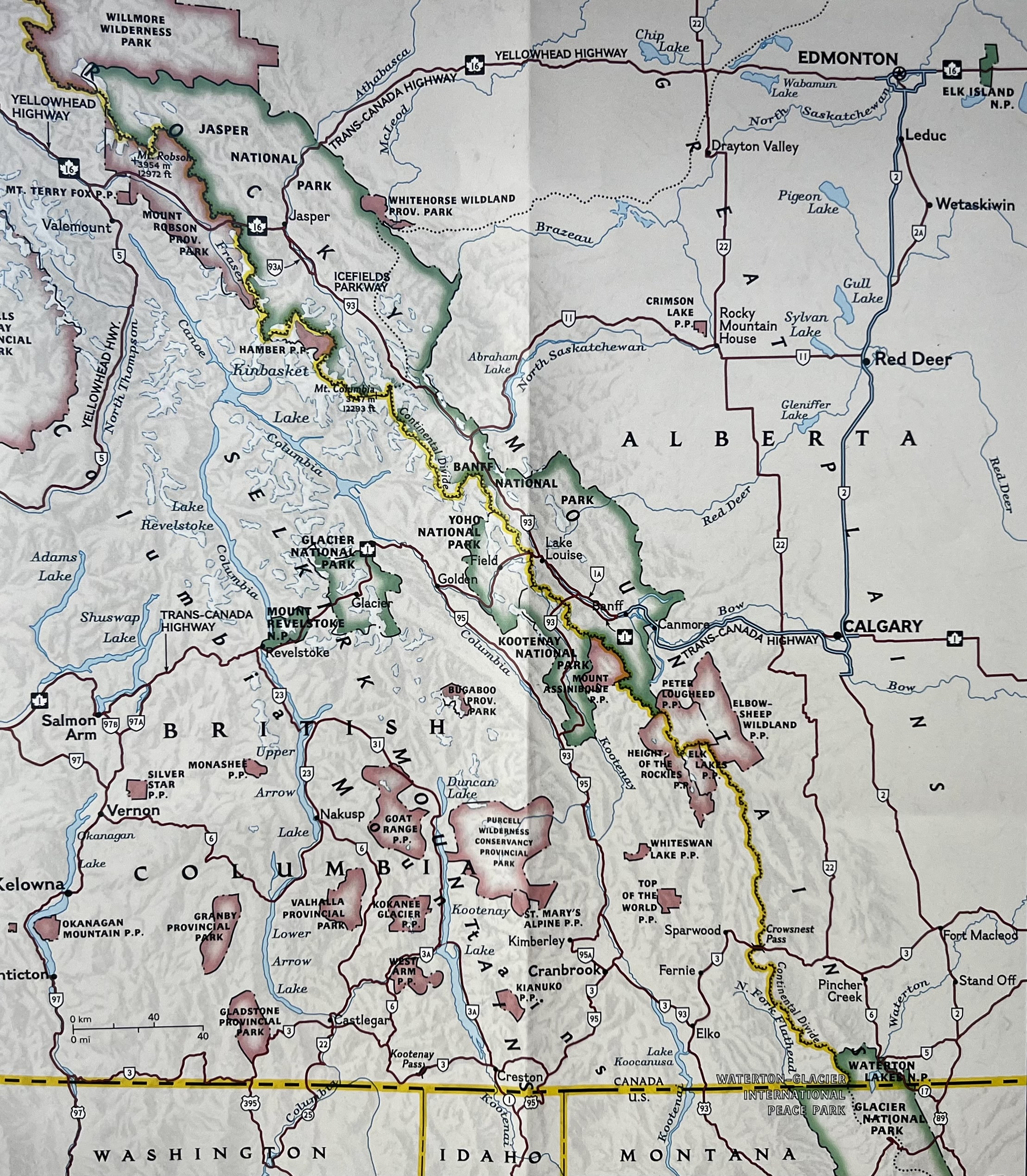
Wildlife at Night
We are not talking about bars, music, and dancing in the late evening hours. Wildlife for Bonnie means a tour in a van that starts at 5:30 pm to spot animals in Jasper National Park. Our driver-guide was great. She is an enthusiastic wildlife photographer and appears to have an education in forestry.
Although there is lots of press about the wildlife in the park, the numbers of buffalo, wolves, bears, elk, and moose are quite limited. For example, there are 18 buffalo in the park and two small packs of wolves. It would be entirely possible to spend days in the park without seeing any. One of our dinner waiters said he had been in Jasper for several years but never seen a moose.
But for us, the wapiti (elk) were out in full force. They are concentrated near the town of Jasper because it has grassy meadows for feeding. Most of the park is covered in dense trees or bare rock. We saw elk cows (female) and their young munching on grass and a few flower beds. The highlight was observing a large bull elk (male) lingering near a group of females, waiting/hoping/frustrated for his chance to mate. He is a bit early, because mating is still a few weeks off. The cows will emit a hormone scent to let him know when they are ready and receptive. In the meantime, he will follow small bands of females and fight off younger contenders. Eventually all the separate groups will band together. After rutting, the large males will be exhausted from a month or so of following the females and fighting rivals. Some of the weaker ones will fall to predators.
The bull elk we observed was a 13 pointer, making him 12-13 years old, nearing the end of his life. Elk grow their antlers each year starting about April, dropping them the end of winter. The antlers grow about one inch a day. He grew that rack in about two months.
The elk in Jasper are from Yellowstone National Park. The two parks made an exchange in the 1990s when Jasper sent a pack of wolves to Yellowstone by air and Yellowstone sent Roosevelt Elk to Jasper by train. Both exchanges have done well. Especially Yellowstone because the park was experiencing overgrazing by elk that caused erosion and flooding. The newly introduced wolves have kept the elk population in check. This is a link to a great eight-minute video that explains how the wolves saved Yellowstone.
The elk graze close to the road and seem unperturbed by traffic. But we were disconcerted to see tourists getting out of their cars to take photographs of the animals. Very dangerous. Our driver pointed out that the bull elk we saw was on high alert watching a male tourist too close to a female elk. The bull was ready to intervene.
One serious issue in Jasper is that one hundred years of well-meaning fire suppression has created so much fuel that a mega fire throughout the park seems inevitable. The park is comprised of thirteen species of trees, with the lodge pole pine dominant. While its usual lifespan is about thirty years, the current trees are close to one-hundred years old and thus not in robust health. In addition, a beetle that originated in northwest British Columbia devastated the lodge pole pines over a recent period of eight years. Unlike the United States, the Canadian federal government, still relying on old policy and old science, does not allow controlled burning. They believe nature should take its course, not recognizing that the present ecosystem is not natural. Jasper is lobbying to change the policy.
The heavy forest growth prevents much sunlight from reaching the ground, so there is a paucity of food available for animals. Most park animals prefer areas that have burned because new crops of shrubs, grass, and berries thrive there.
While moose and bear were on our wish list for the wildlife tour, they did not make an appearance. We did see Canadian geese beginning to gather for migration south, and a few very shy deer. We learned that black bears are native to North America. Grizzlies are not. They came across the Bering Strait that once connected Russia to North America. The hump on the grizzly’s back contains a muscle used for constant digging for food. Seeing bears was unlikely on this tour because they usually inhabit higher elevations at this time of year. However, our guide explained that bears normally rely heavily on a diet of Buffaloberries at this time of year. (A grizzly can eat up to 200,000 berries a day.) But this year the berry crop is nonexistent because of a freakish June snowfall and continuing fire smoke. Without berries to eat, the bears are heading into town of Jasper in the evening to feed on fruit, like apples, in people’s yards. Some of the fruit has fermented, causing bears to nap in the trees, awakening later to munch a bit more. By next year the federal government will likely require residents to cut down their fruit trees. This would be a blow to the residents because they live in food desert with little opportunity to grow their own food in the short growing season. Bears in Jasper are smaller than those in British Columbia or Alaska because they have no access to fish like salmon. Without a source of protein, their growth is limited.
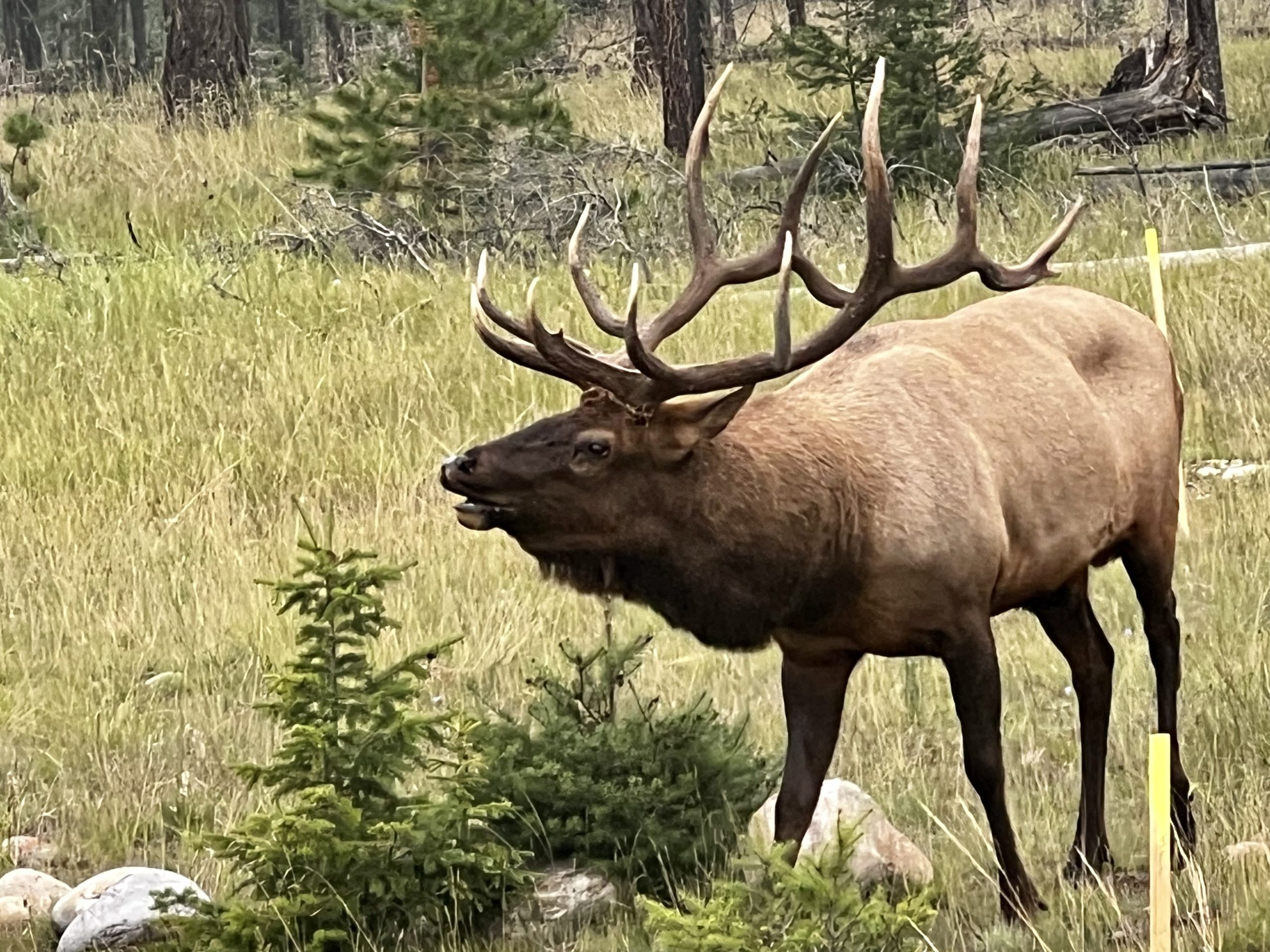
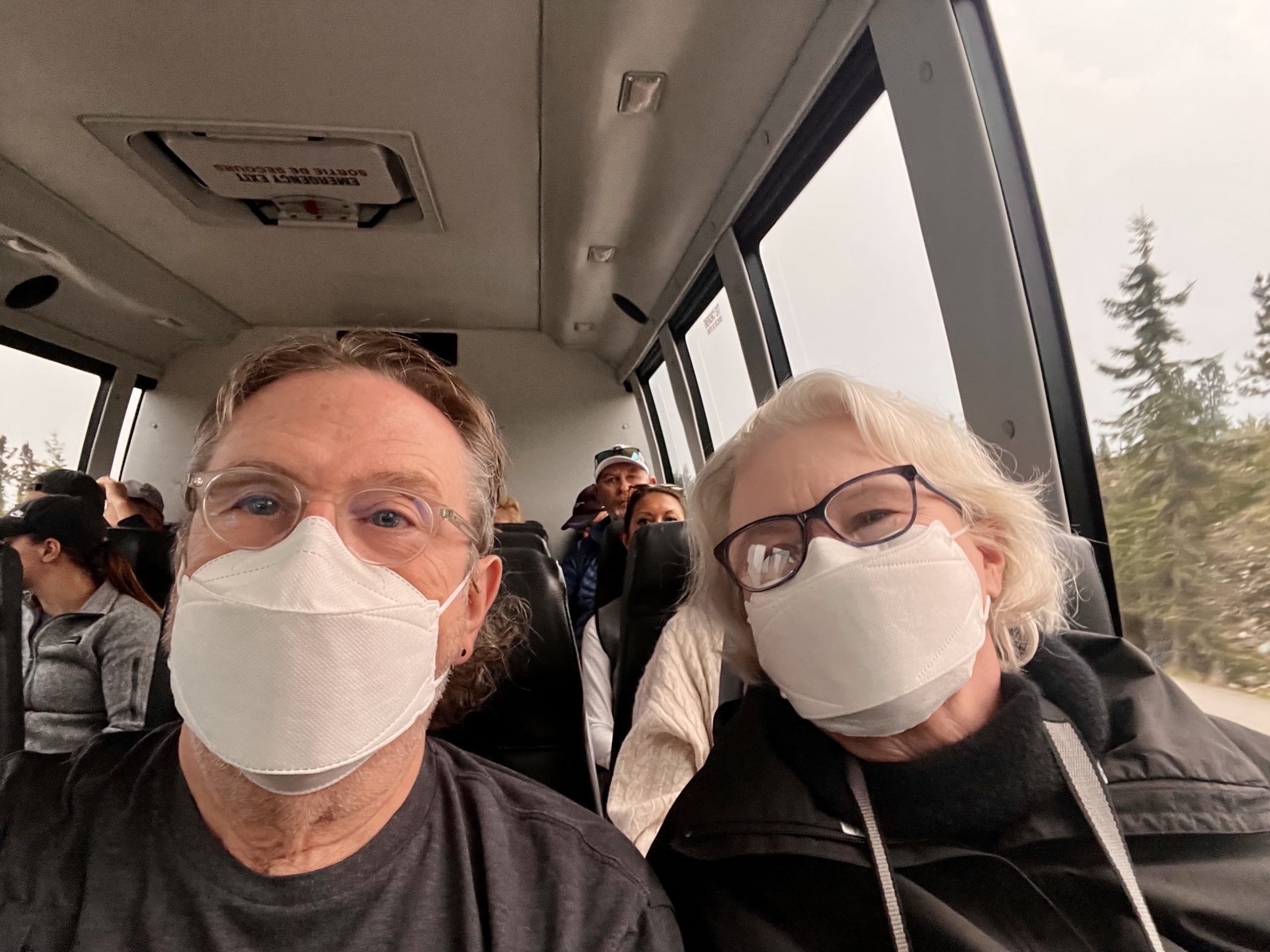
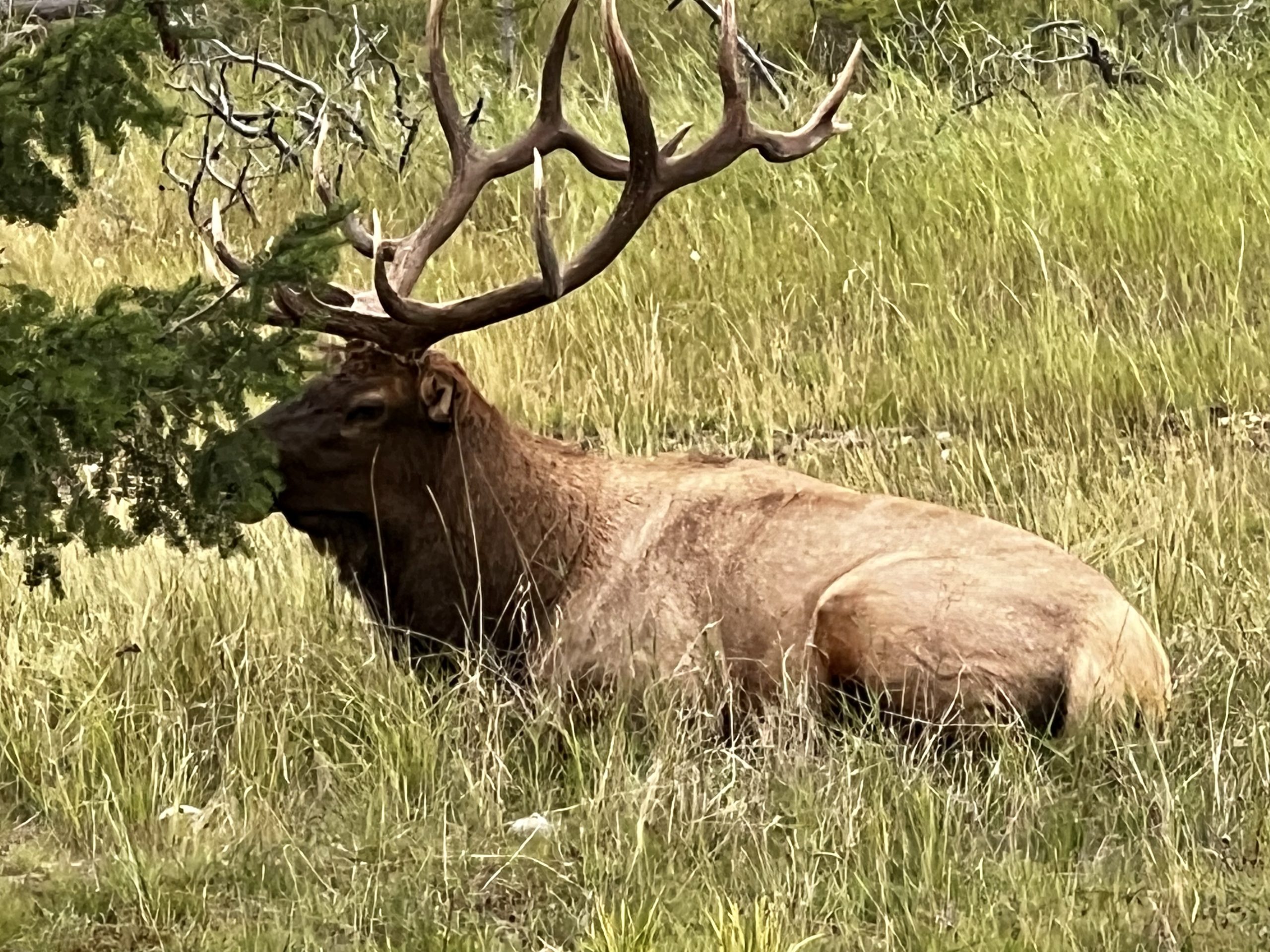
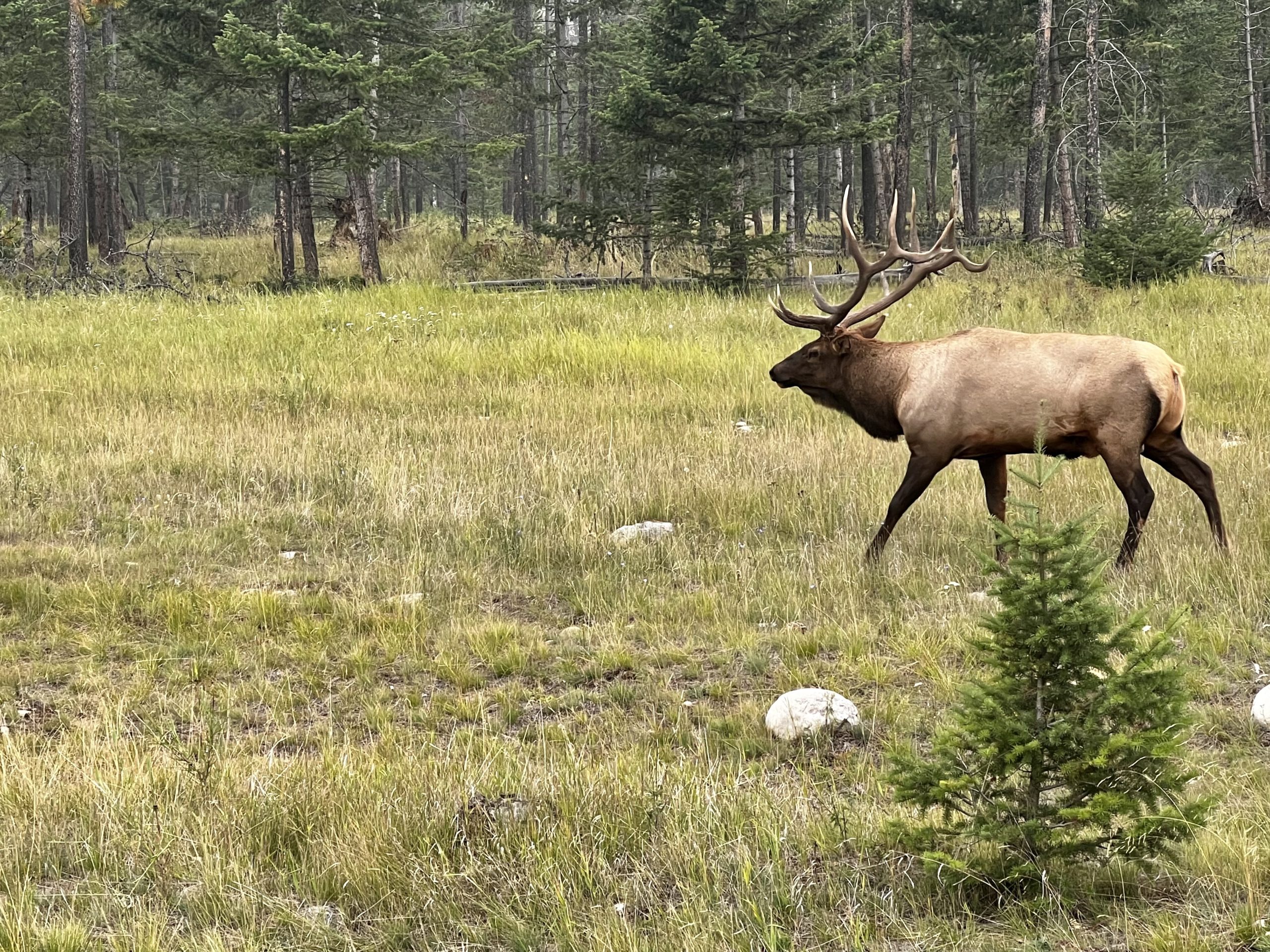
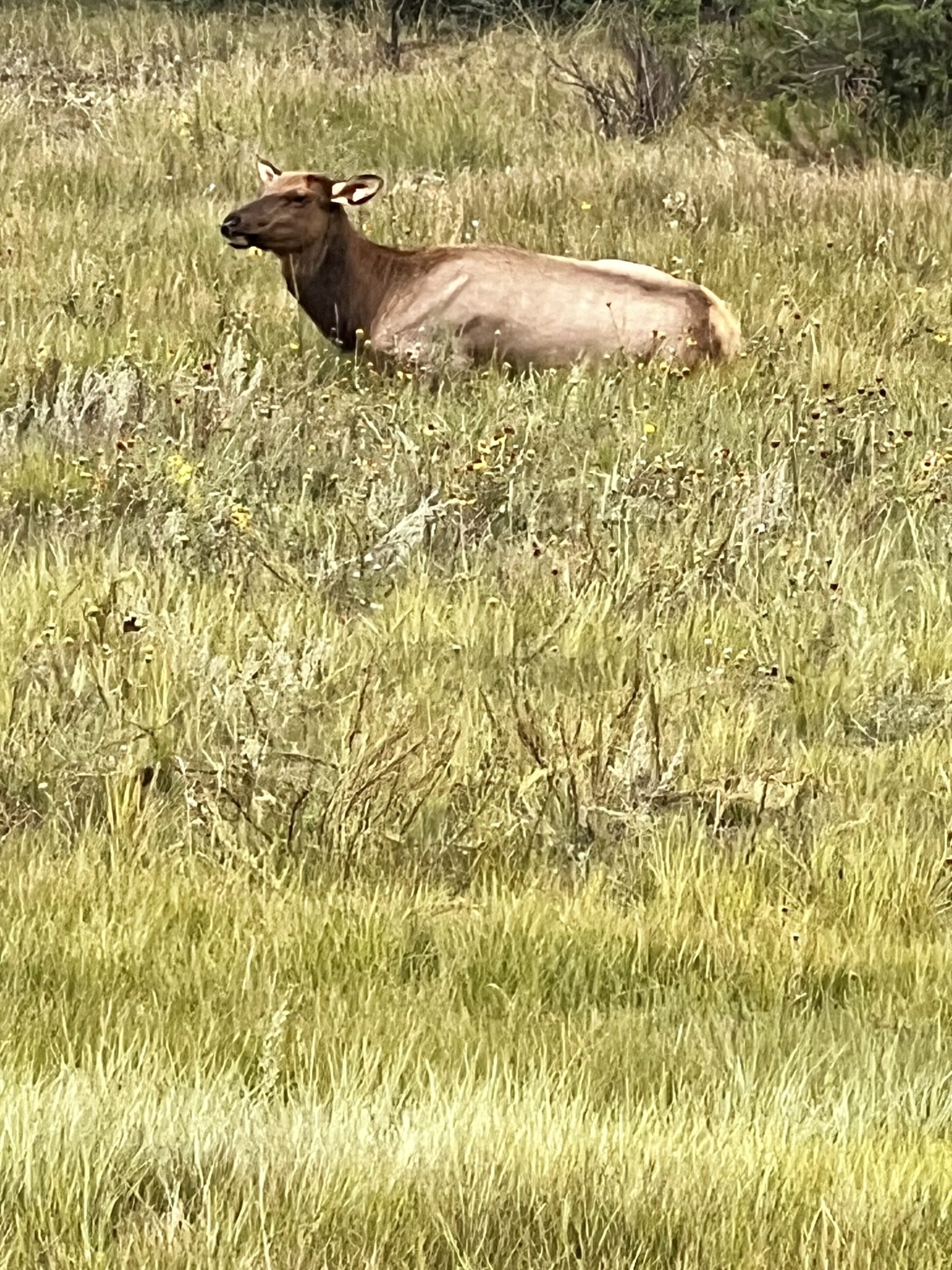

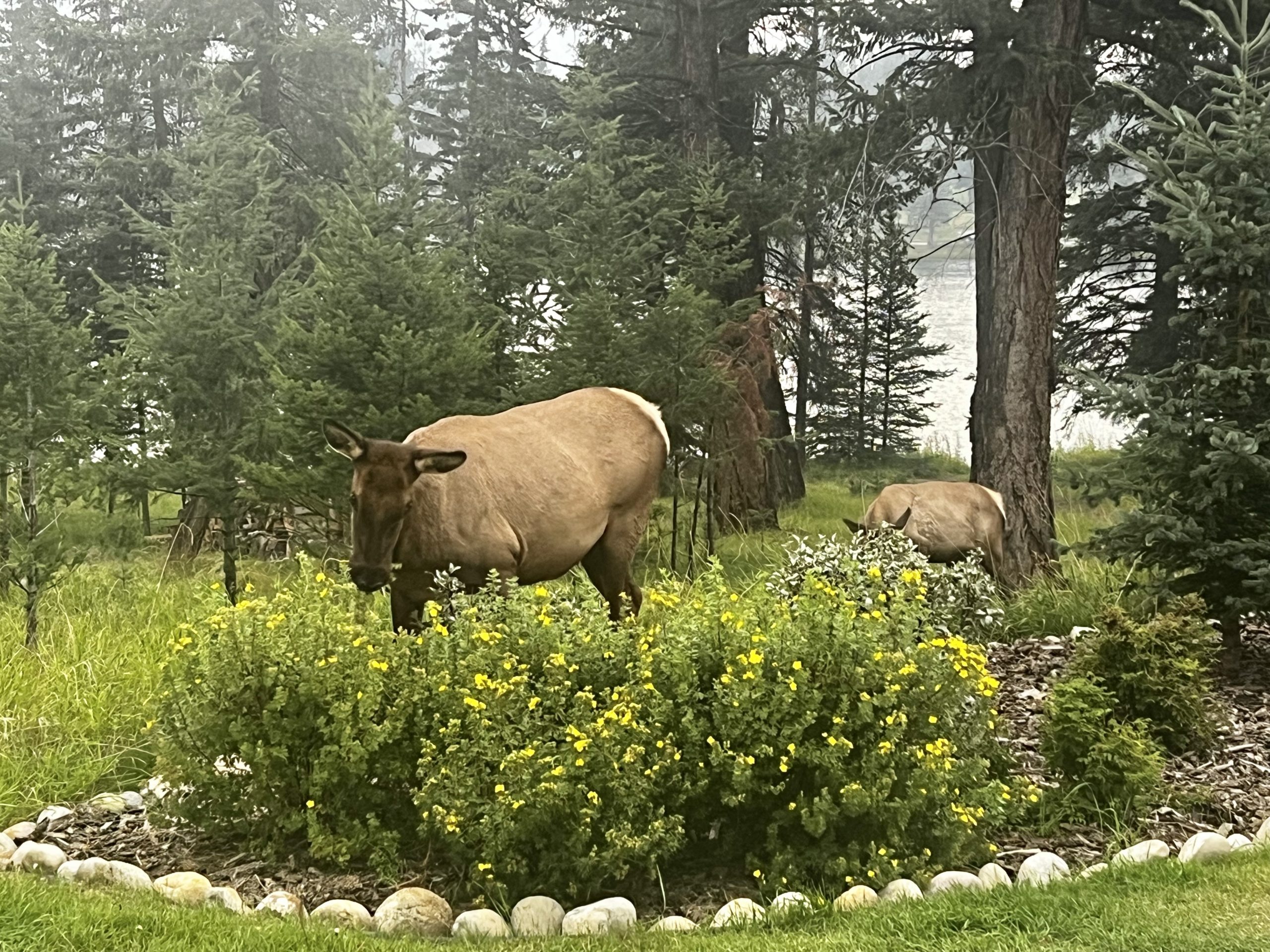
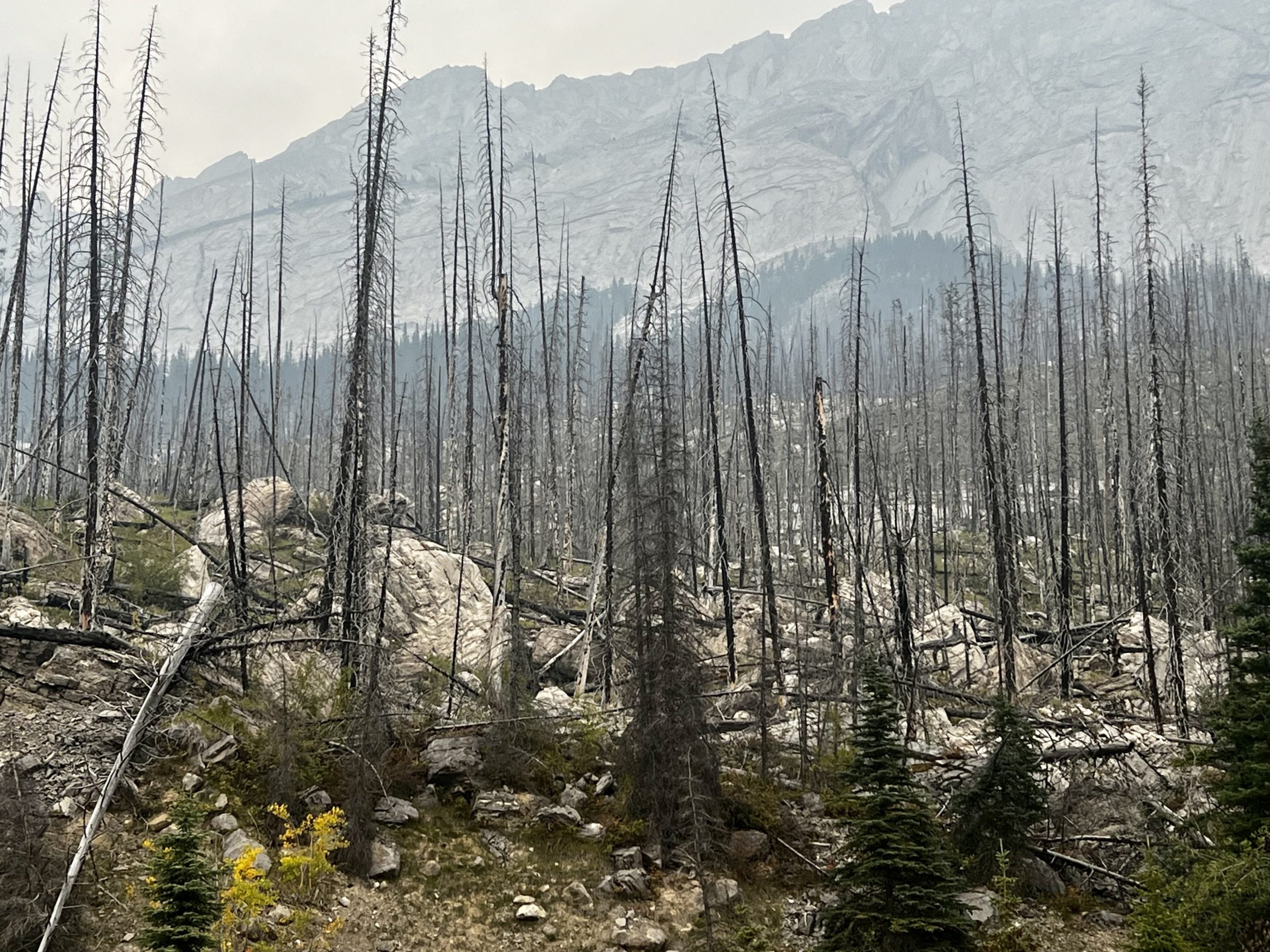
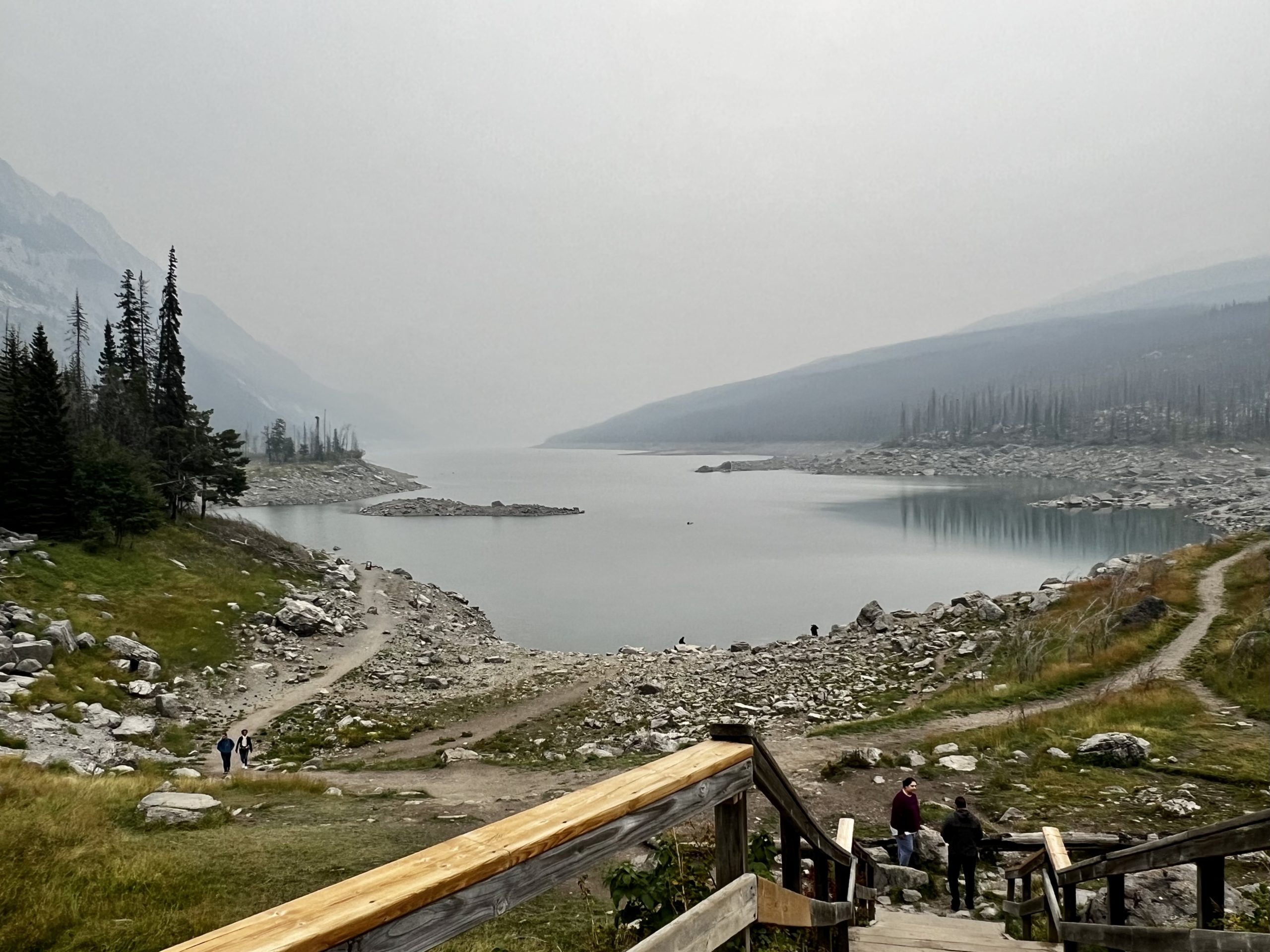
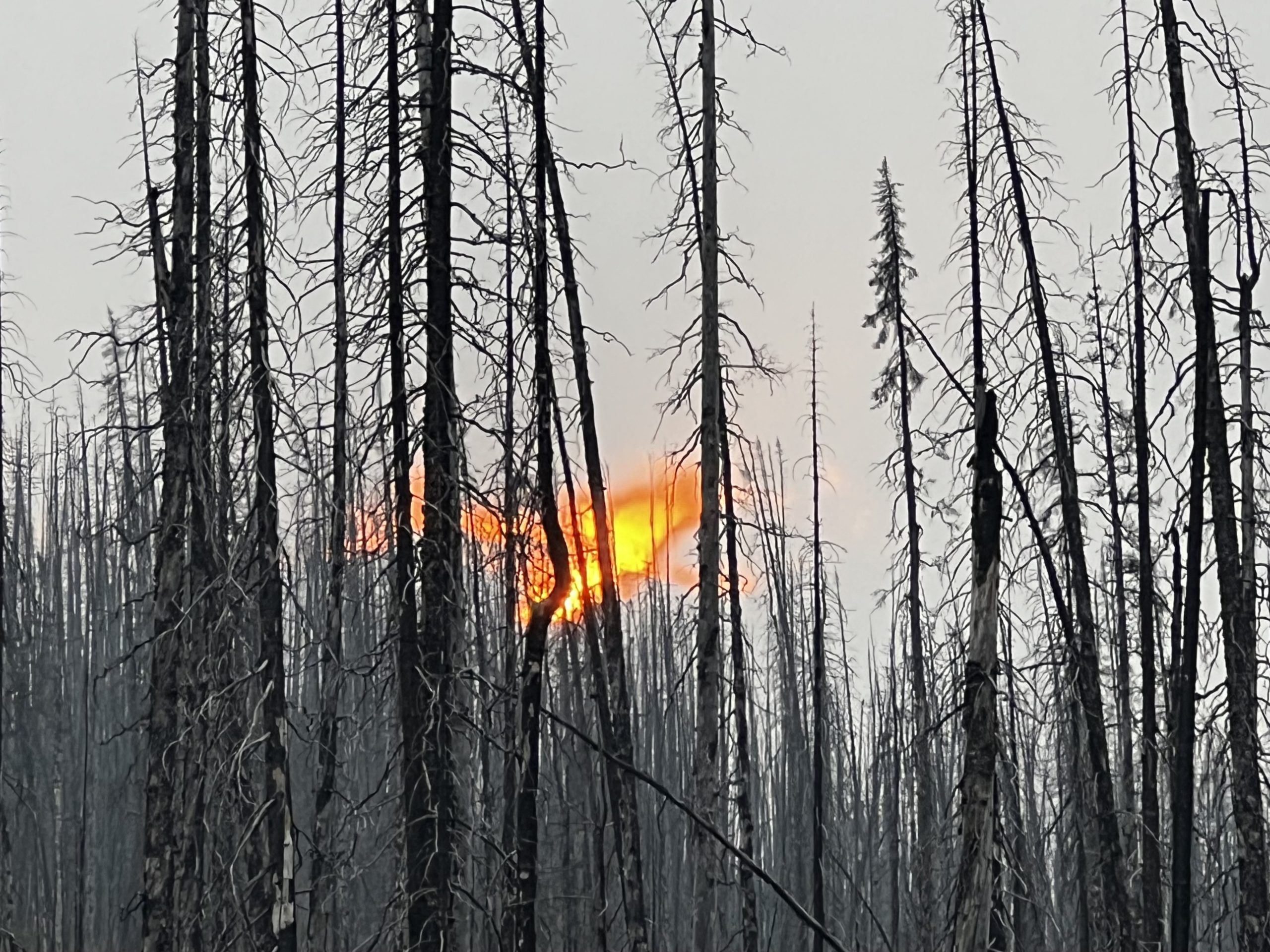
Although we saw many wildlife overpasses and underpasses on the highway in Banff National Park, and miles of wildlife fencing to keep animals off the highway, we did not see any in Jasper National Park. Before proceeding, Jasper waited for studies on how these structures impacted the wildlife population. Ironically, Banff discovered that more animals are now lost to predators than previously lost to traffic collisions. It turns out that predators like wolves are quite happy to lie in wait at overpasses, which concentrate the wildlife, such as elk and deer, in a few places. Easy to grab a meal.
Nourishment
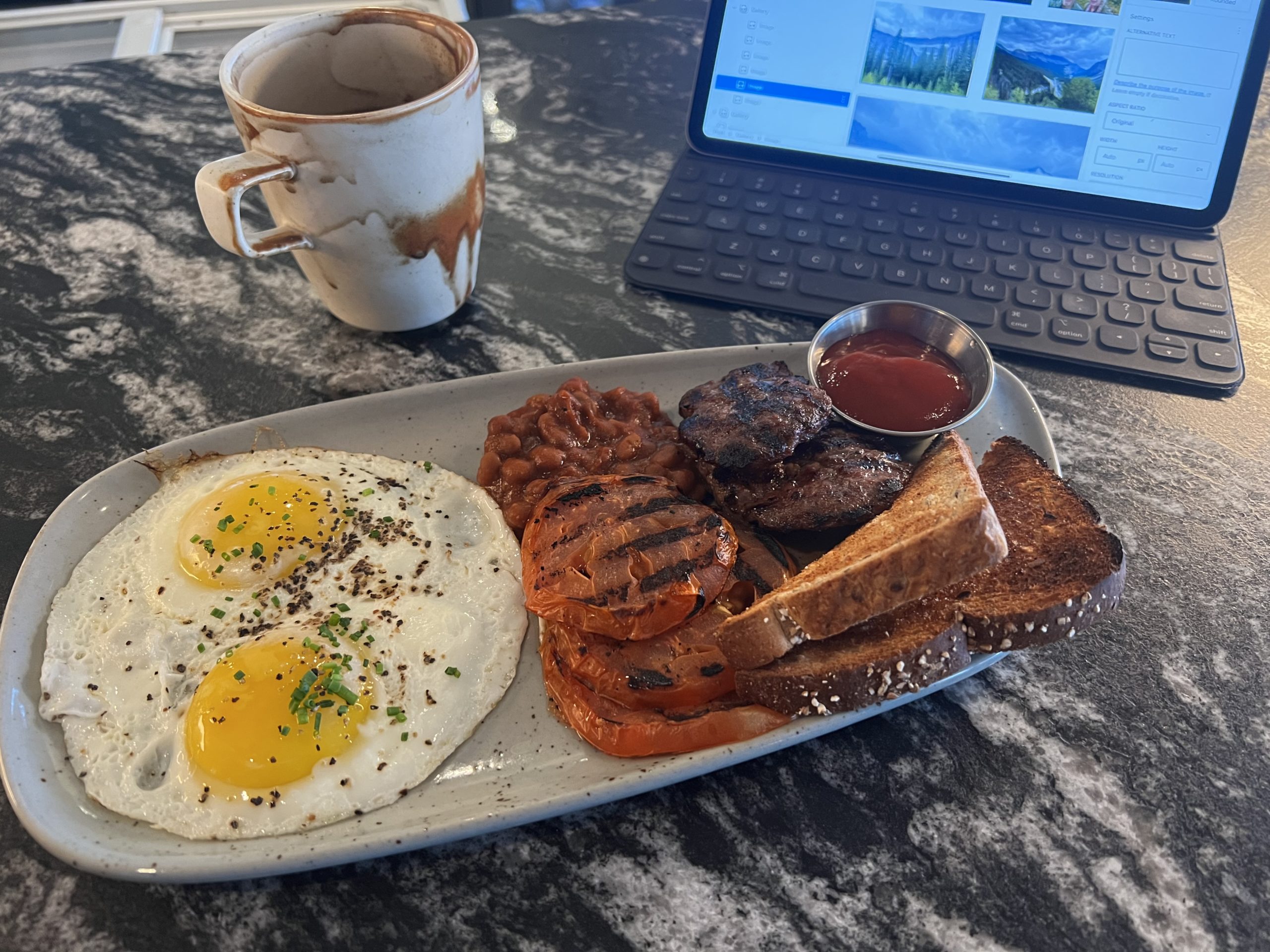
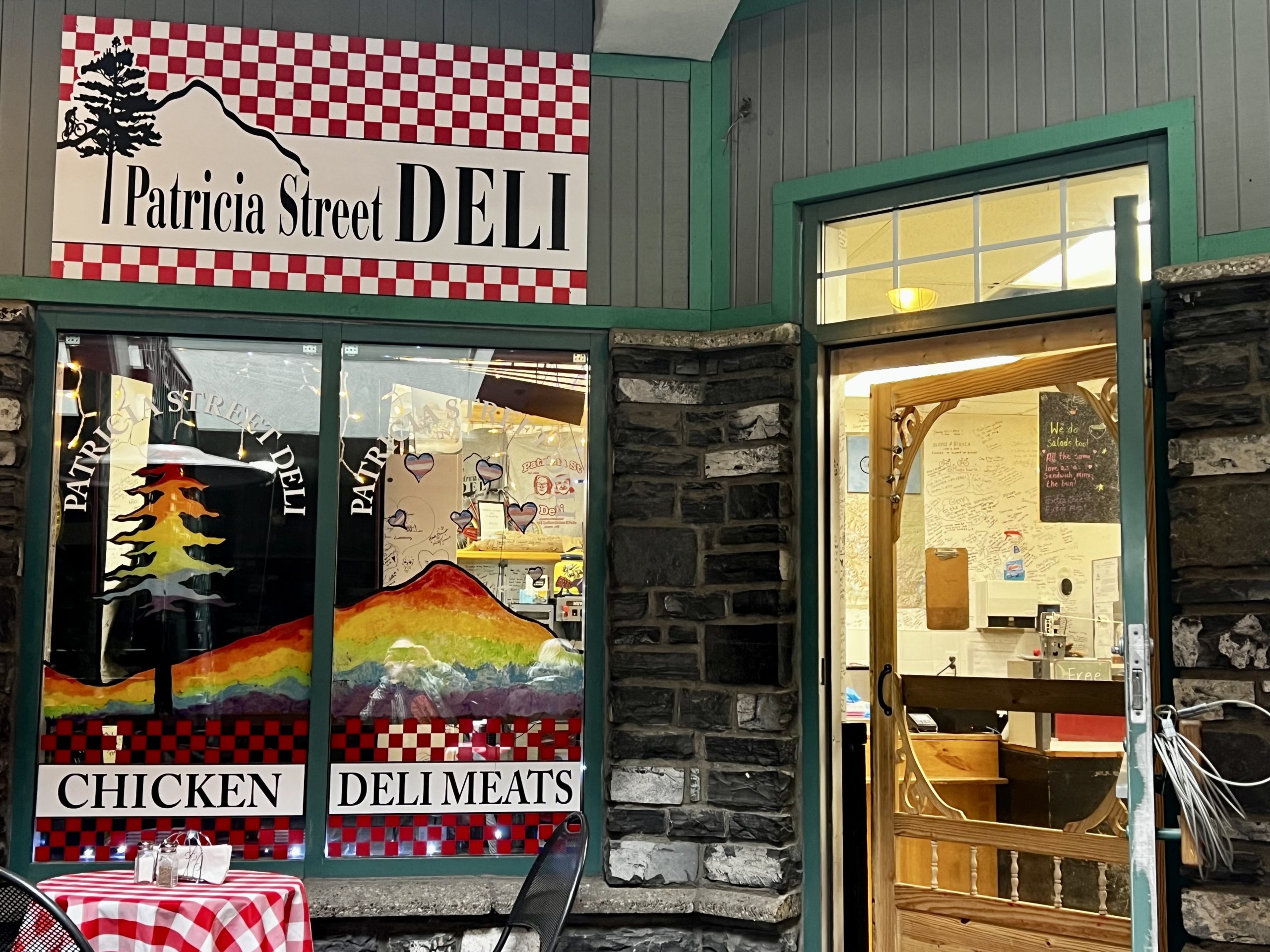
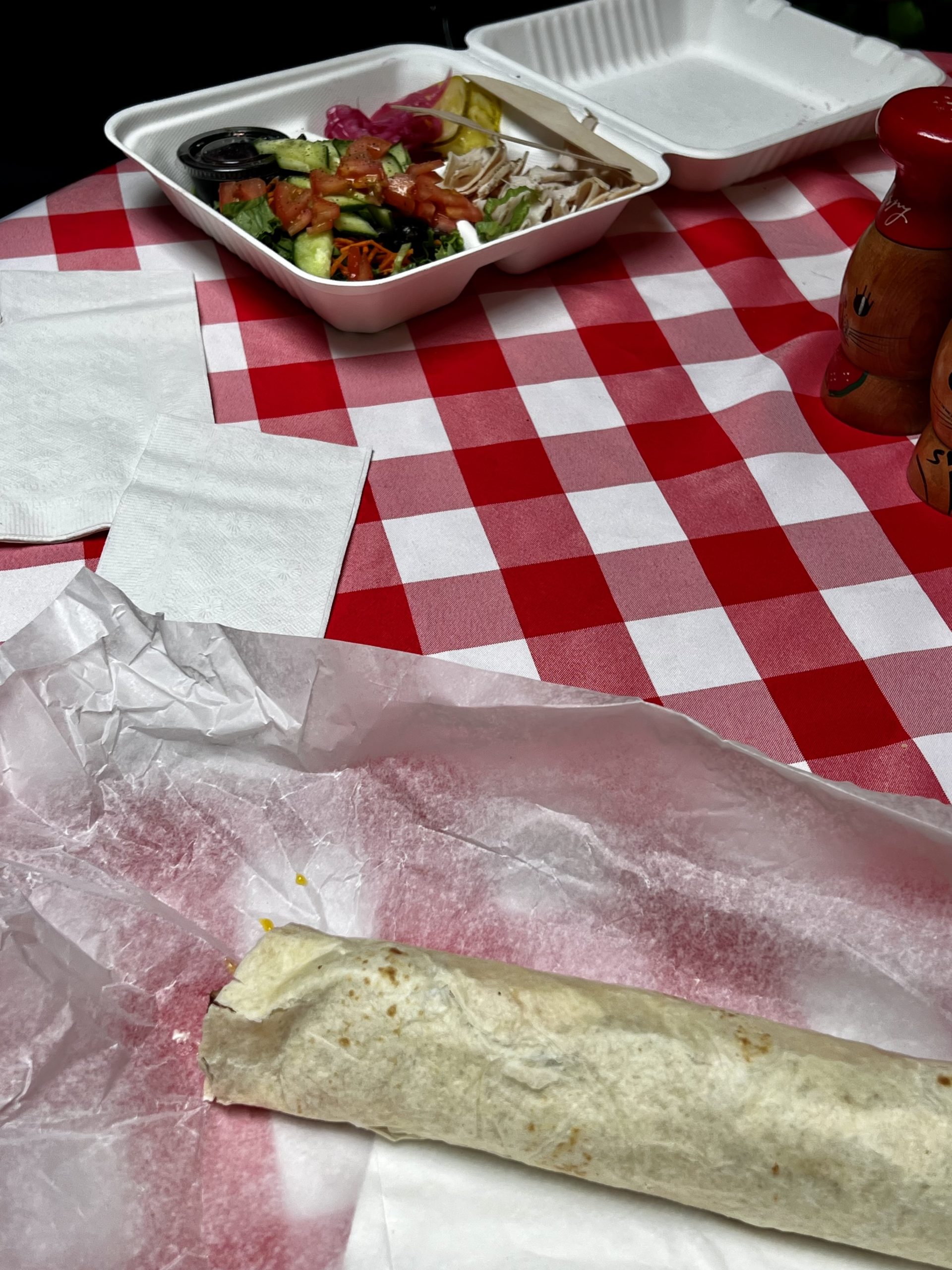
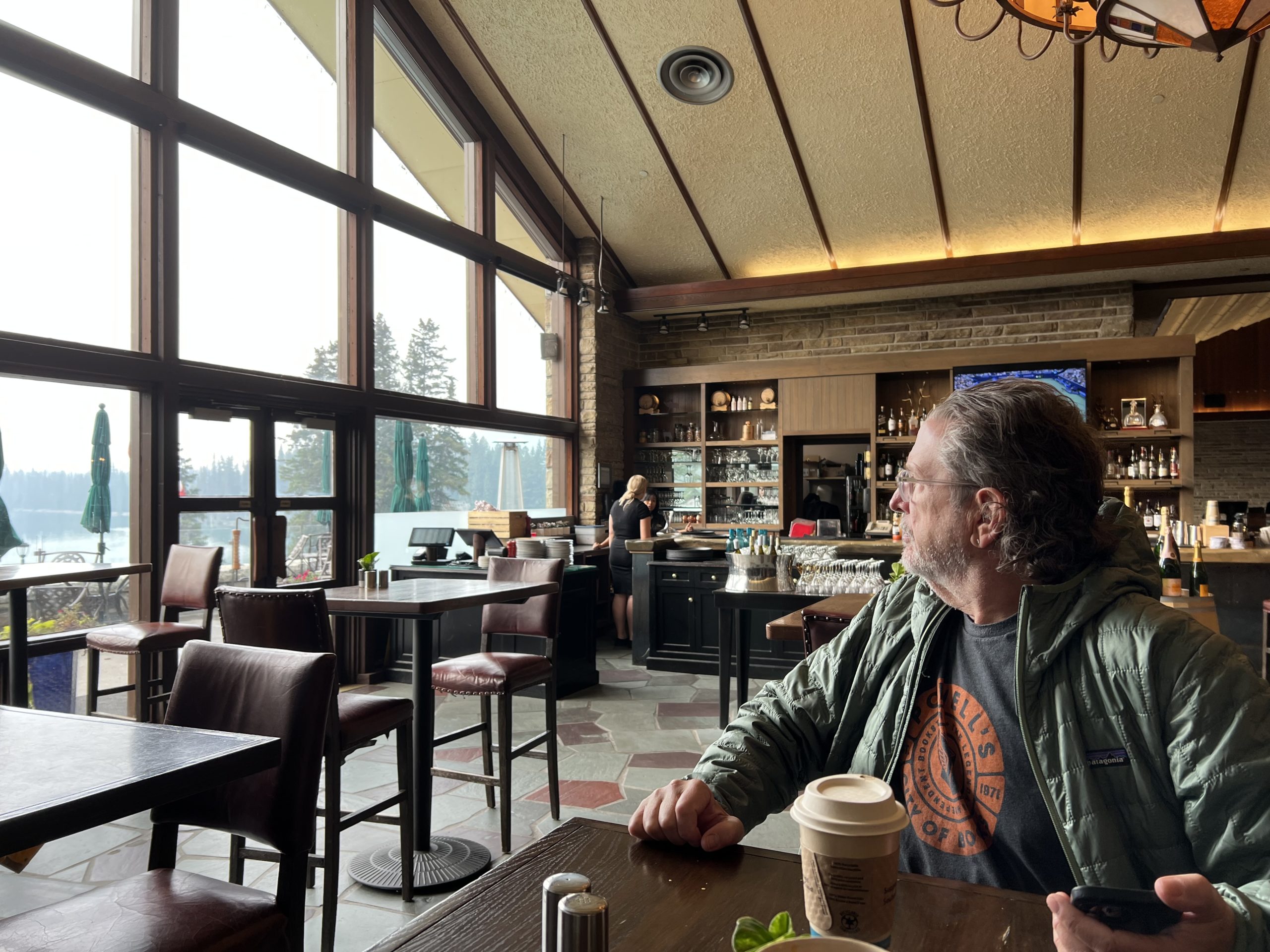
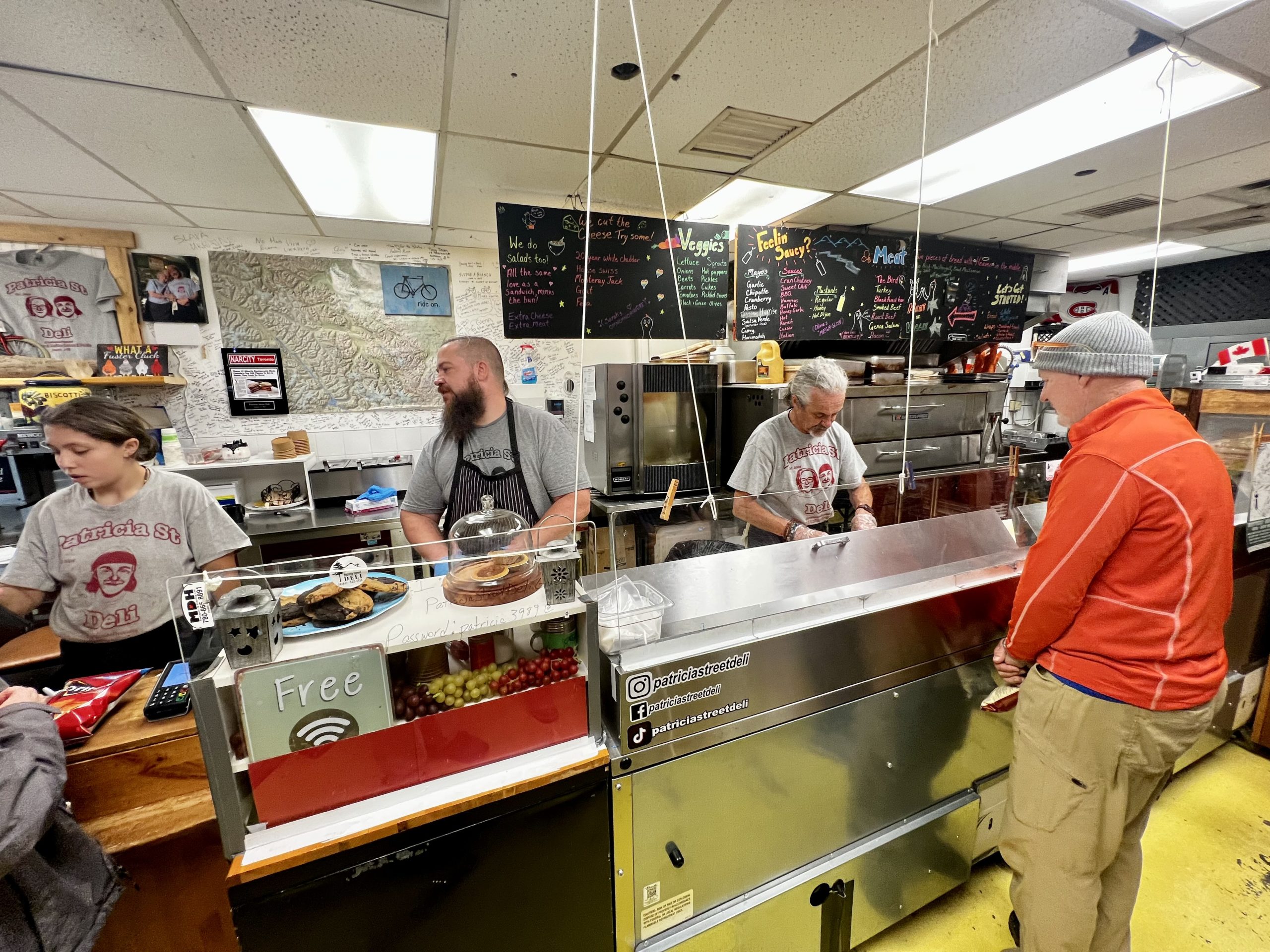
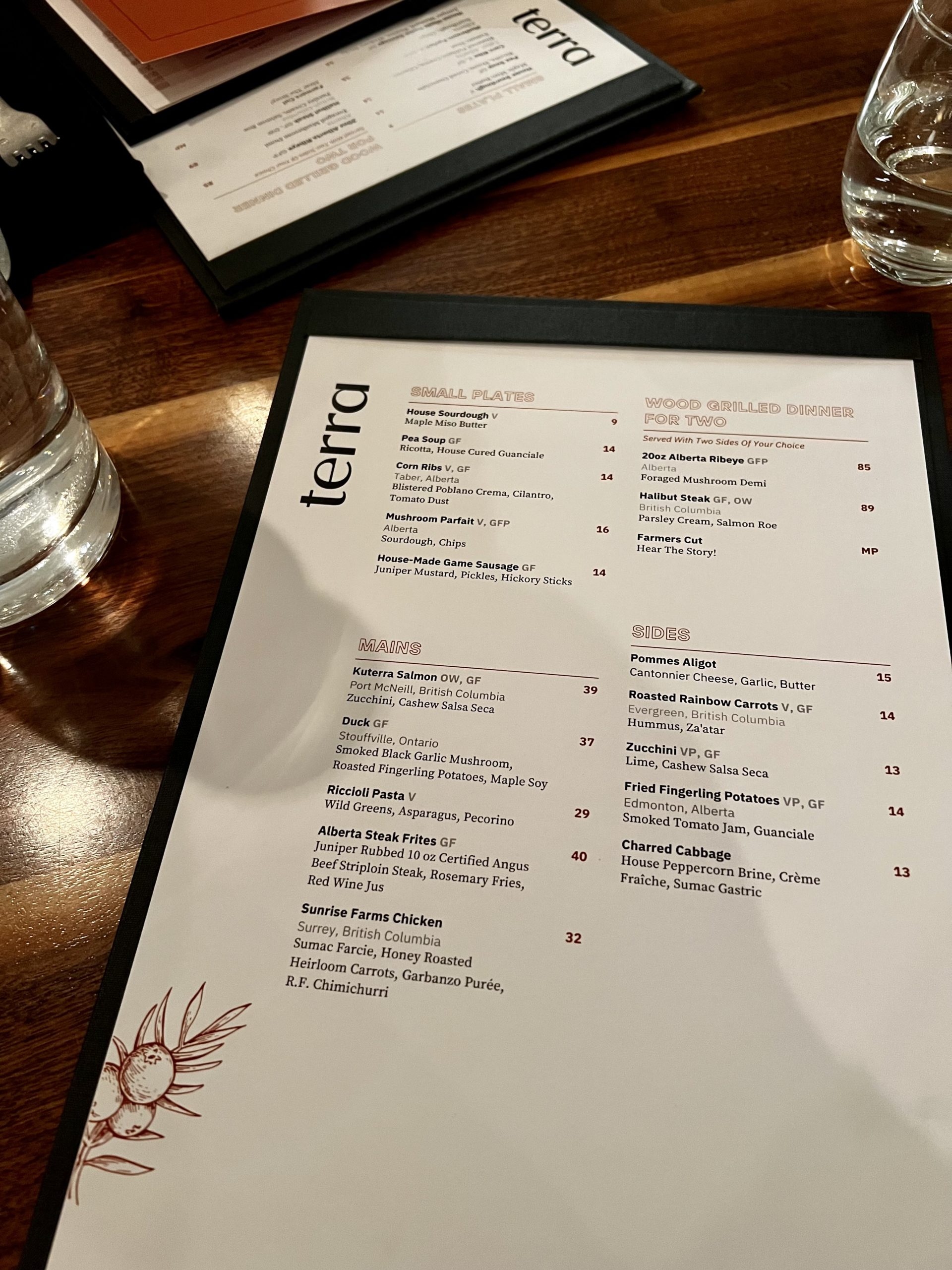
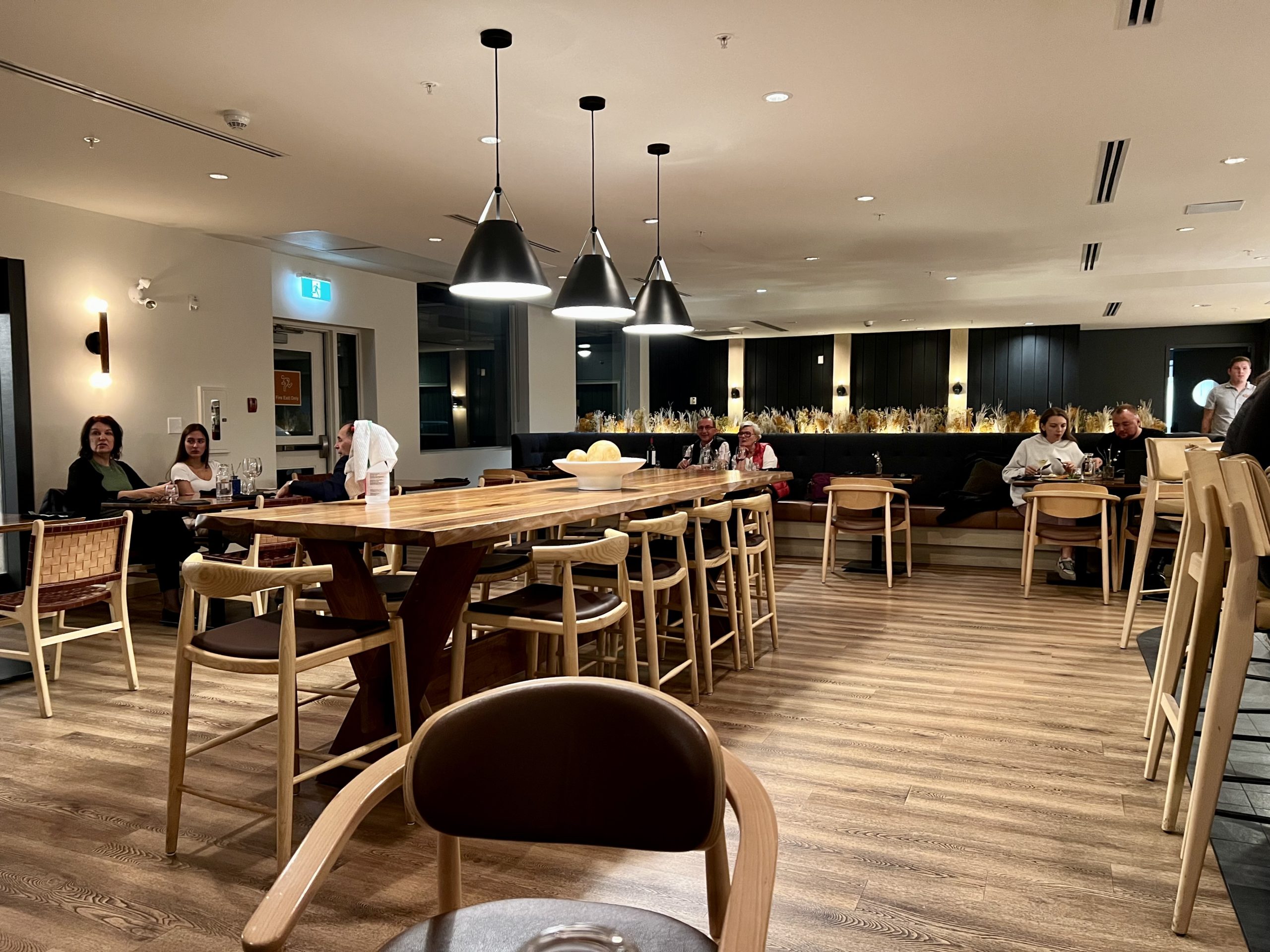
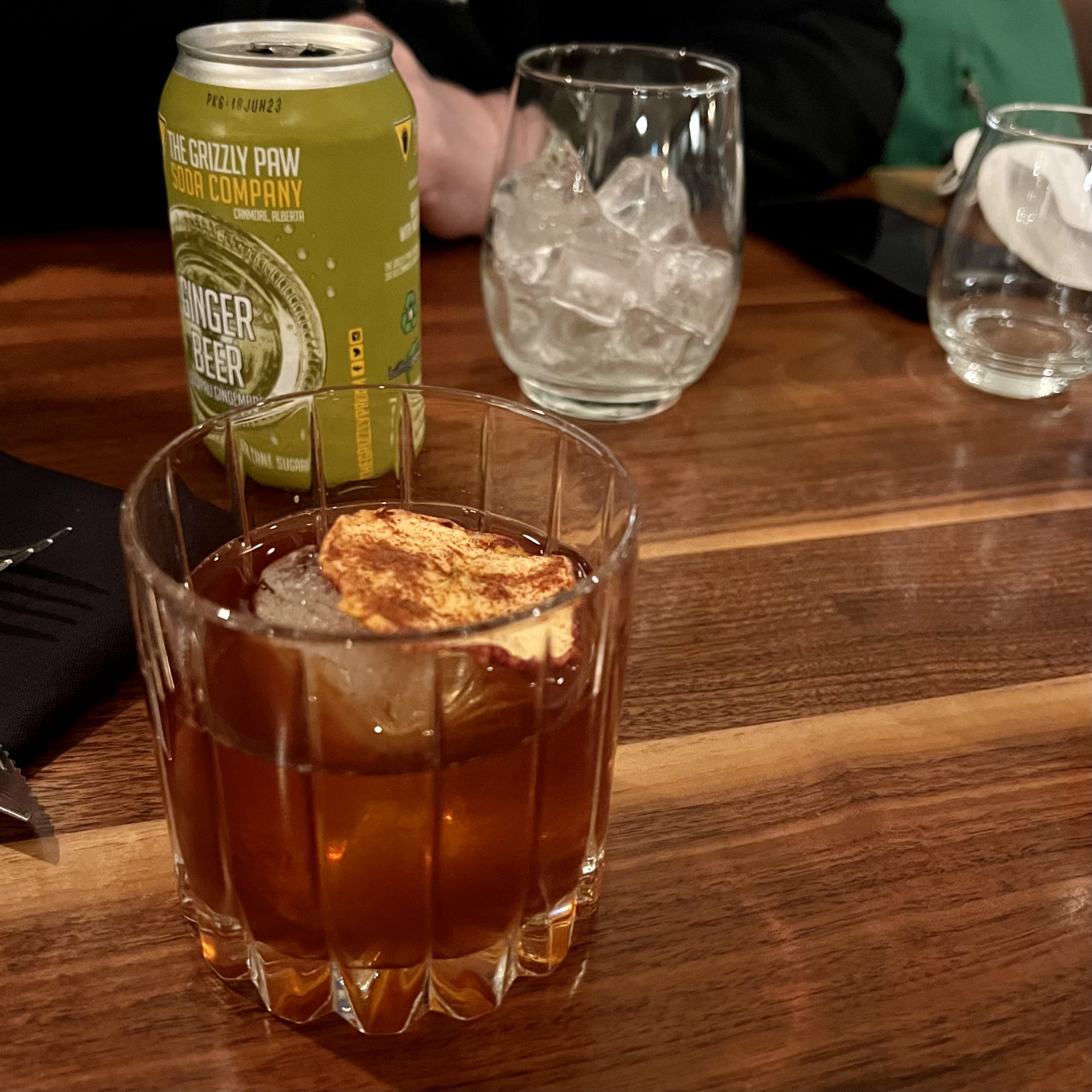
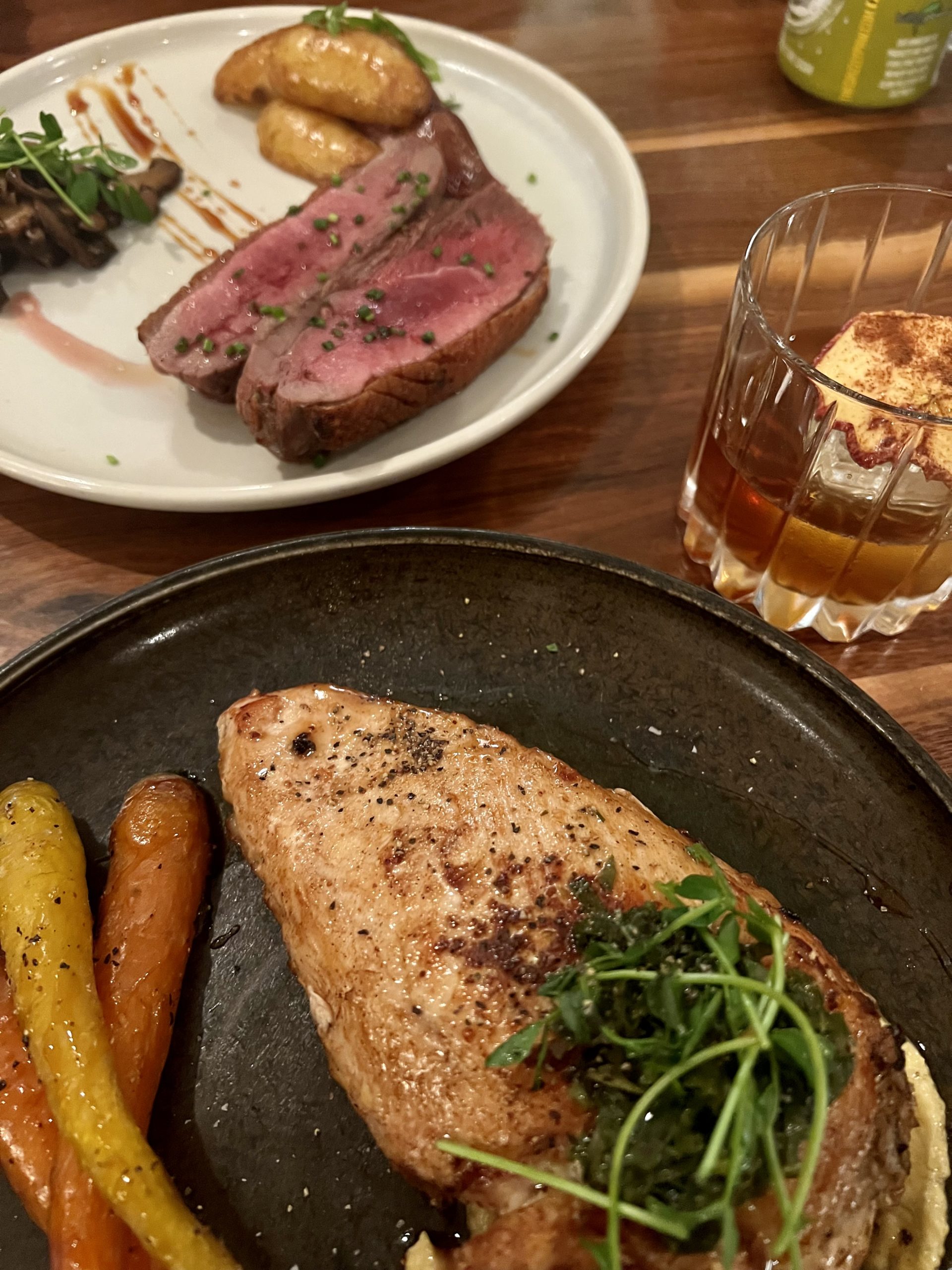
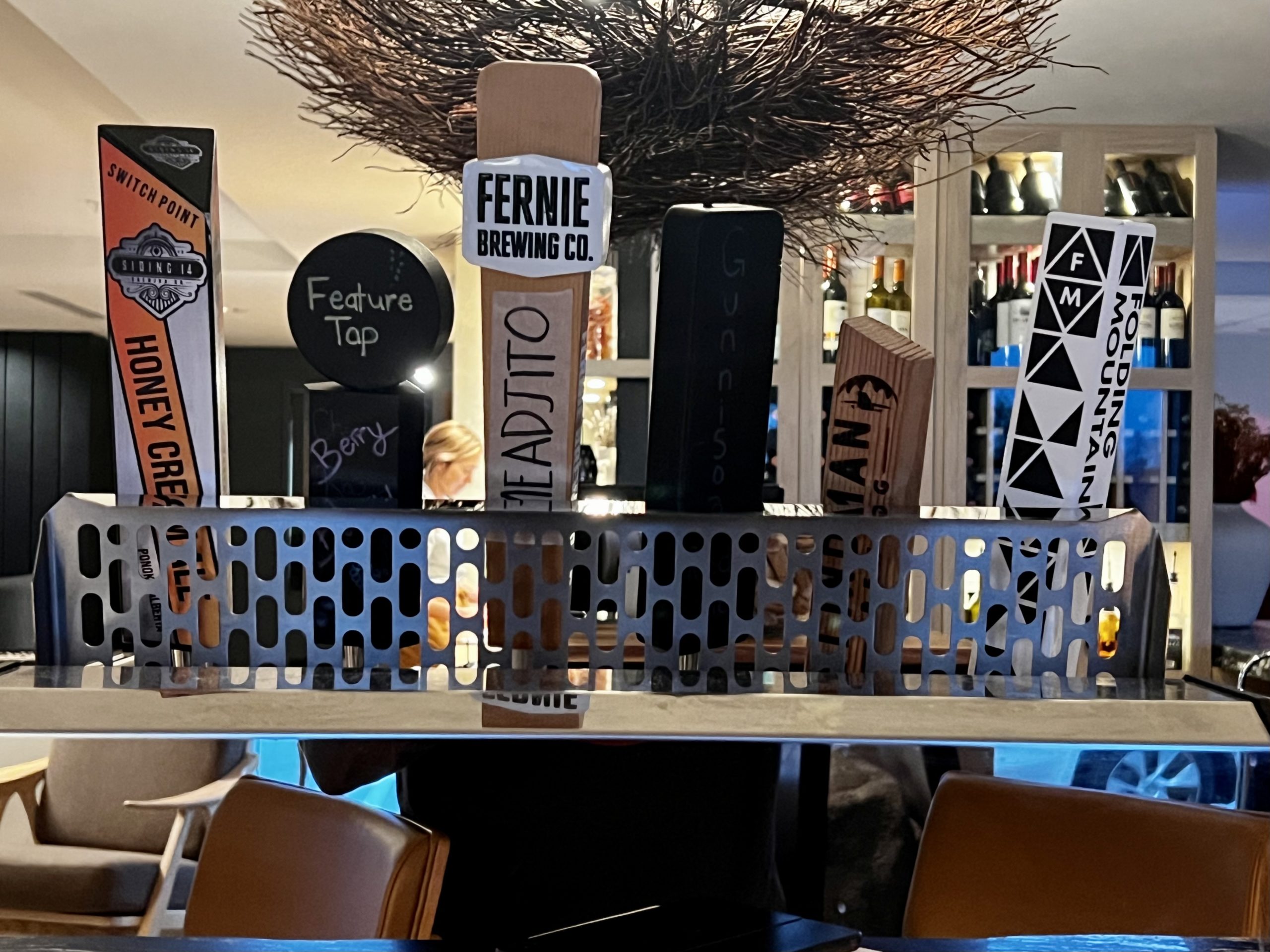
05 September 2023
Lake Maligne Tour
This tour started at a perfect time for Bonnie—12:30. The destination was Lake Maligne for a boat ride. The bus tour followed the same road as the wildlife tour the day before. Our twelve fellow tourists were from Germany, England, Milwaukee, Japan, and Australia. The bus driver, Francois/Frank, provided commentary during the one-hour drive up. It is interesting to hear the same stories from different guides. Although their stories share the main thread, the details often vary. The local government should prepare a fact book for guides to use.
We spotted a few elk along the way and had the exceptional siting of a cow moose and her calf. She is the only one that has been seen in the region in recent months. The easiest way to spot wildlife is to see a cluster of cars pulled over on the side of the road. This guide pointed out the same eagle’s nest we saw the day before, but there were no eagles this year.
Along the way, we stopped at Medicine Lake that has the unique characteristic of draining fully each year. The mountains here and the substrate are karst (dolomitic limestone), and there is an underground stream that drains the lake, exiting seventeen kilometers away. In the past, before the national park was established, locals tried to “plug the drain” with a variety of materials including mattresses and bundles of magazines. Did not work.
On the boat ride on Lake Maligne, our tour guides were Mel, the tiny female boat captain, and Seb, a six foot six comedian (or so he thought). The lake is at an elevation of 5,500 feet with surrounding mountain peaks of 9,500 feet. The snow on the peaks was stunning, fresh from a dusting about two hours before our arrival. The ninety-minute cruise included a fifteen-minute stop at Spirit Island at the end of the lake. The island is a small isthmus that has spiritual relevance to First Nations people. Makes a quite nice view that has been extensively photographed. The color of the lake is due to the glacial “flour” in the water. Refraction and absorption of colors result in the aquamarine color.
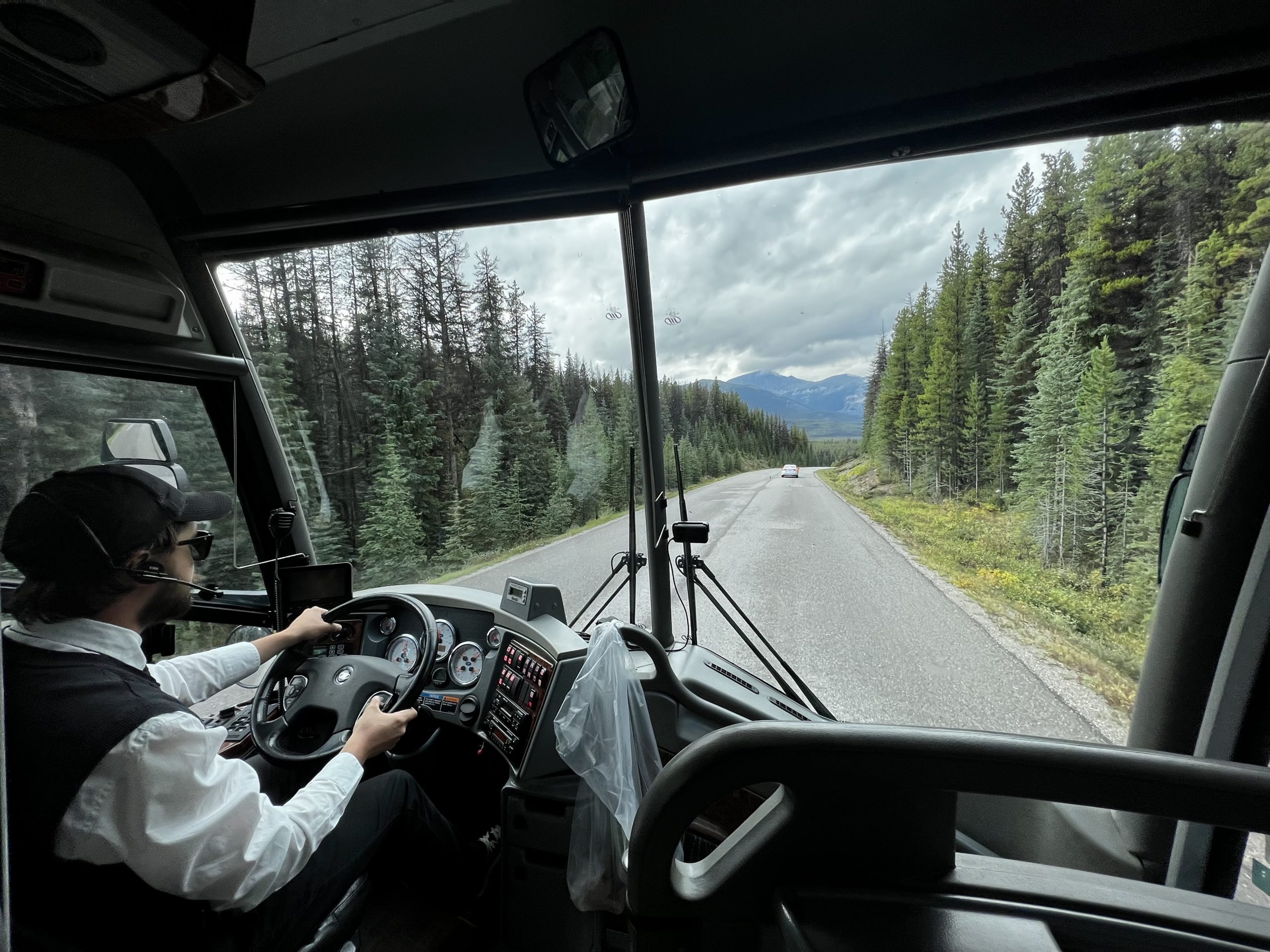
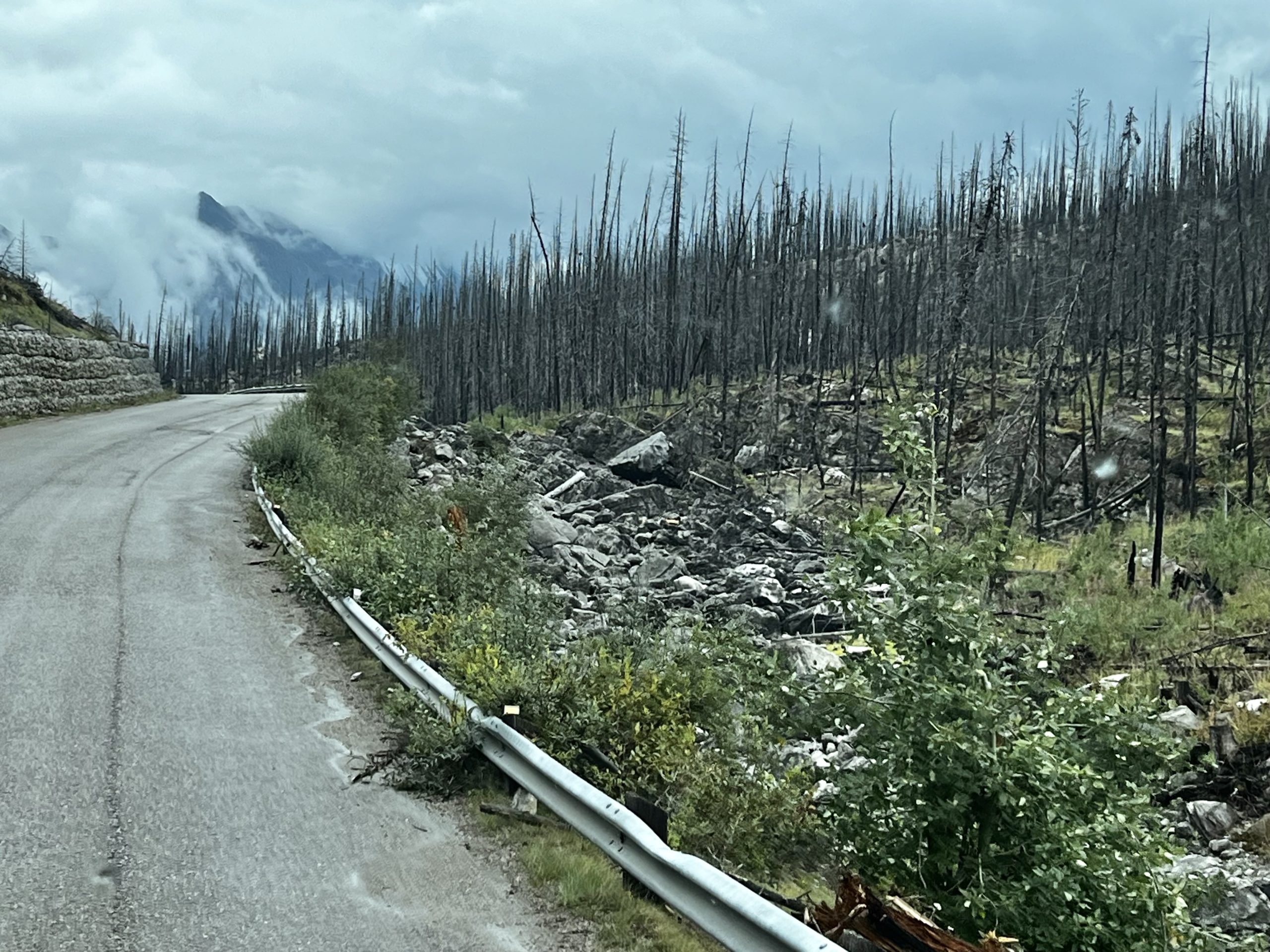
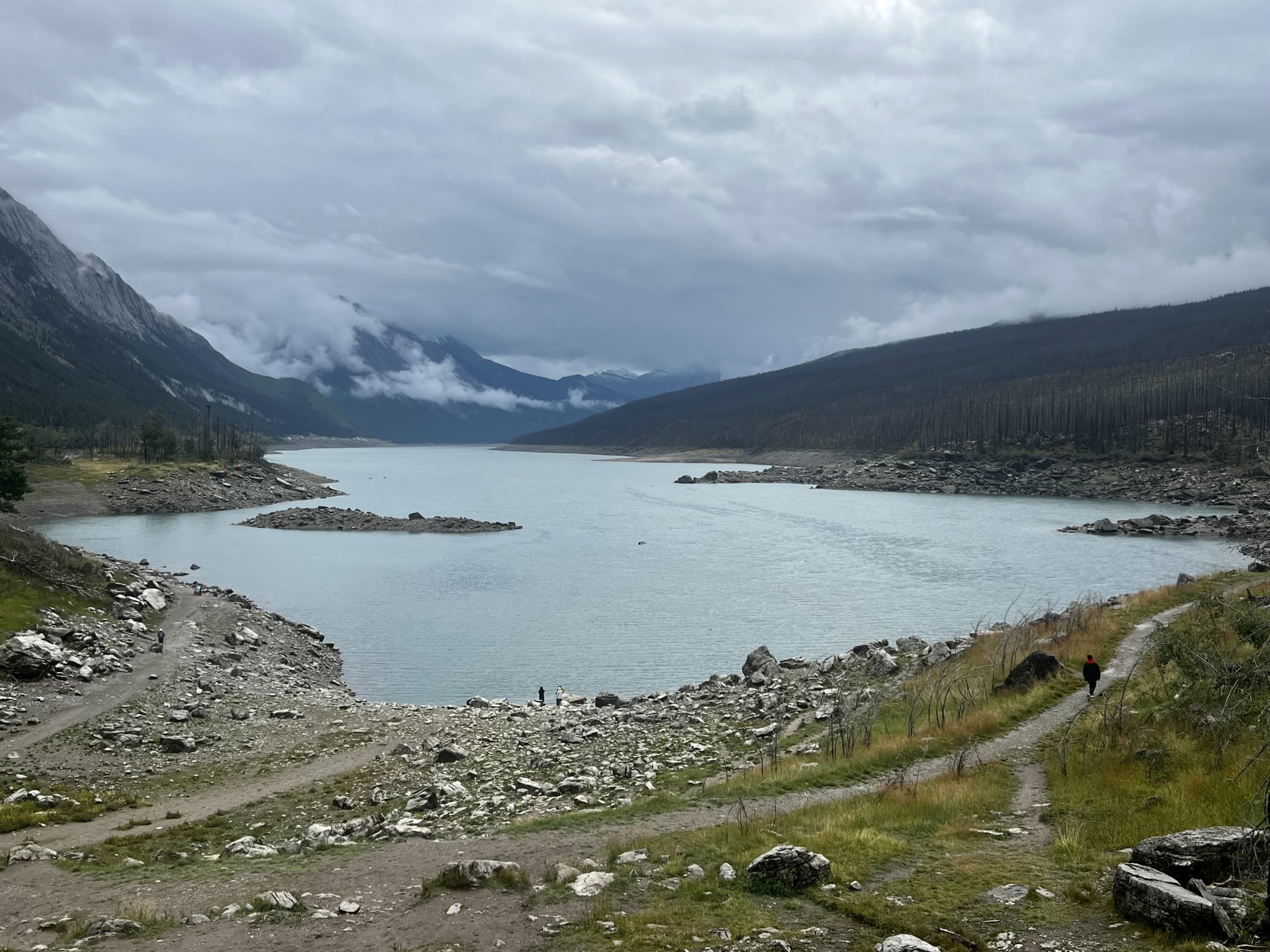
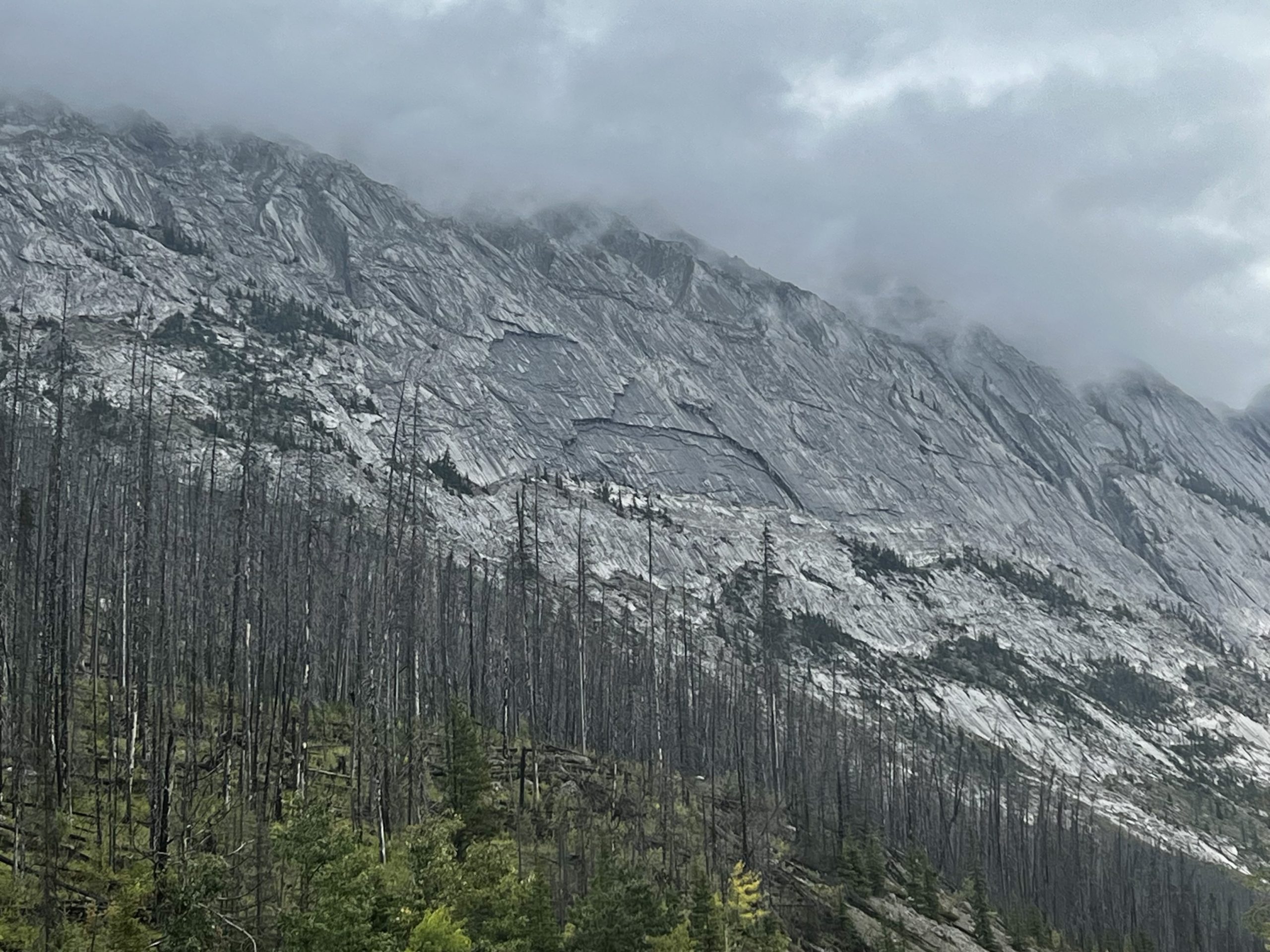
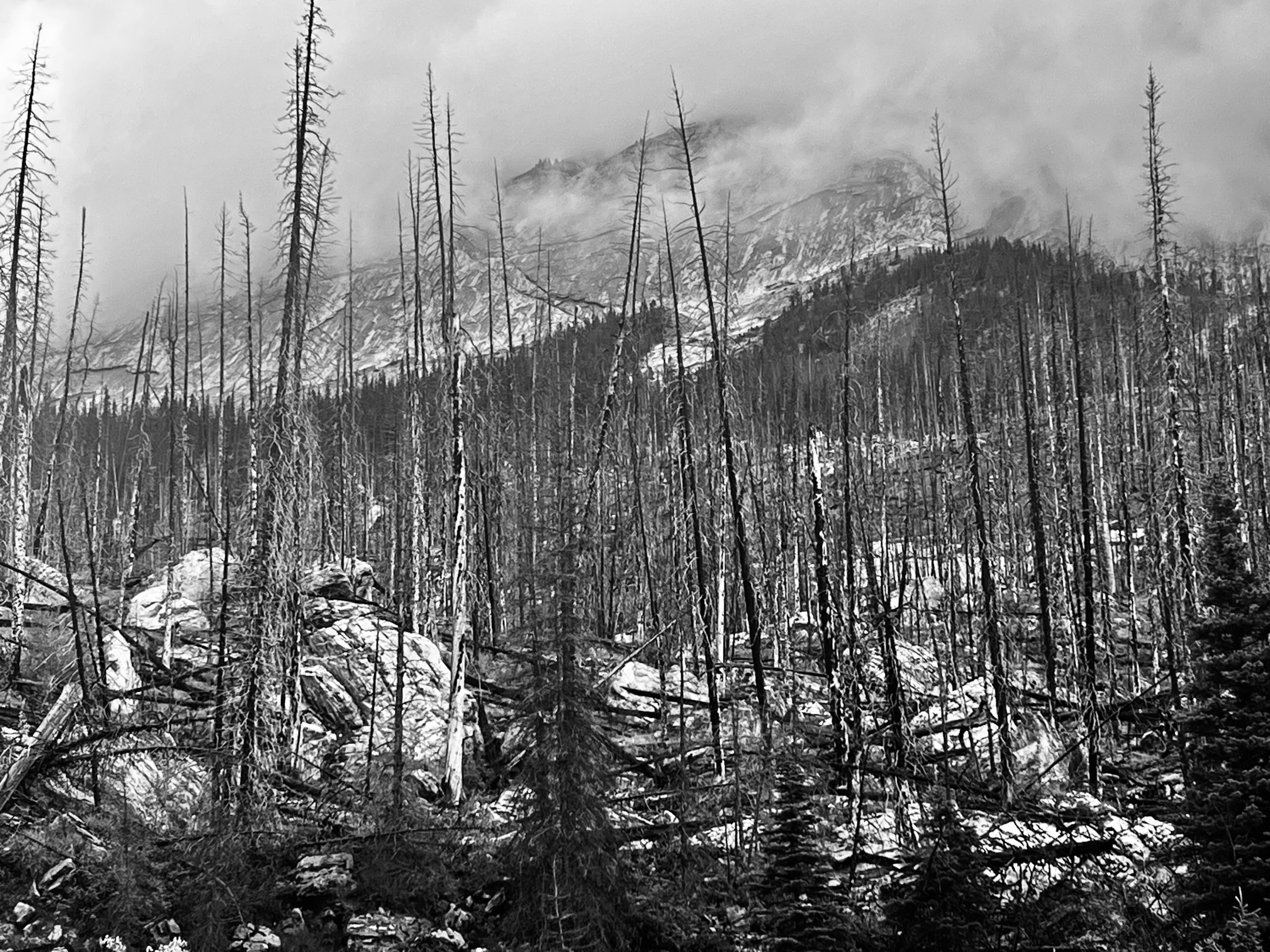
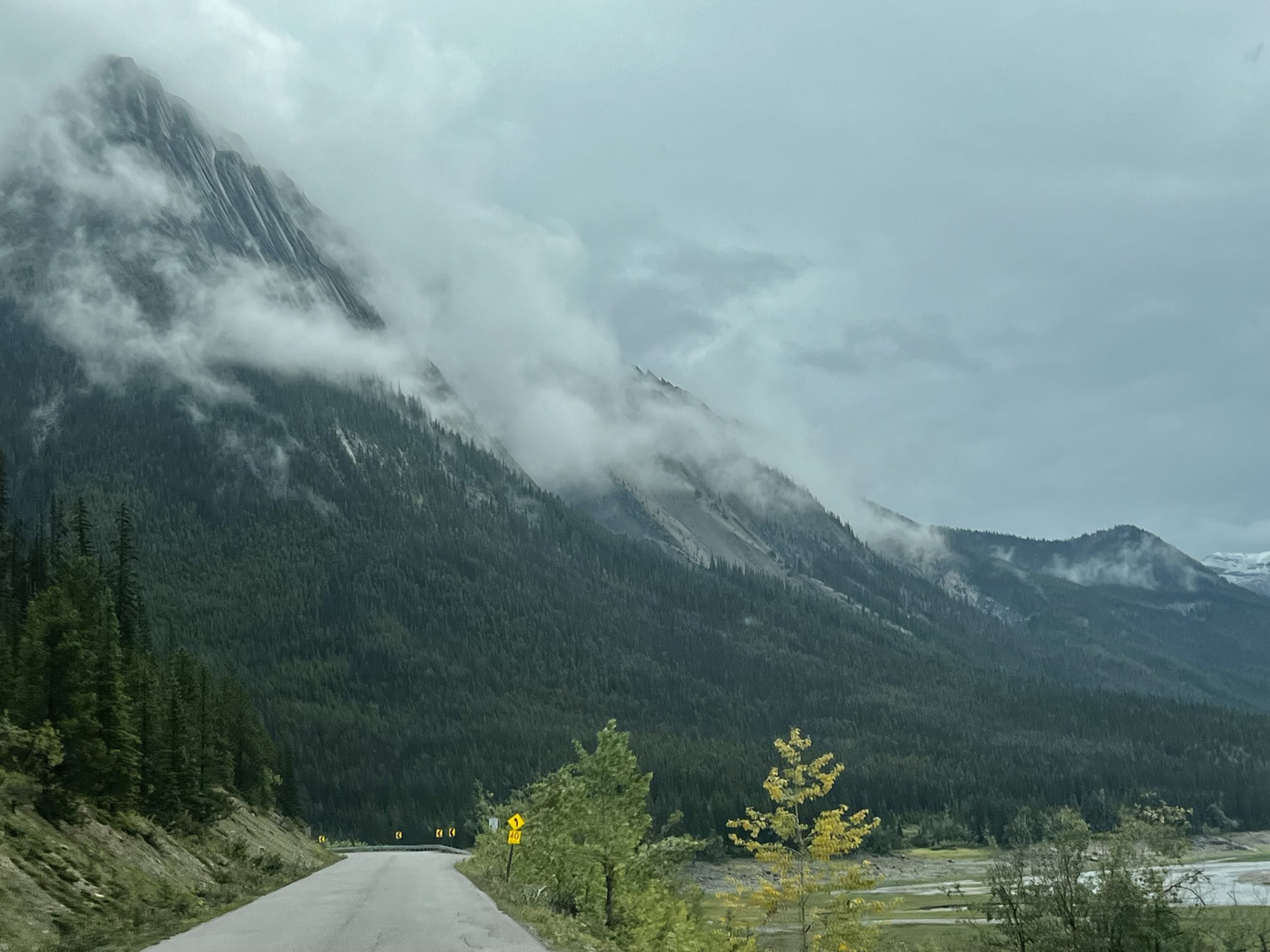
Moose!!!
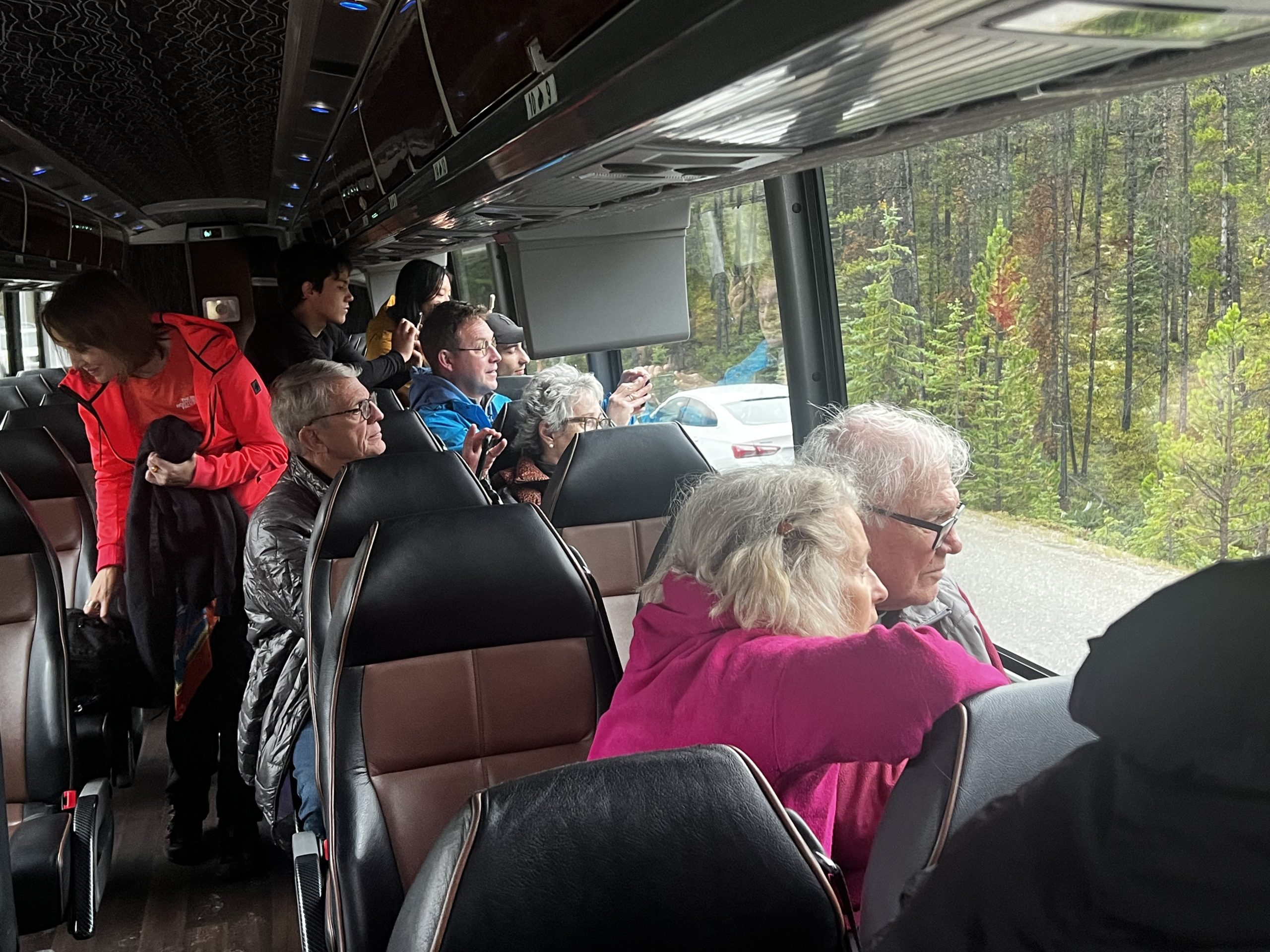
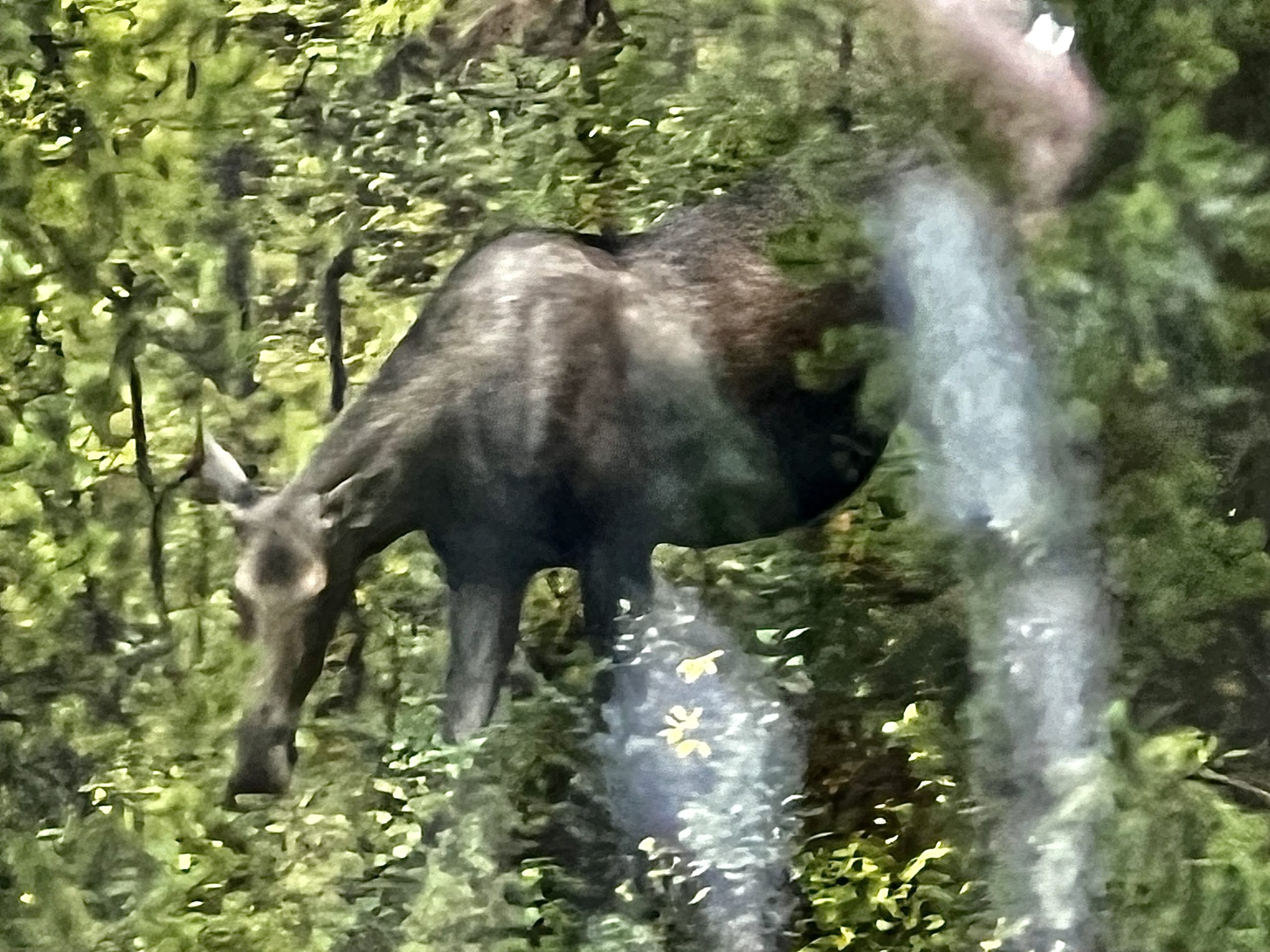
Lake Maligne
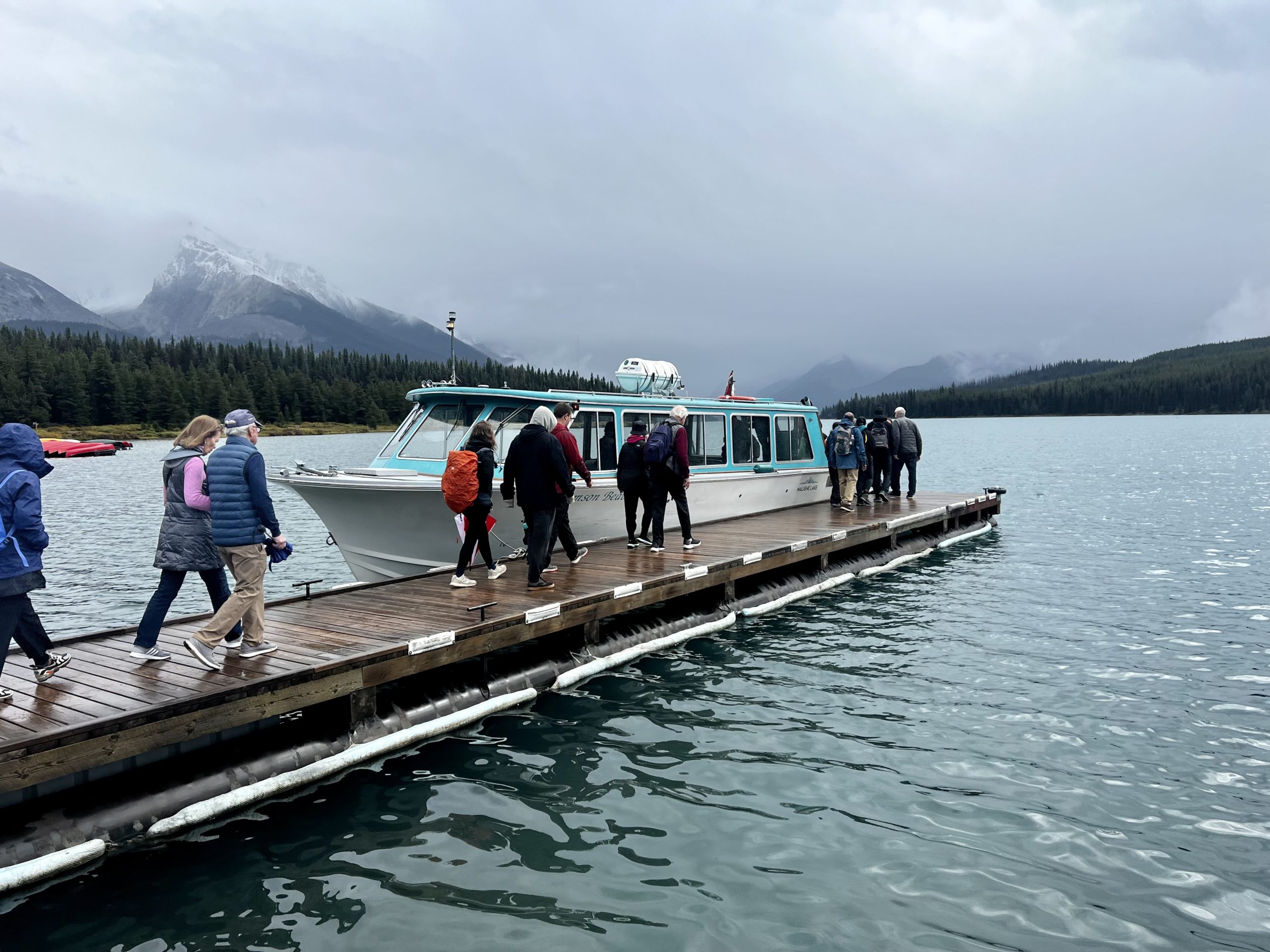
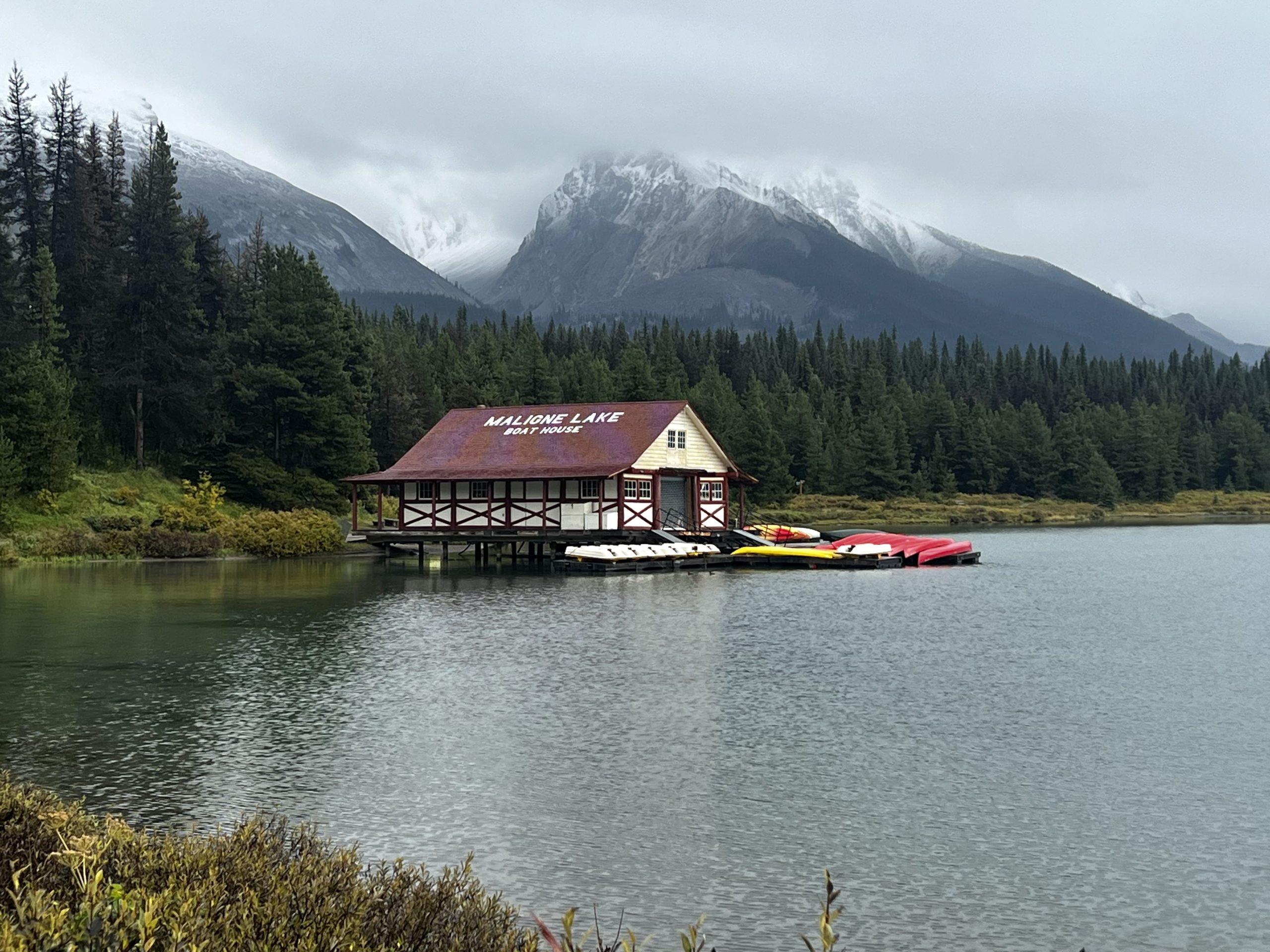
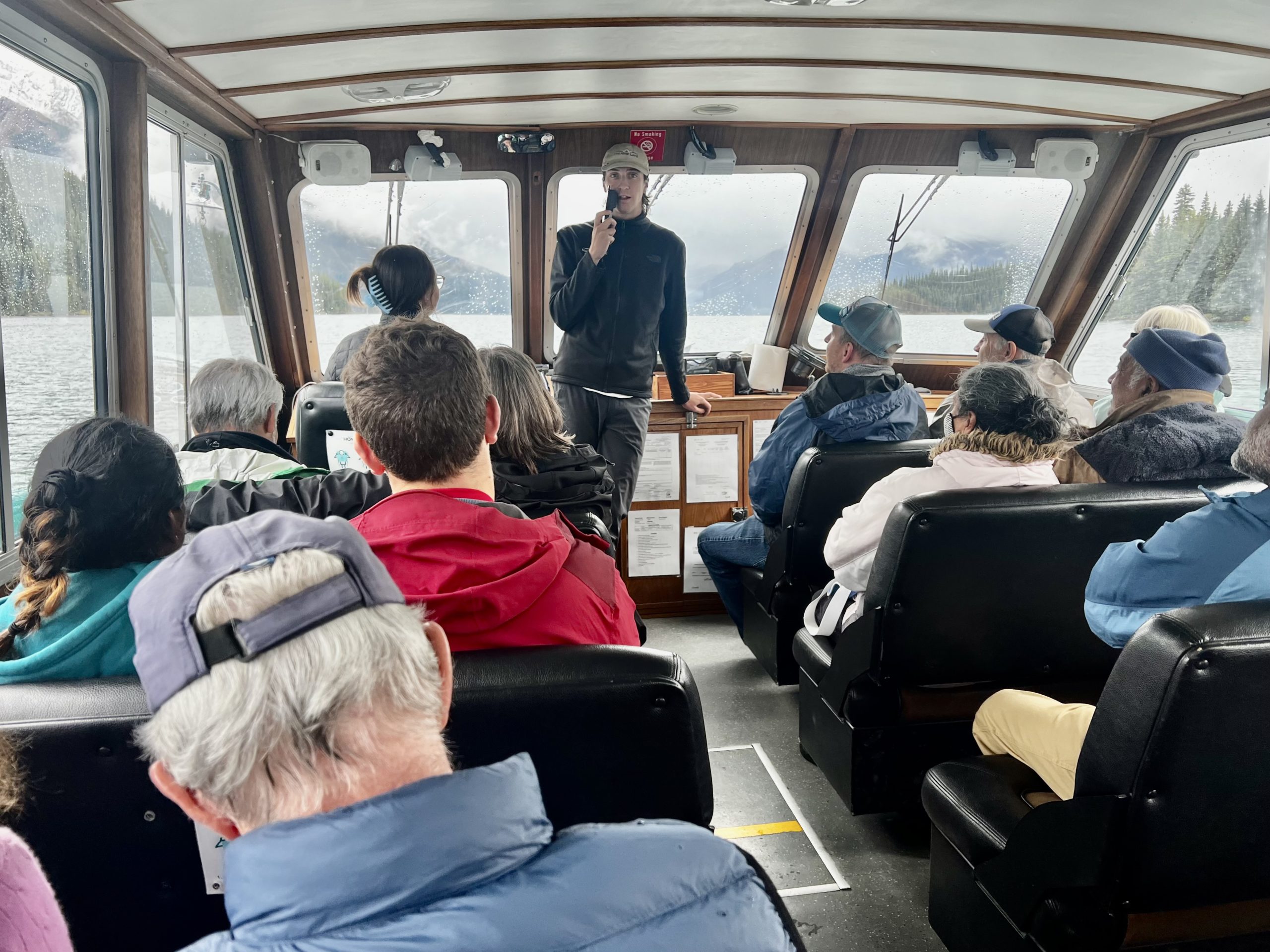
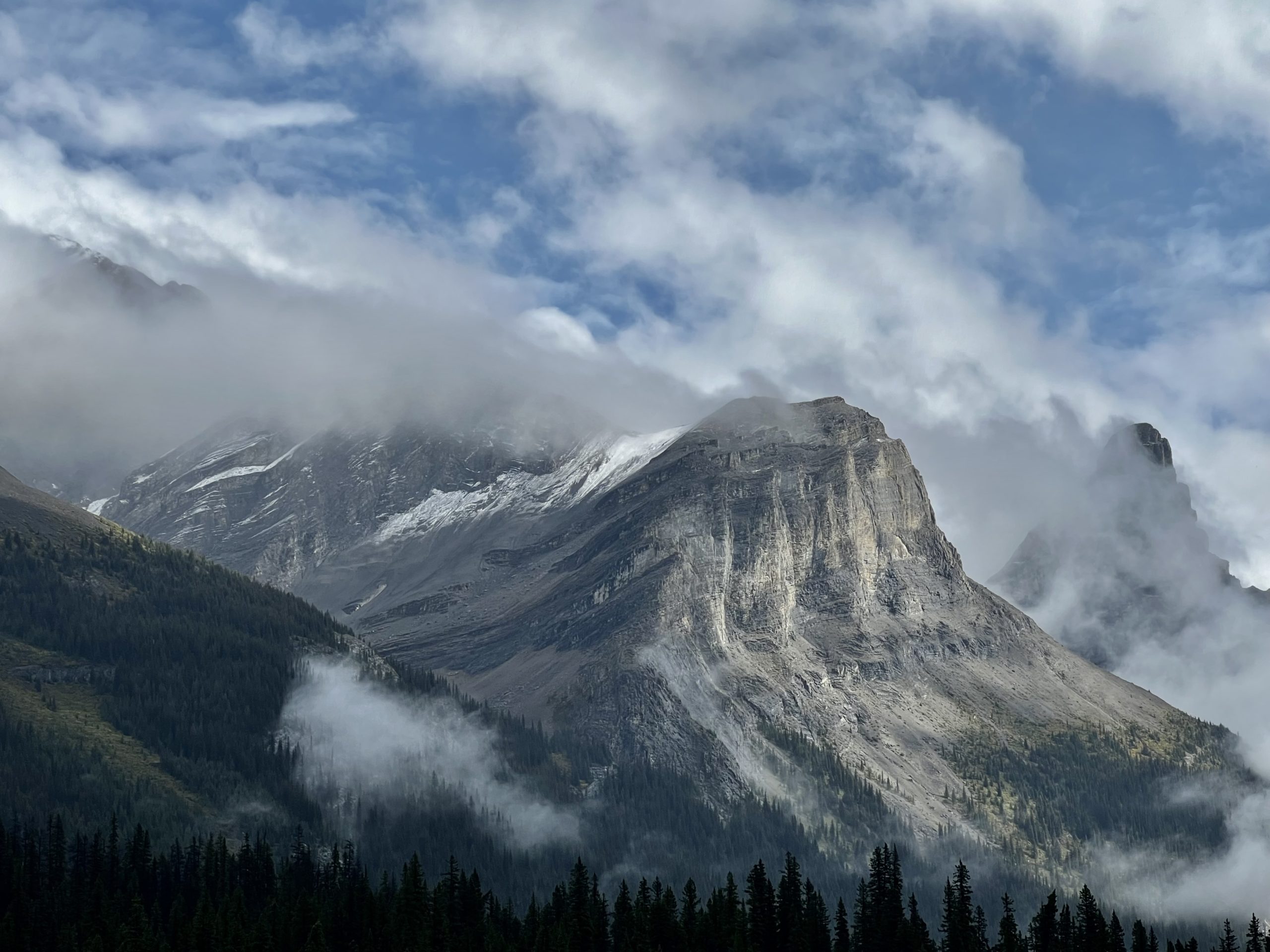
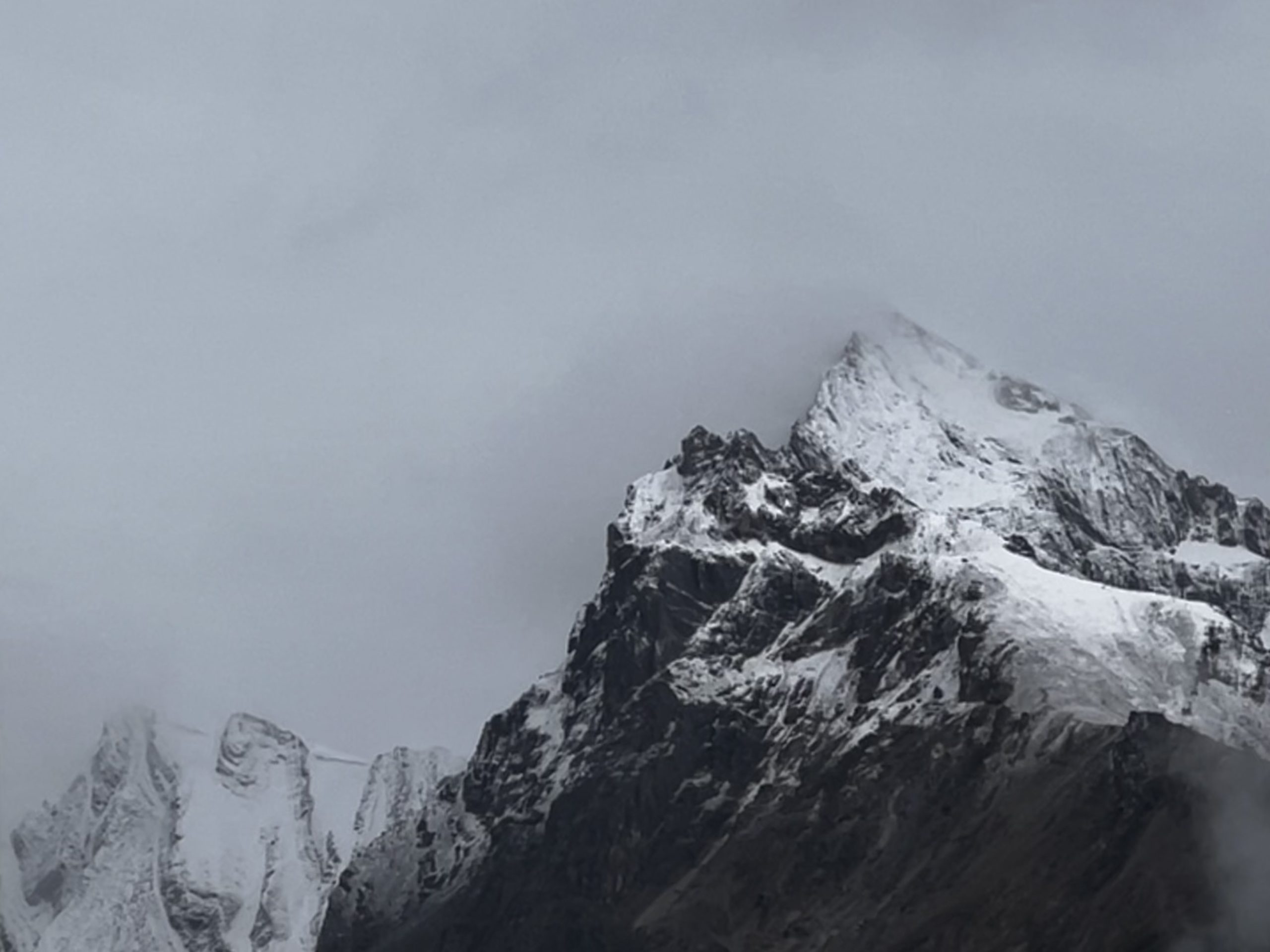
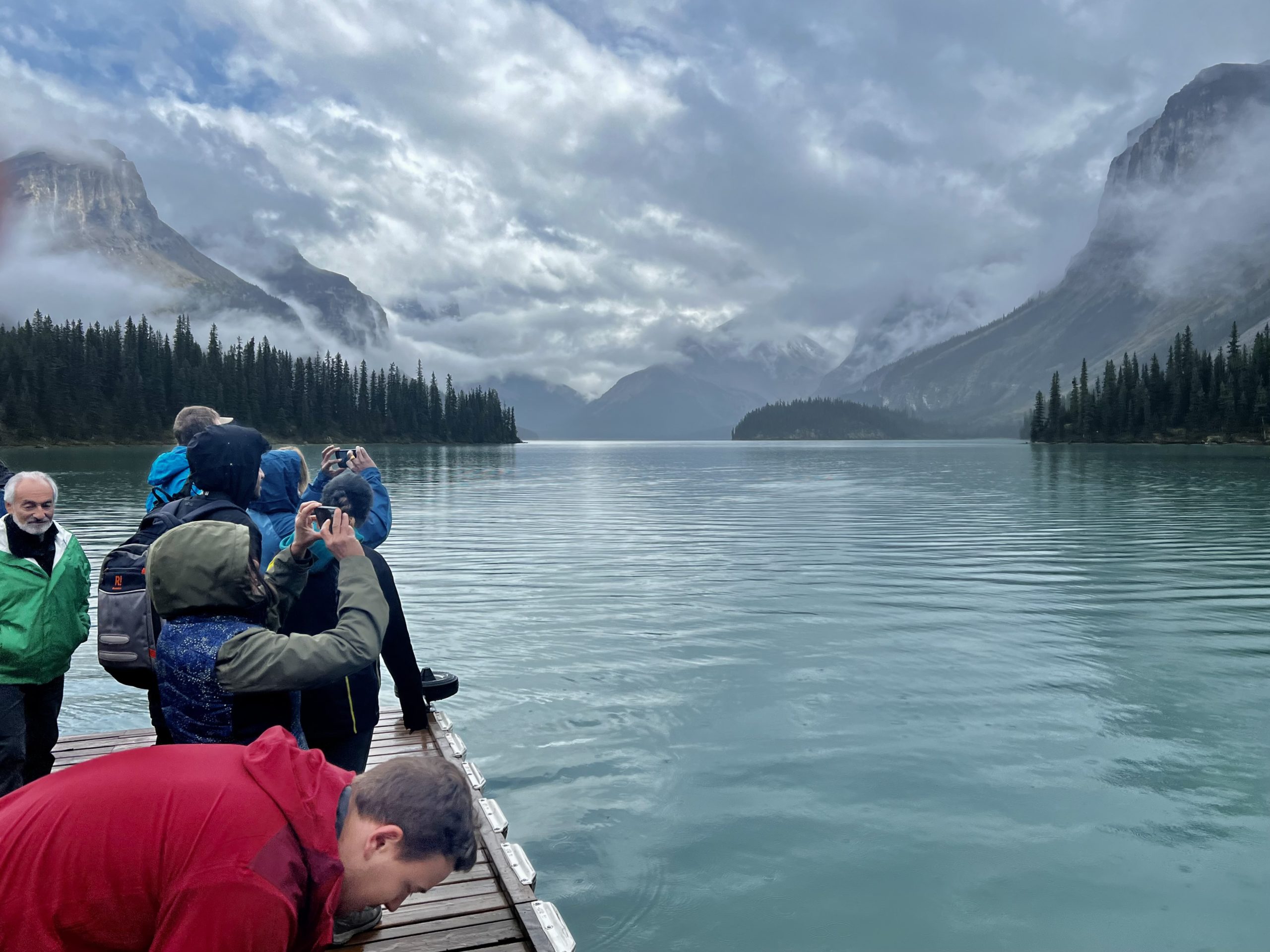
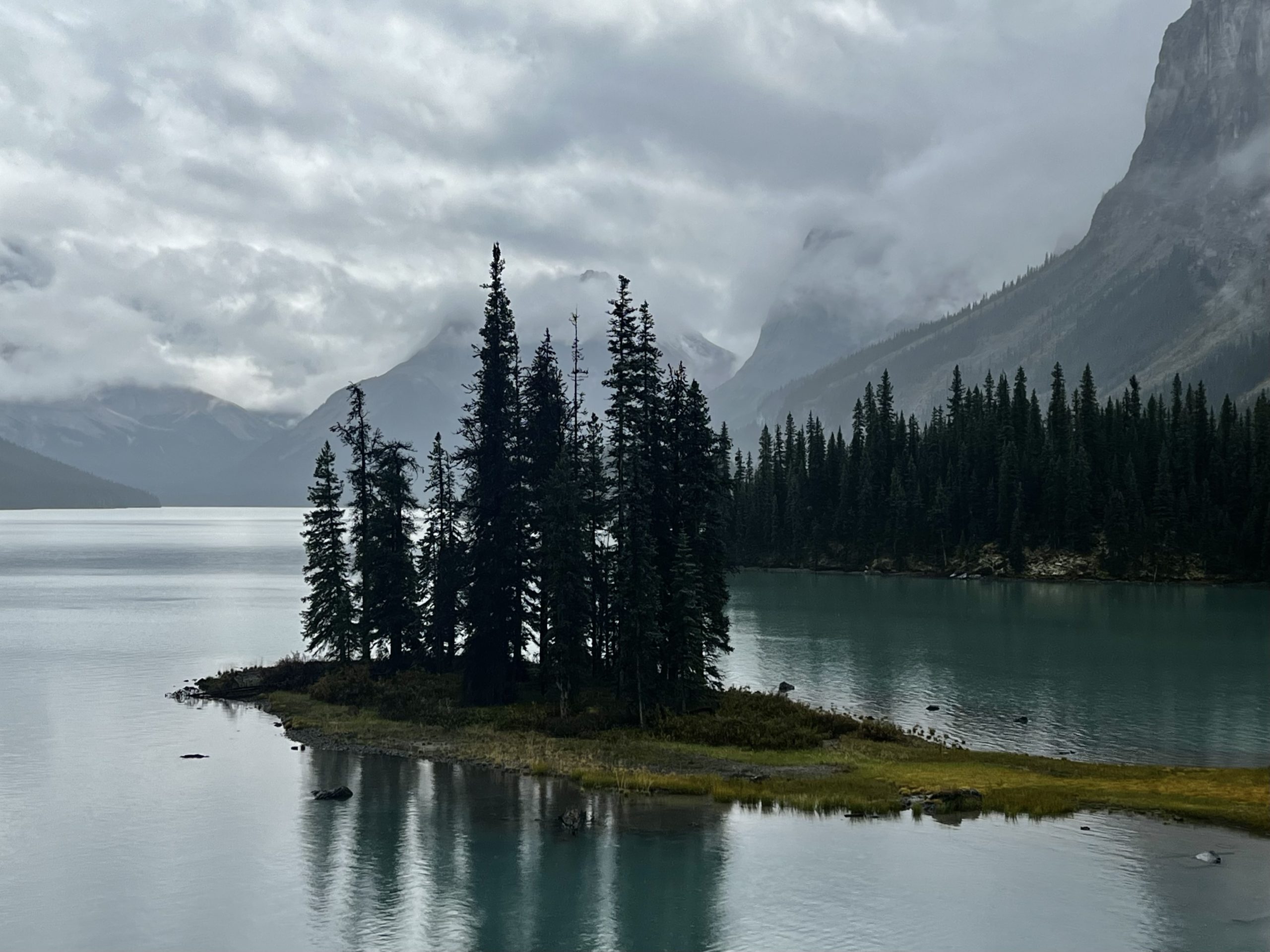
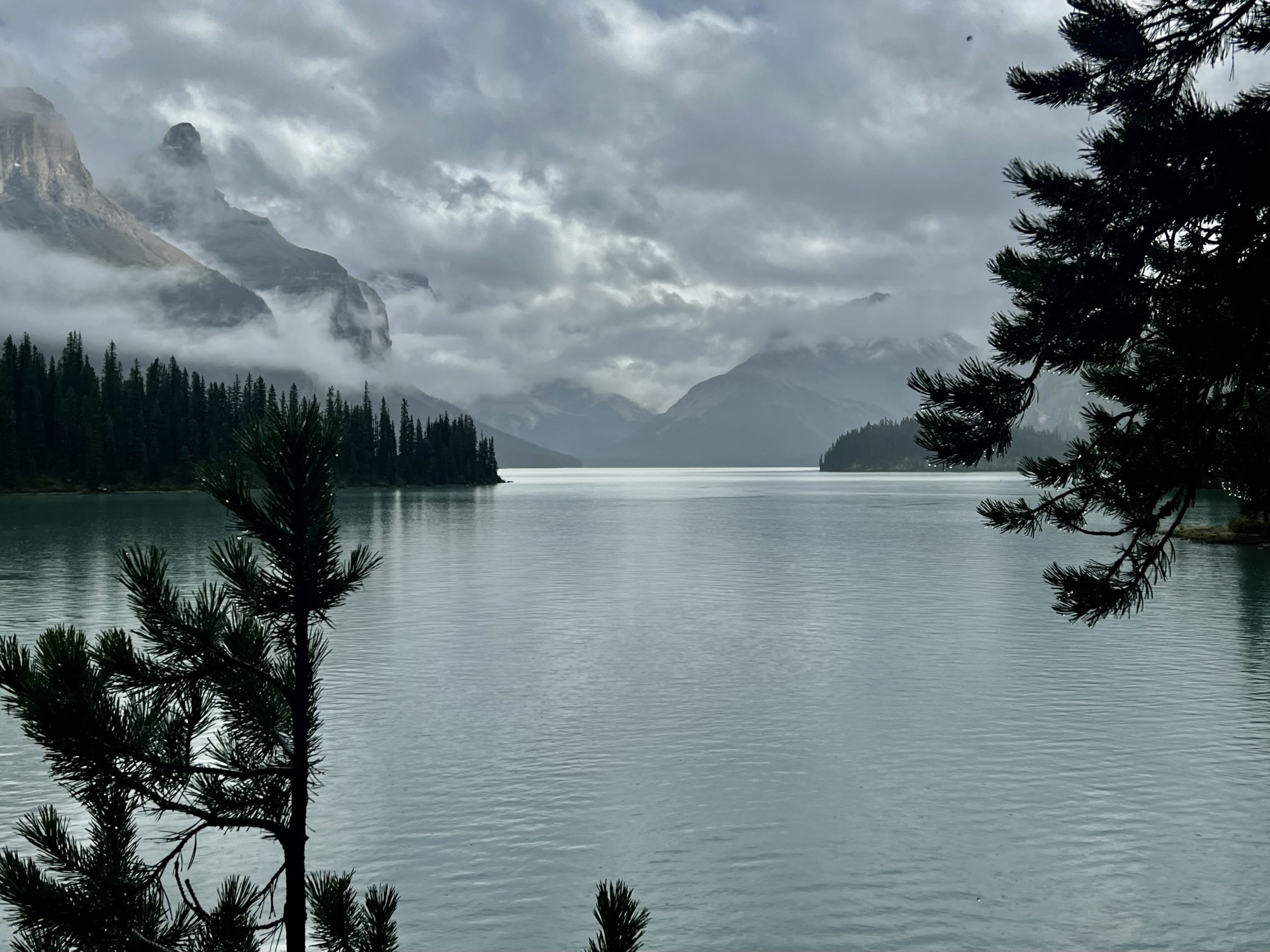
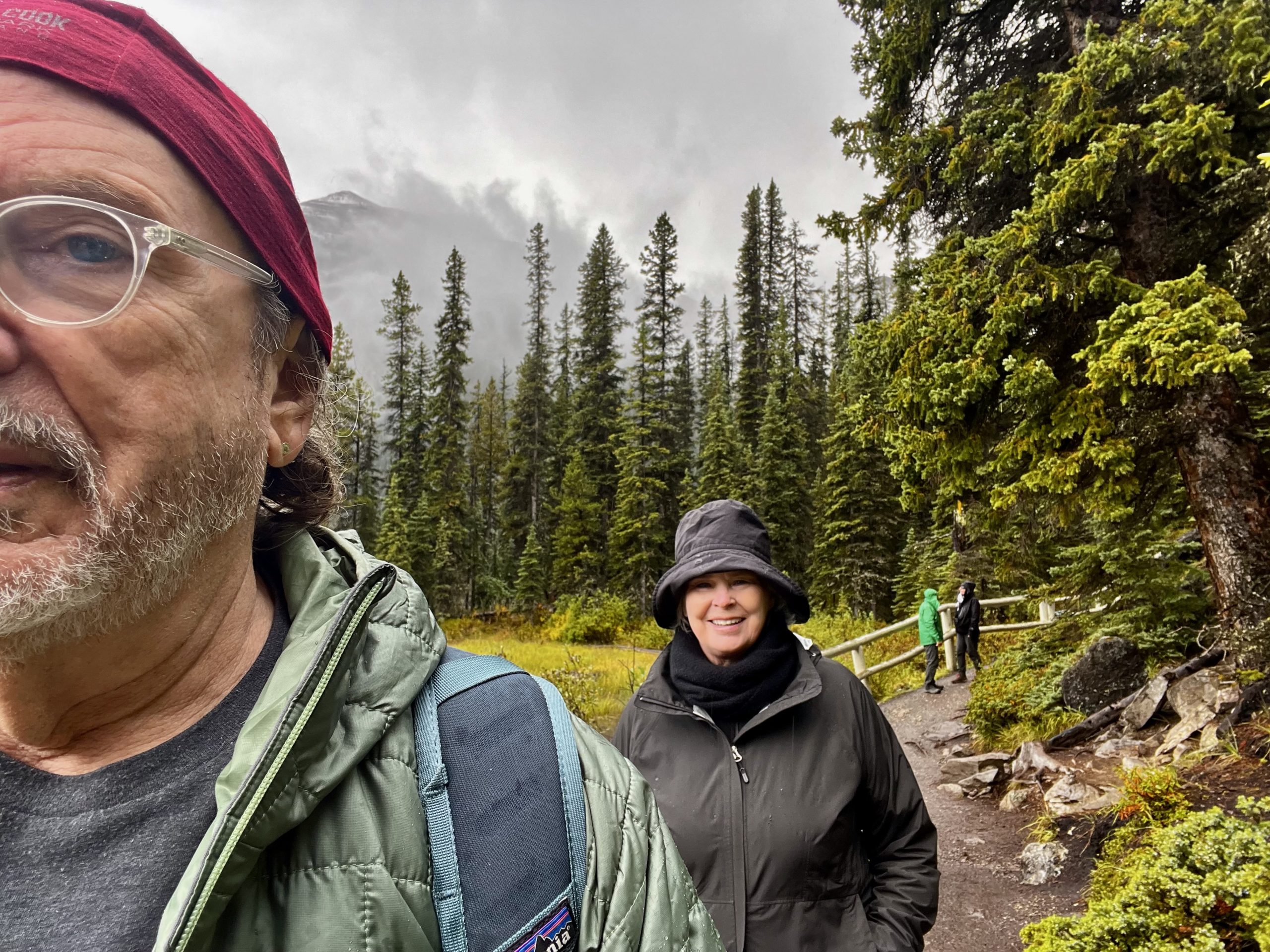
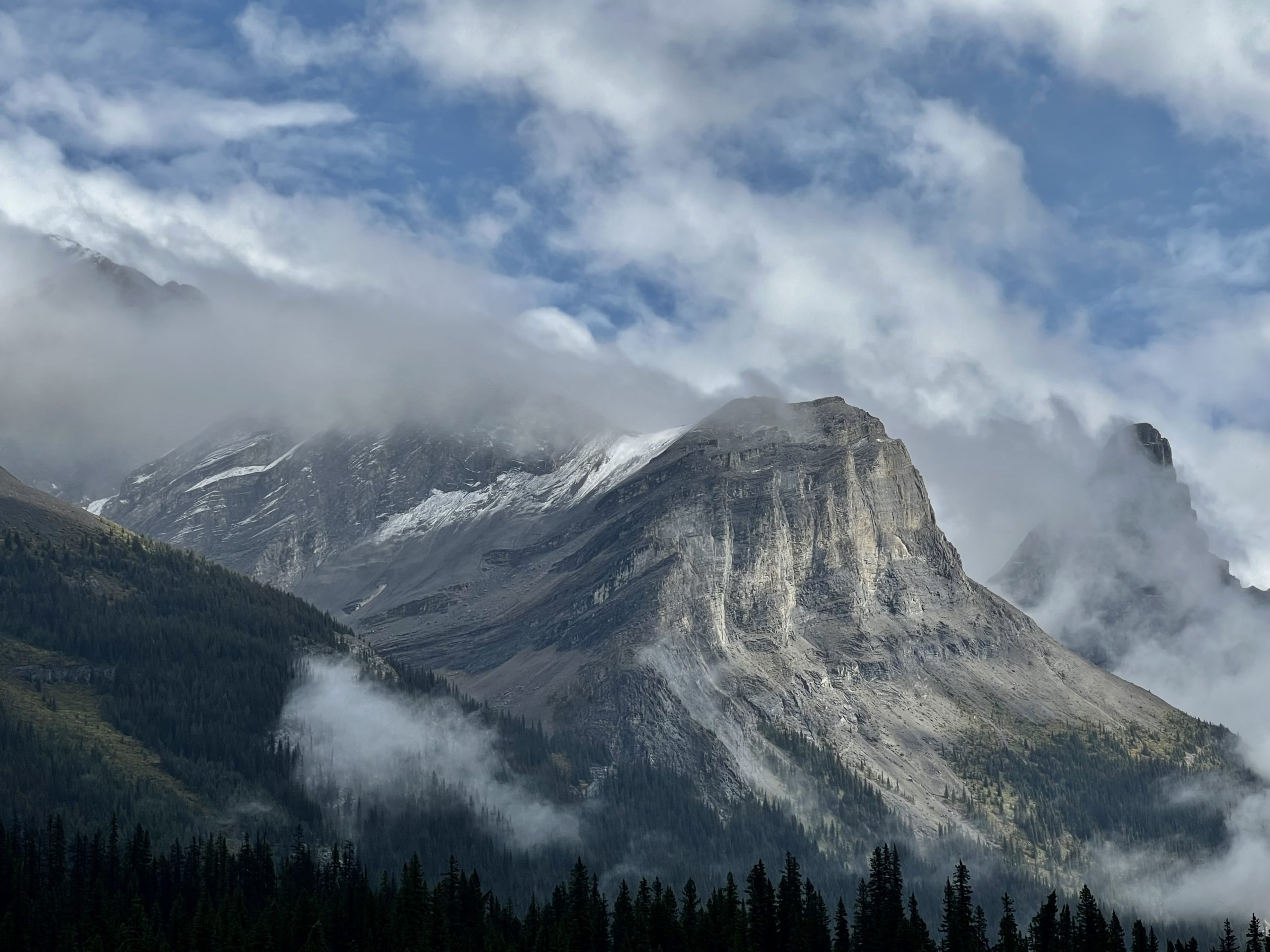
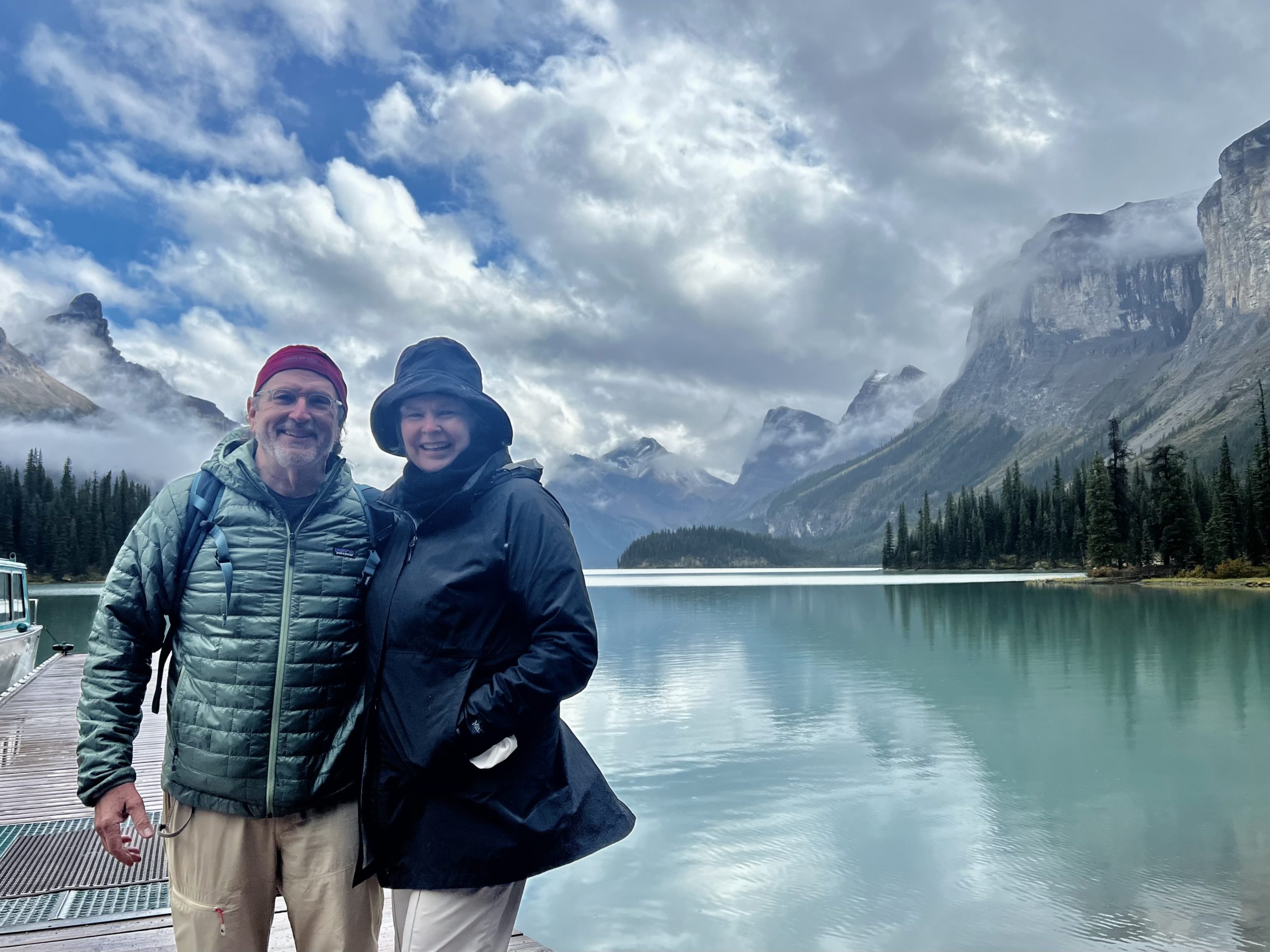
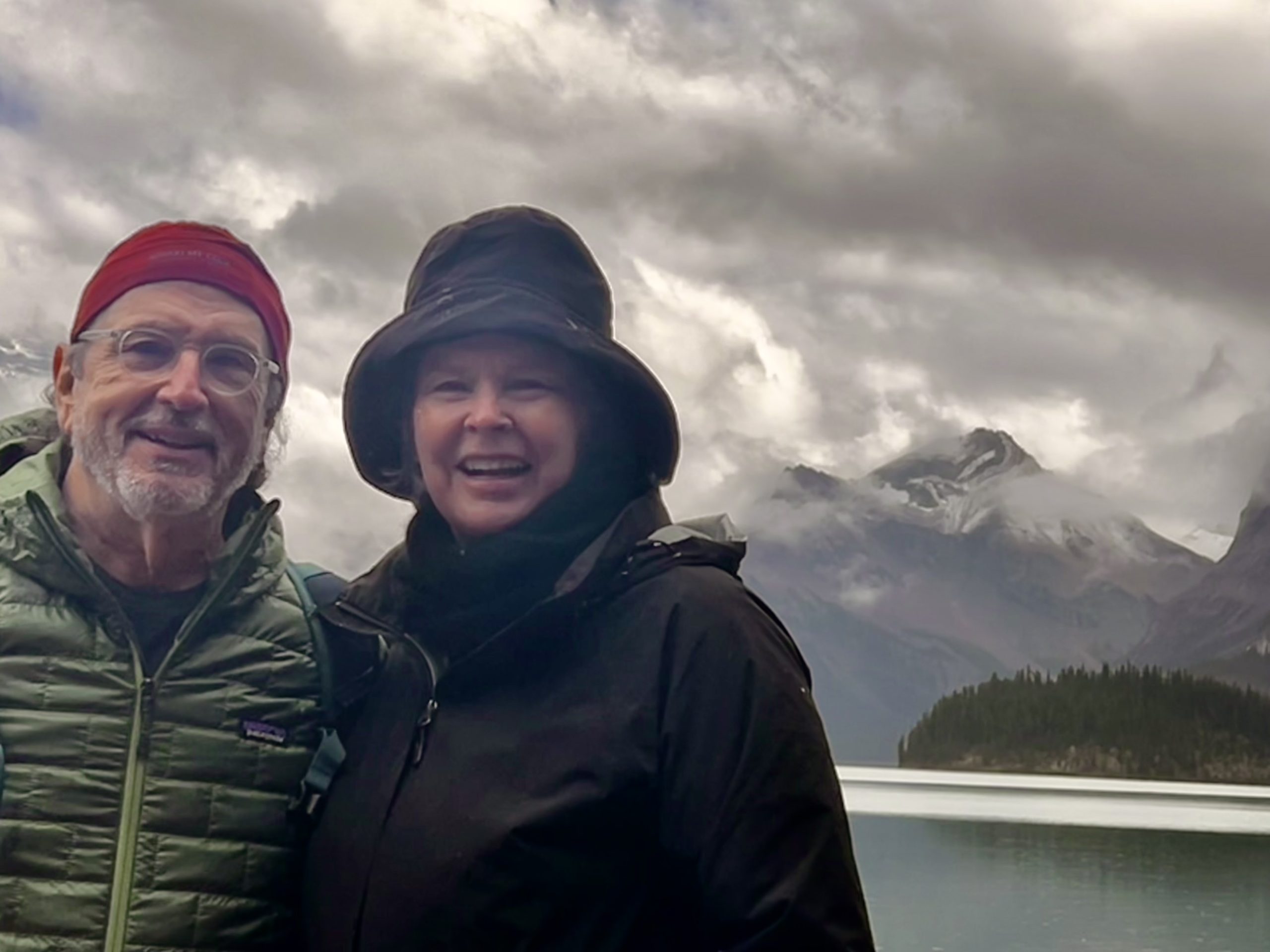
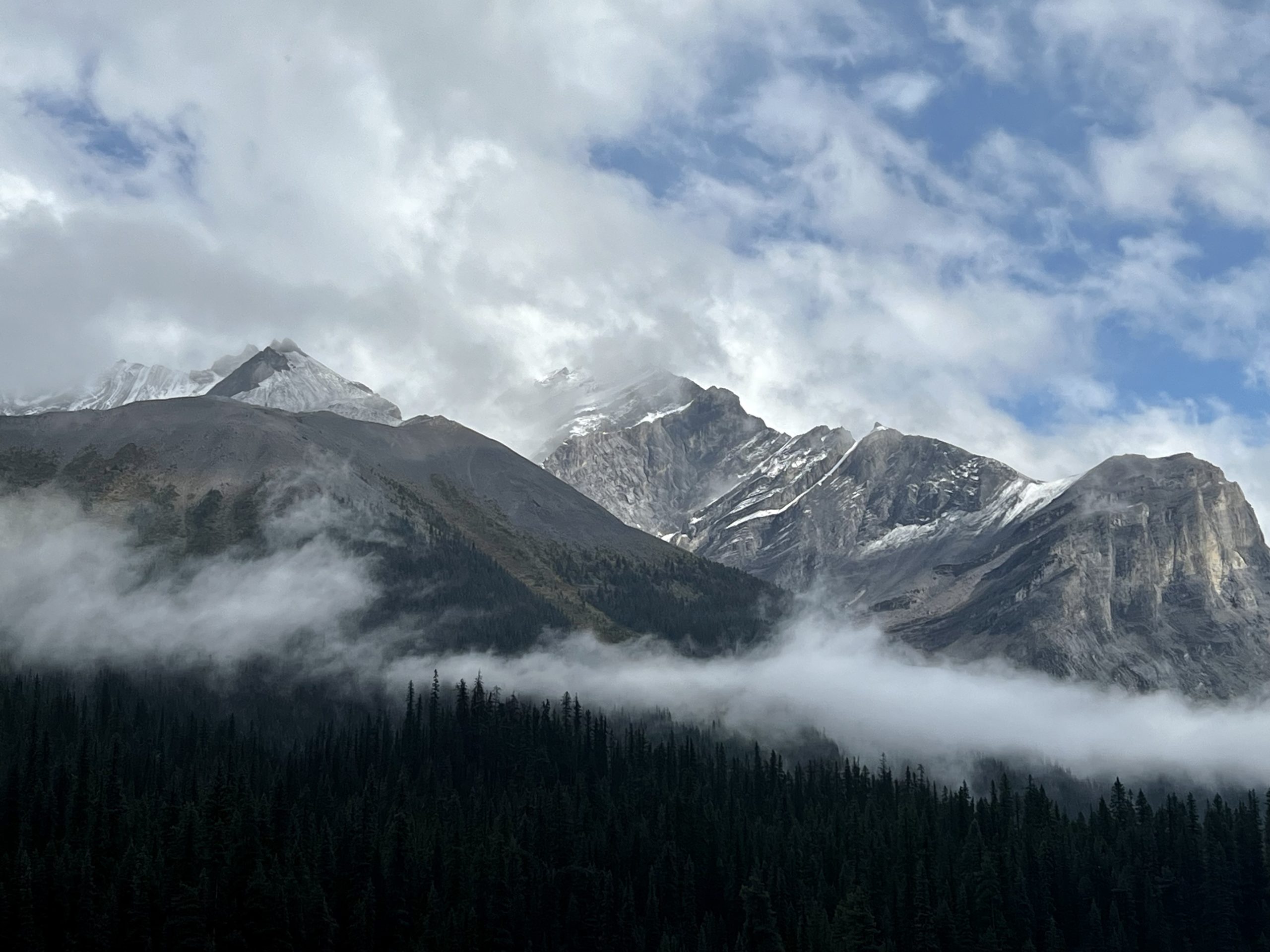
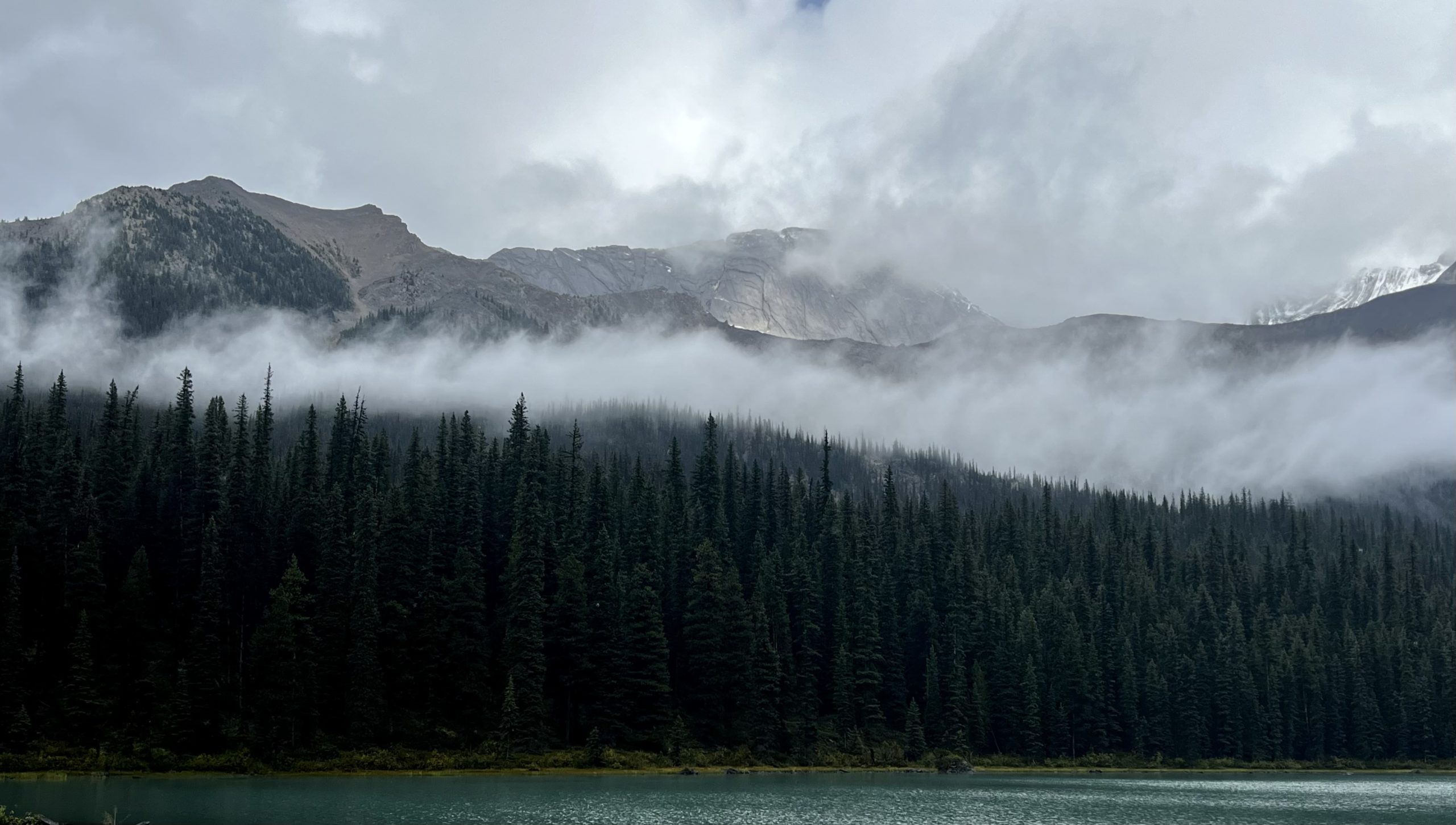
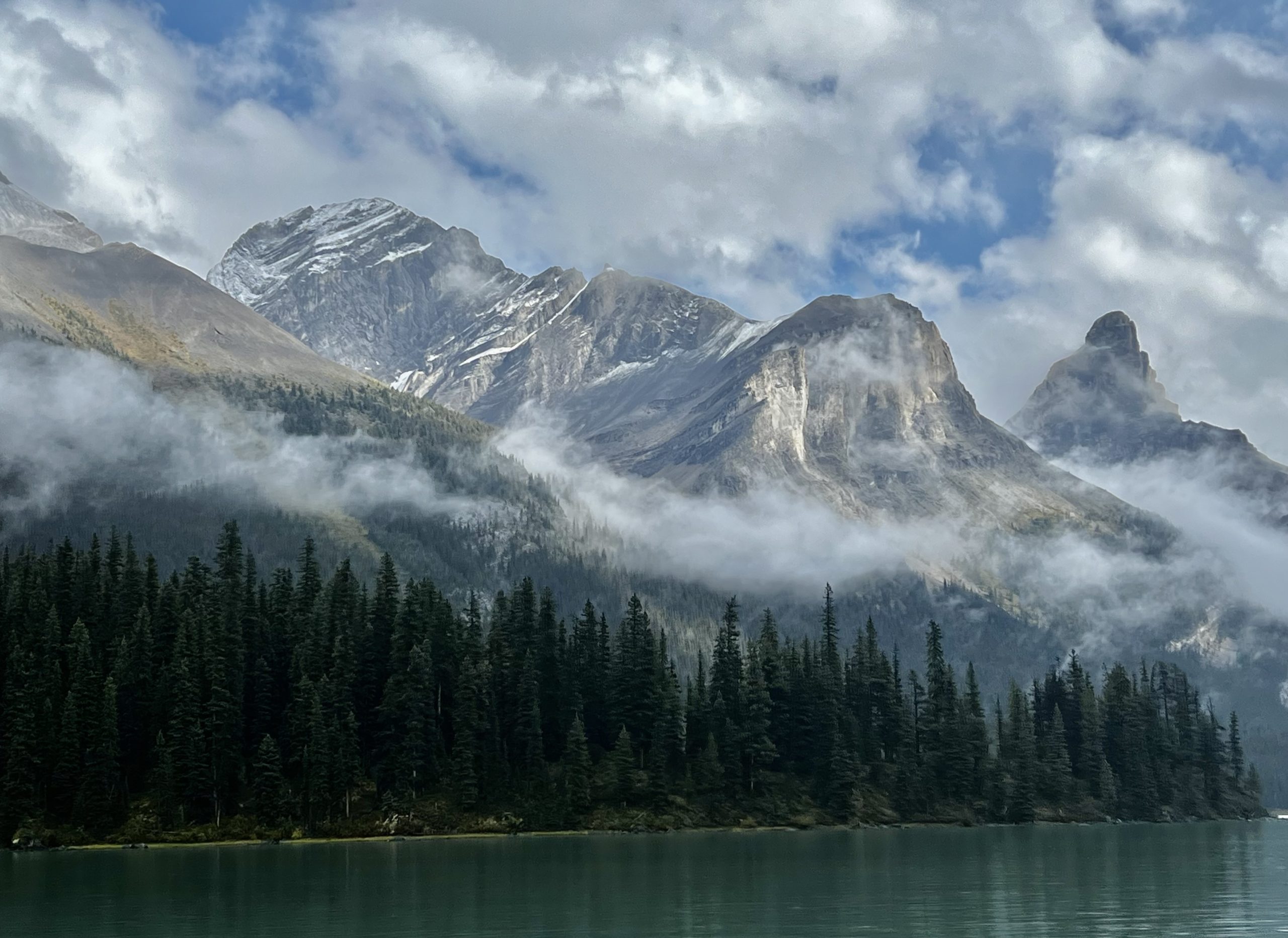
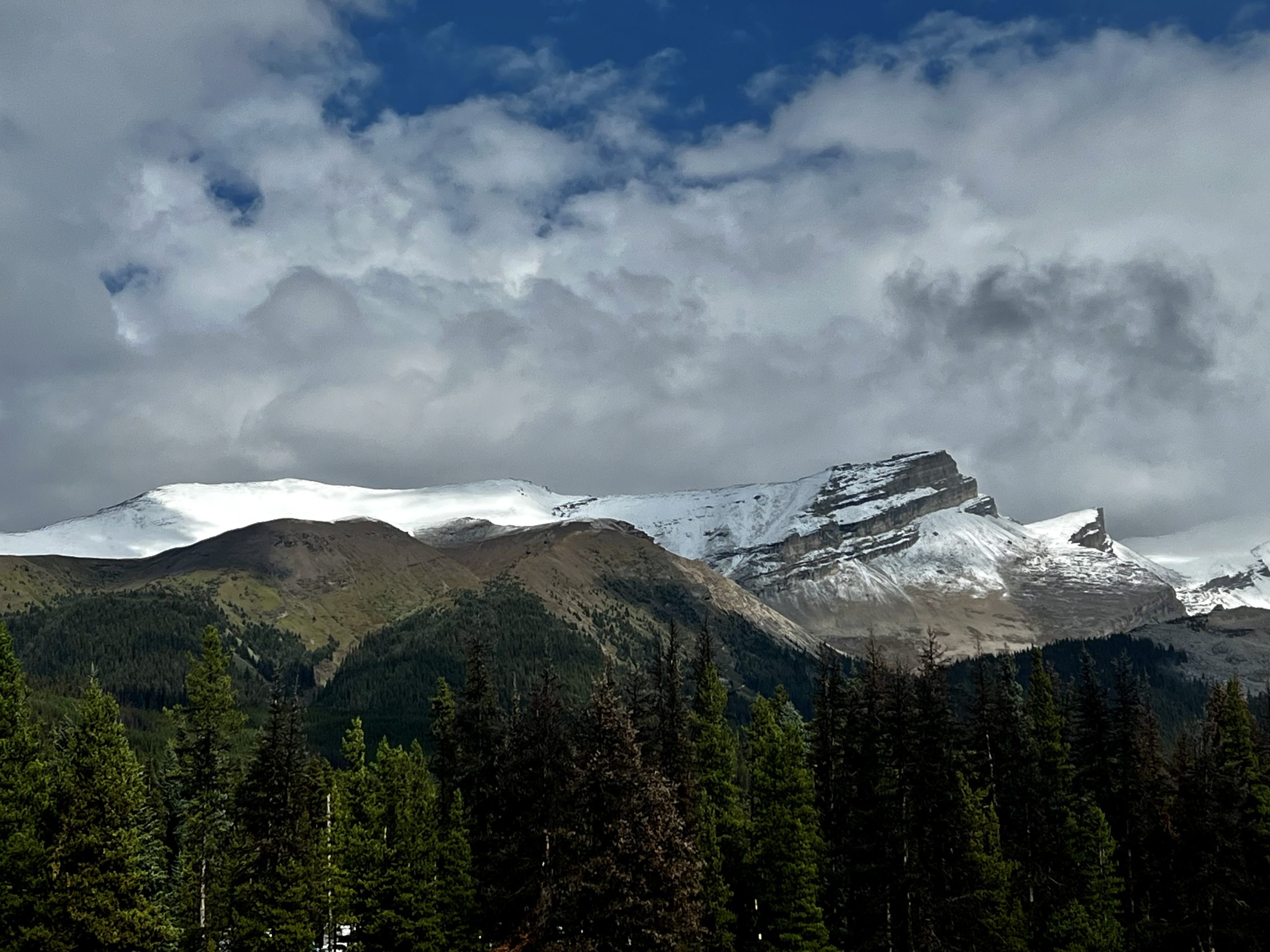
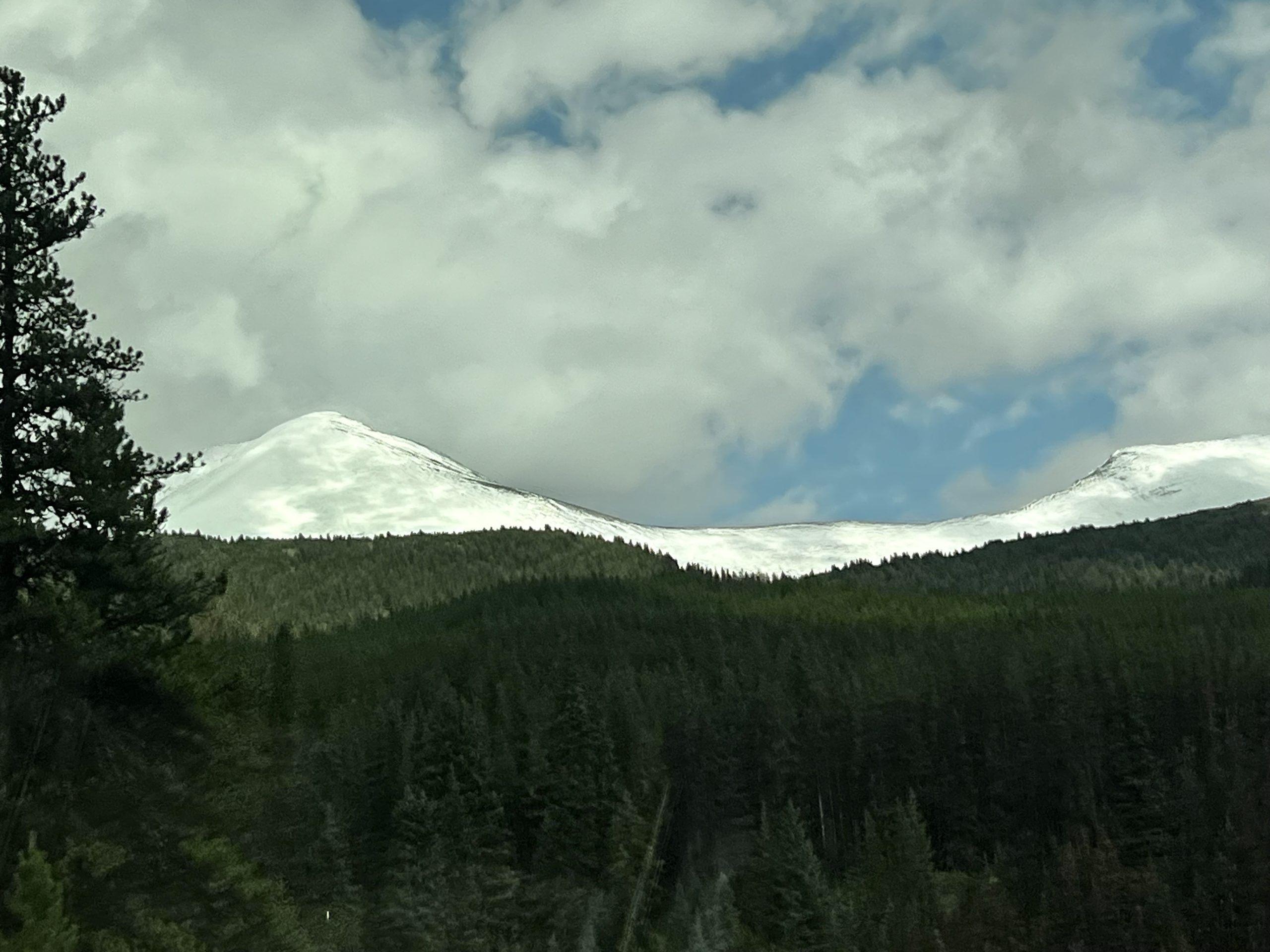
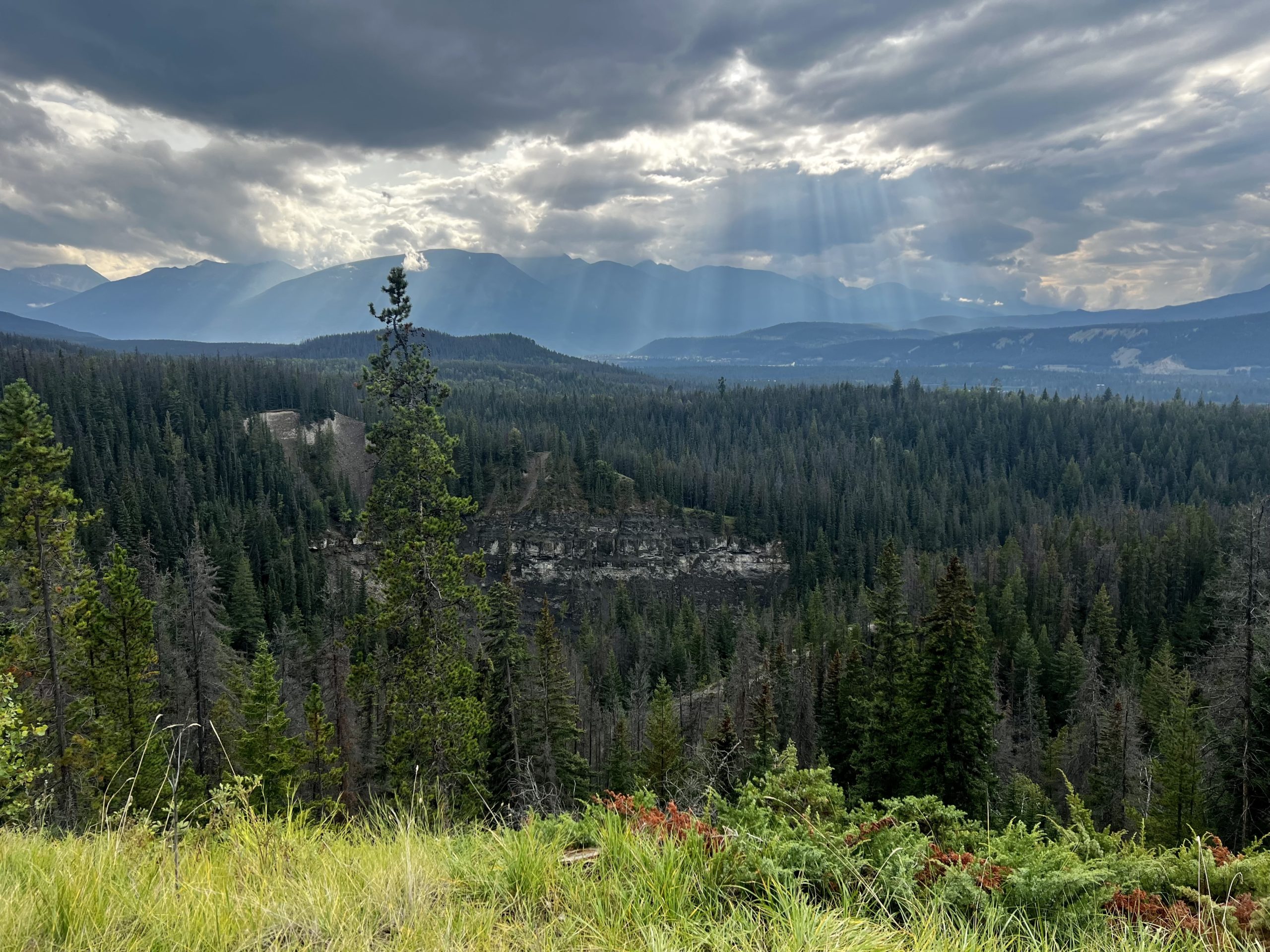
Strolling Jasper
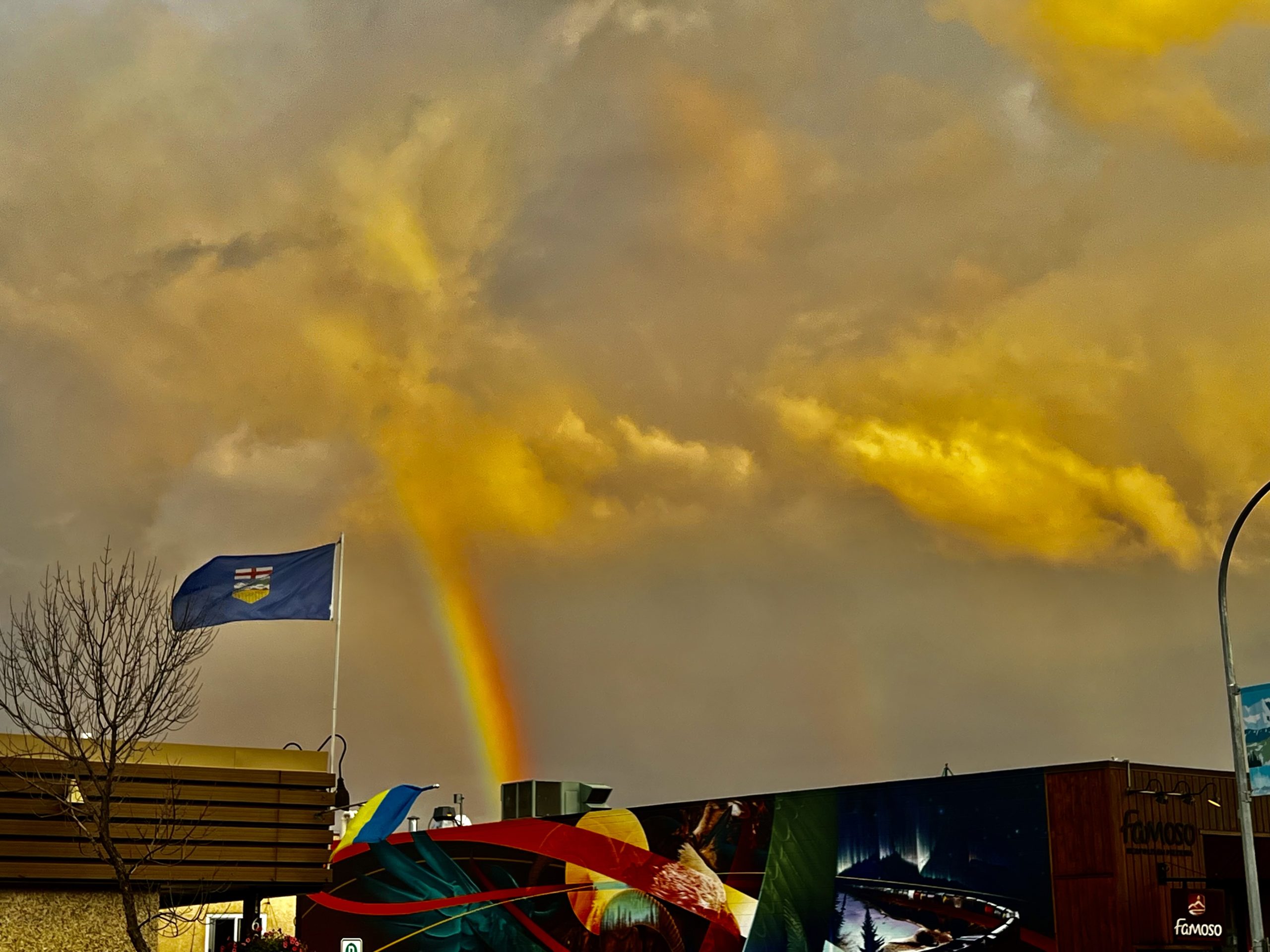
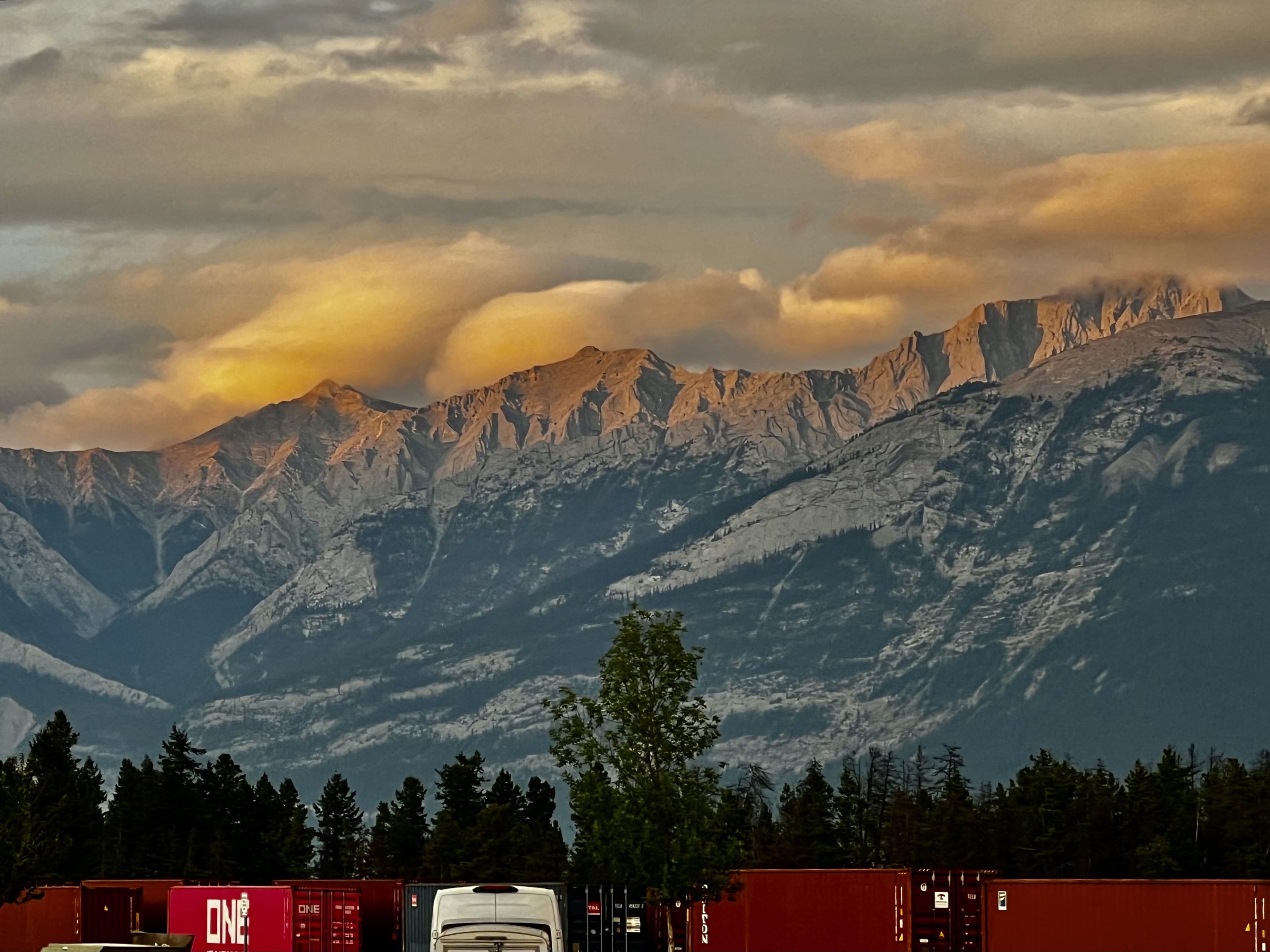
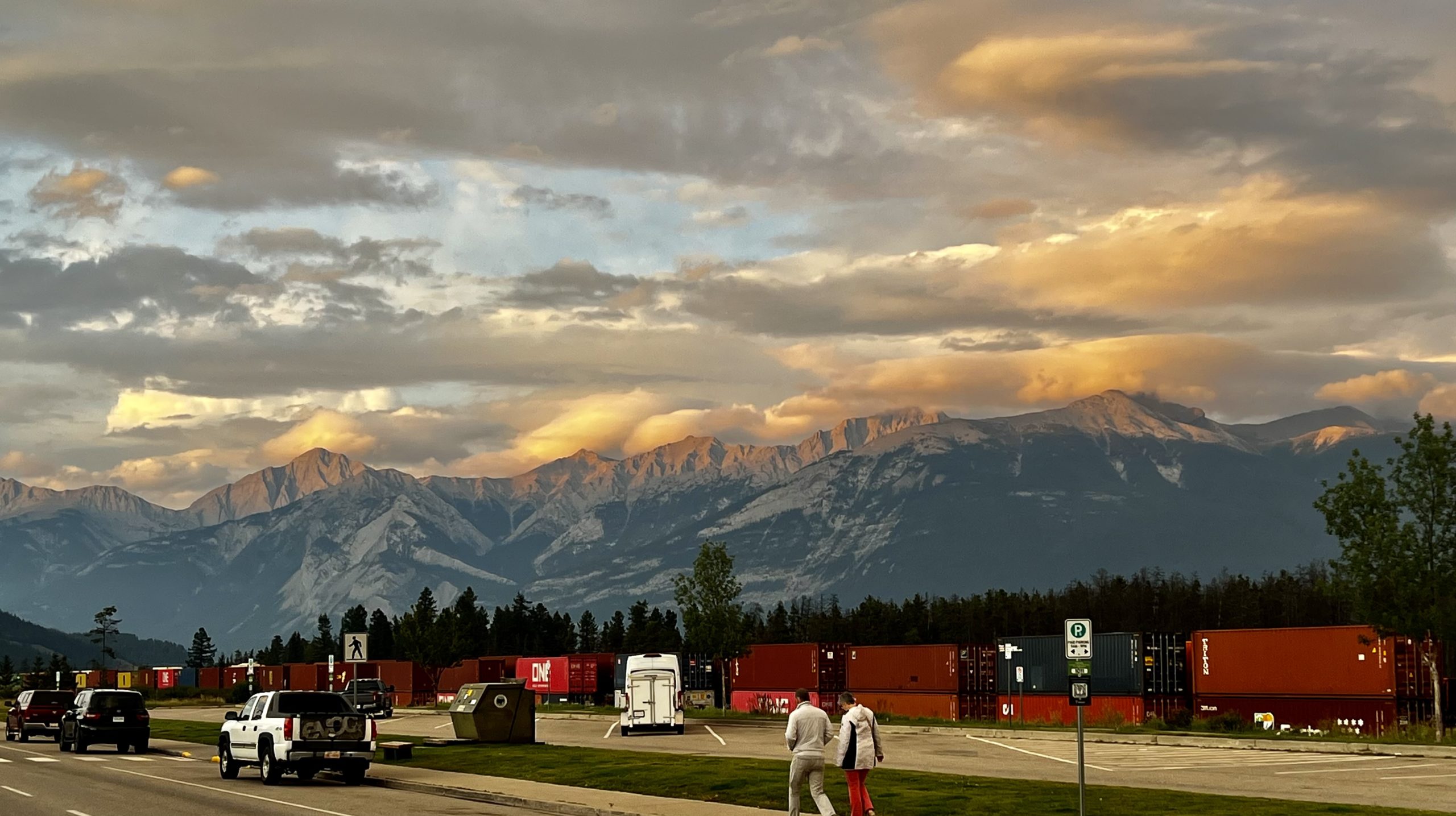
Eats
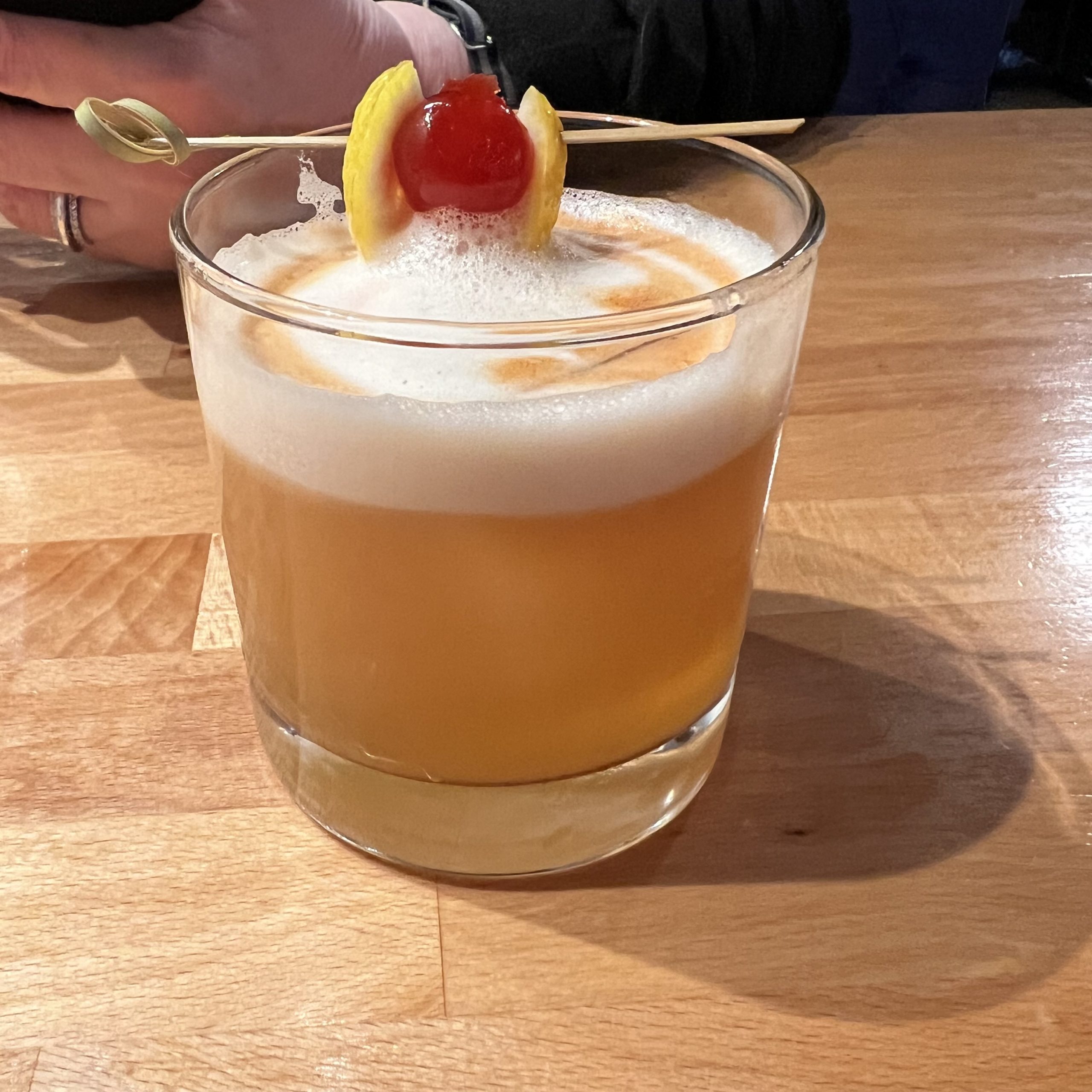
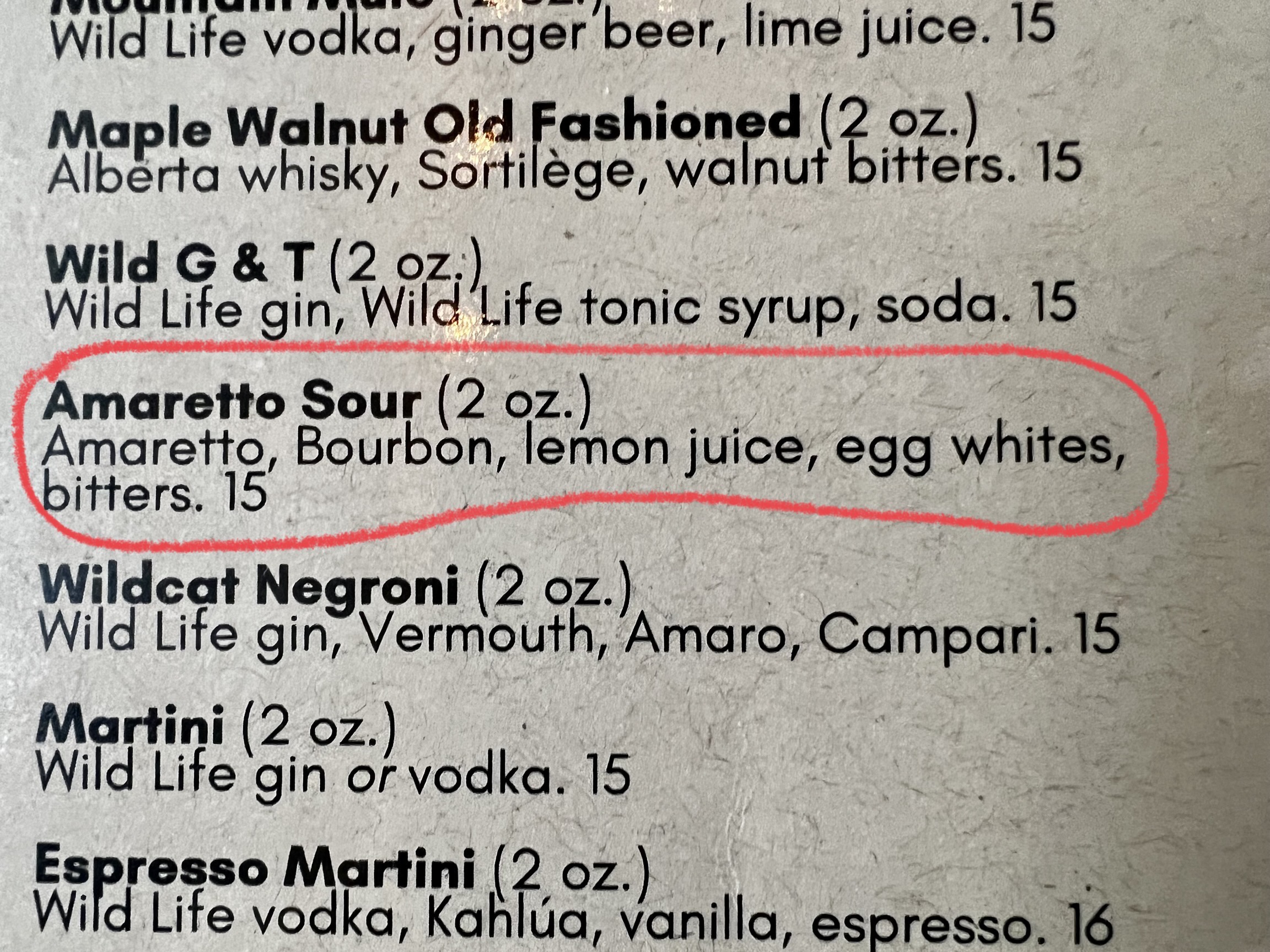
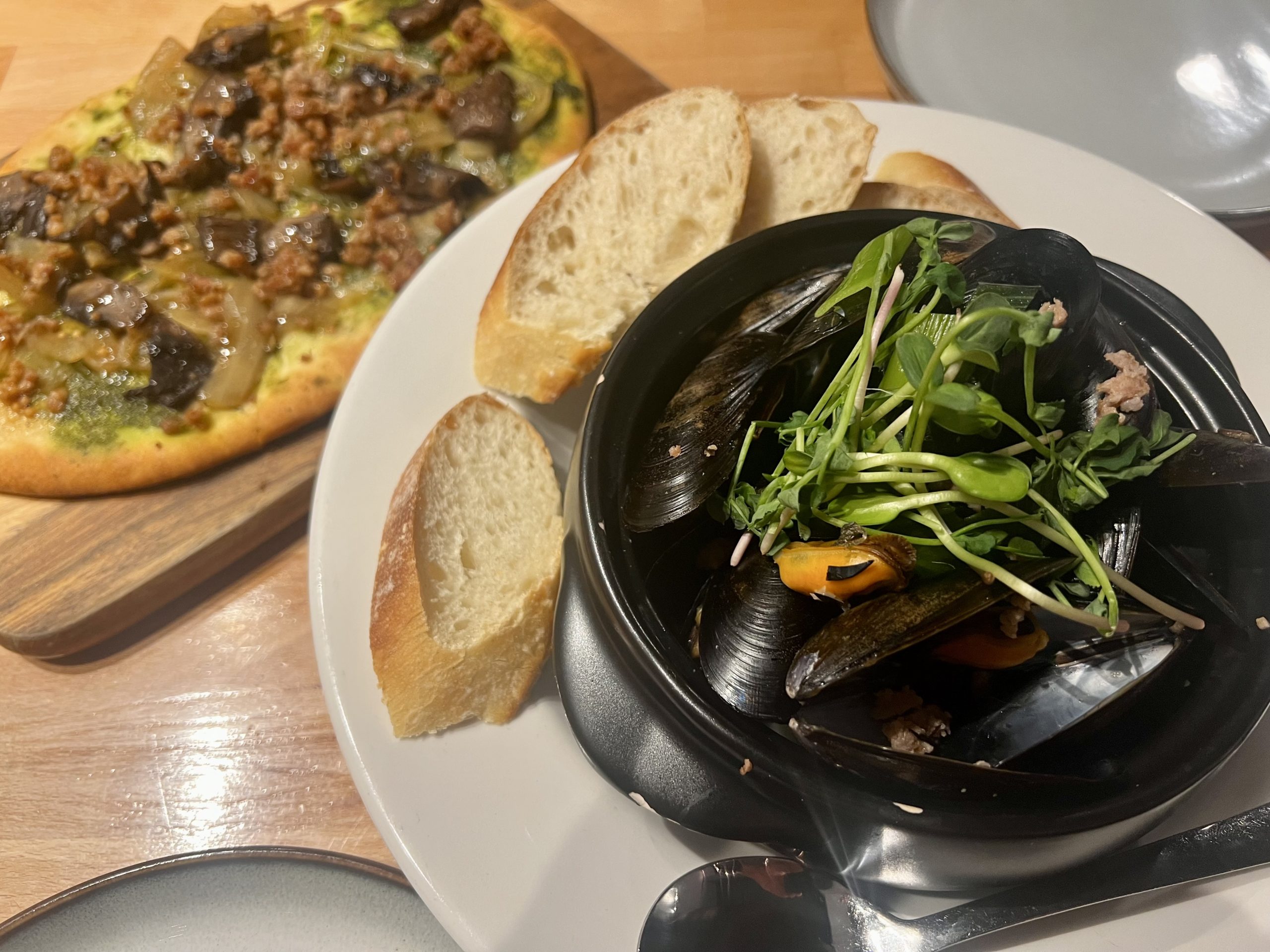
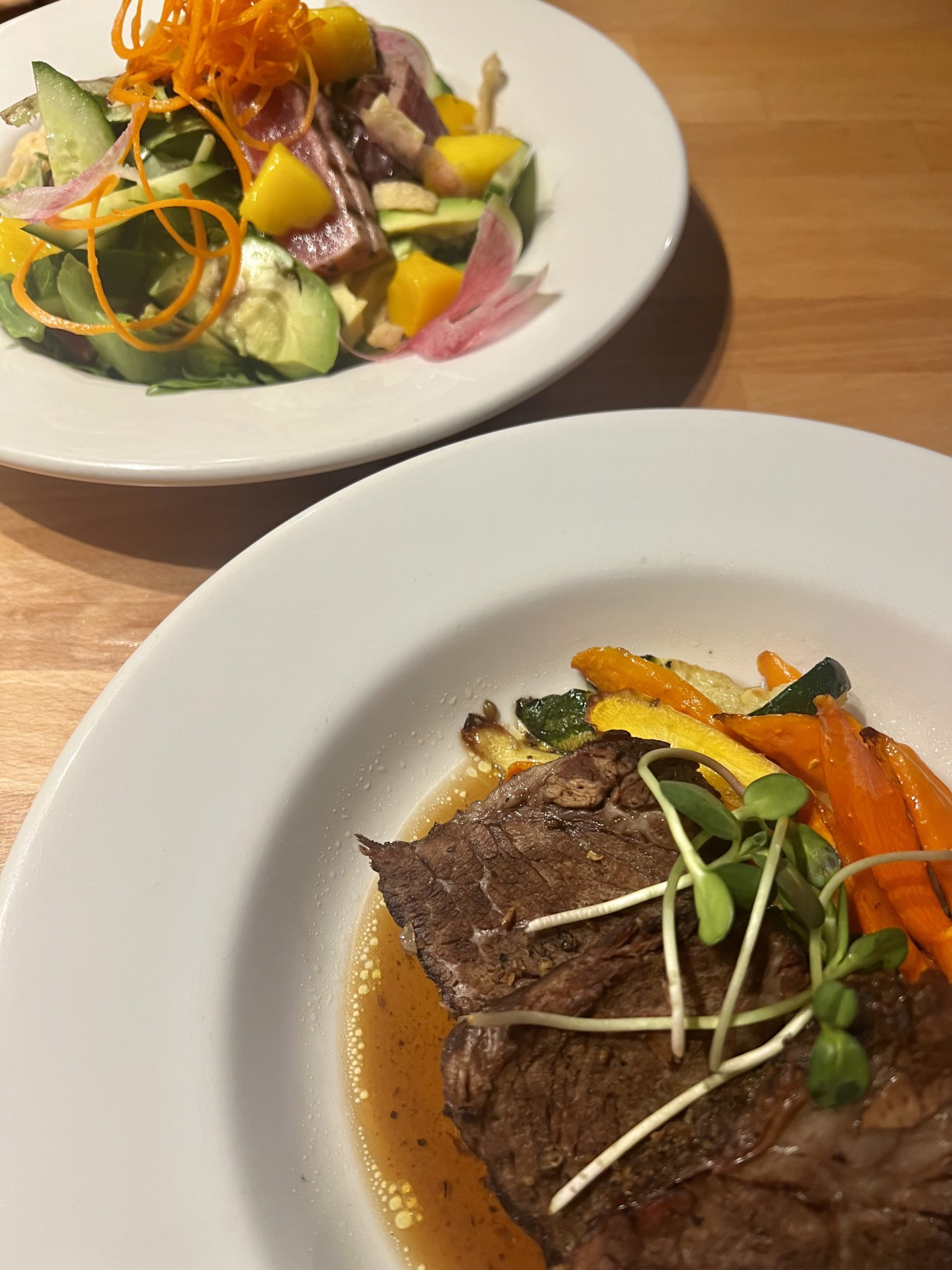
Next stop— Montana Here We Come!
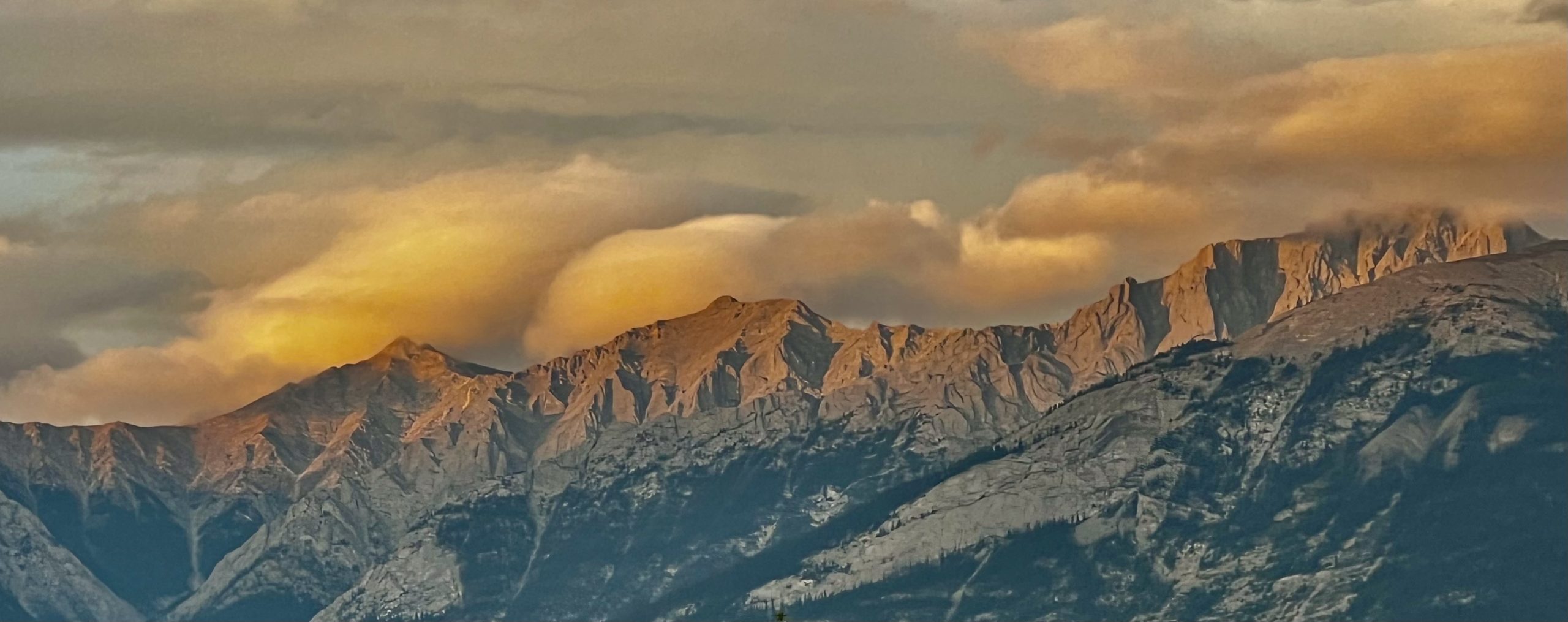
Fascinating — thanks!
Glad you are enjoying the blog!
Spectacular photos and engaging commentary, as usual! Thanks for the great tour. Sounds like you are having fun.
E: Always happy to hear you are enjoying the blog! Thanks B+B